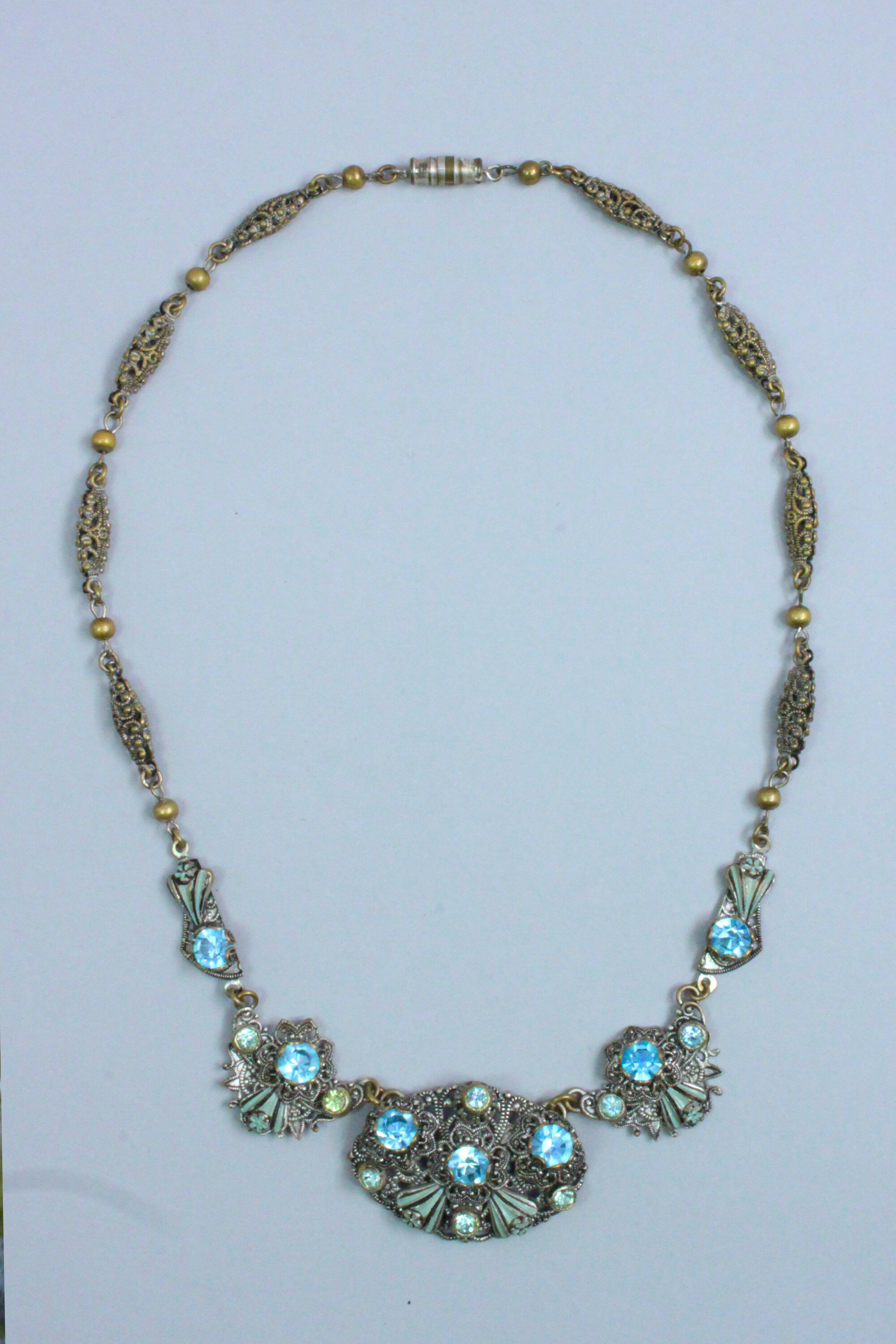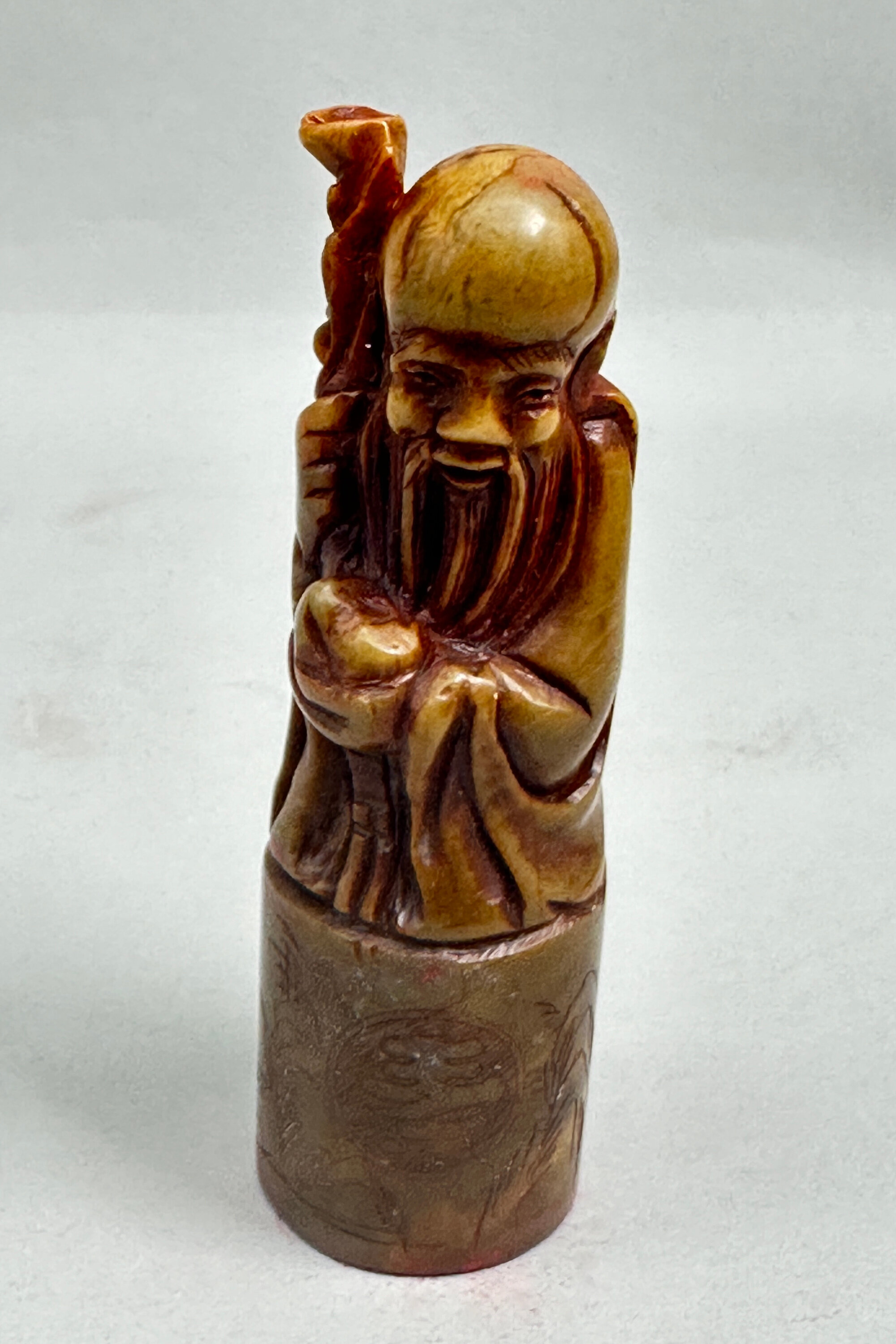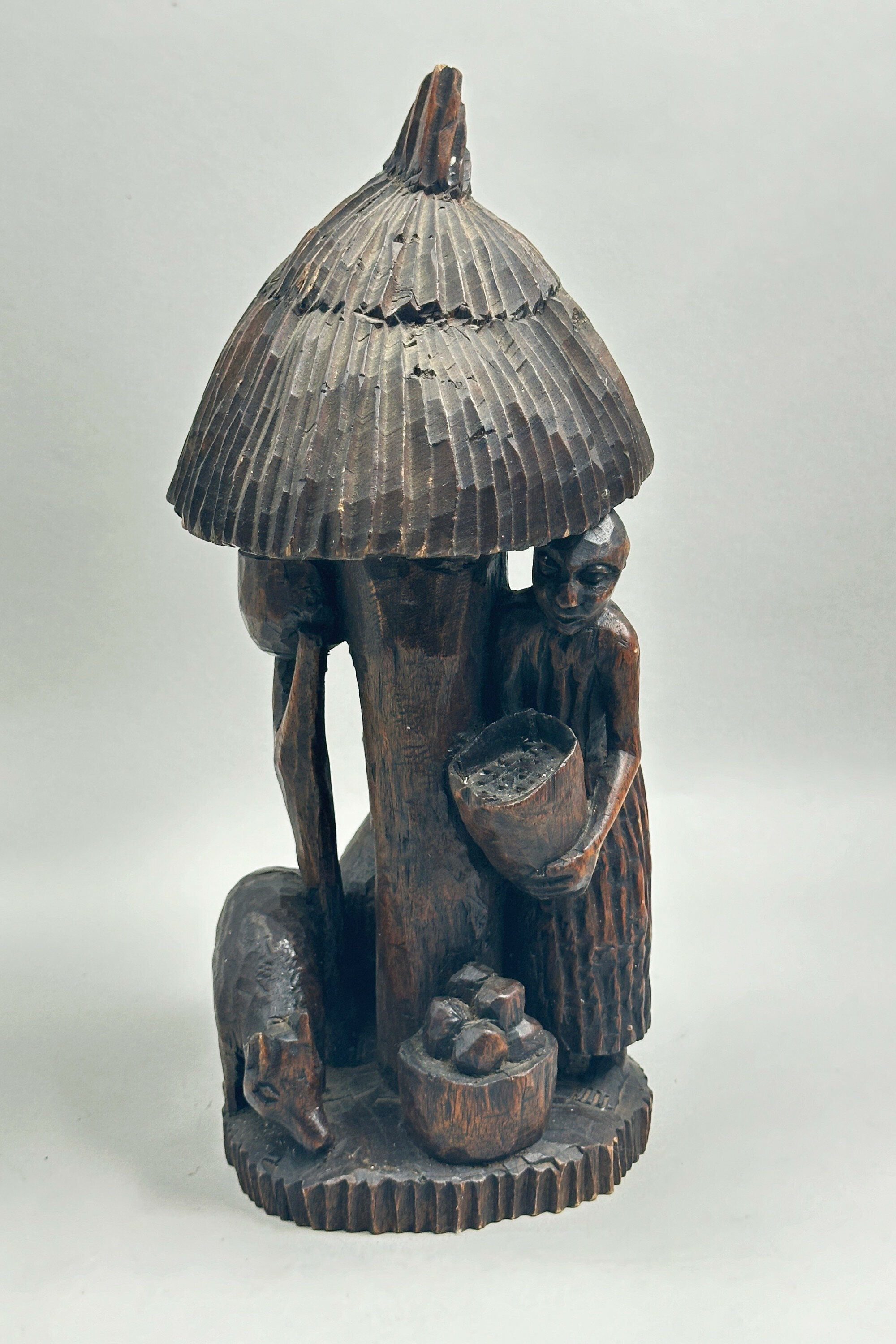
African wood figural group, Guinea c1970
Price: £35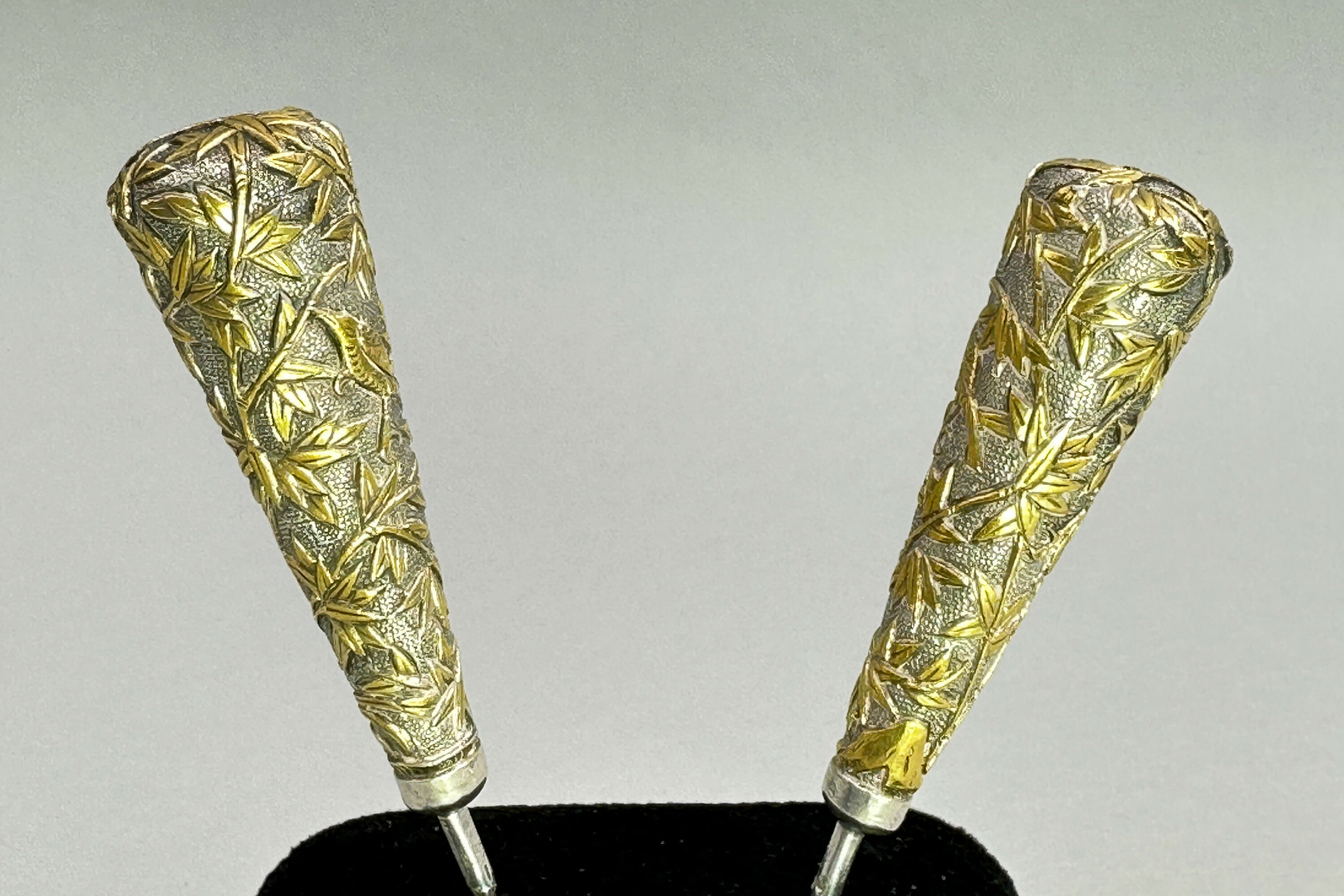
An Unusual Pair of Bradawl Form Sewing Tools, probably Persian C20th
Estimate: £40 – 60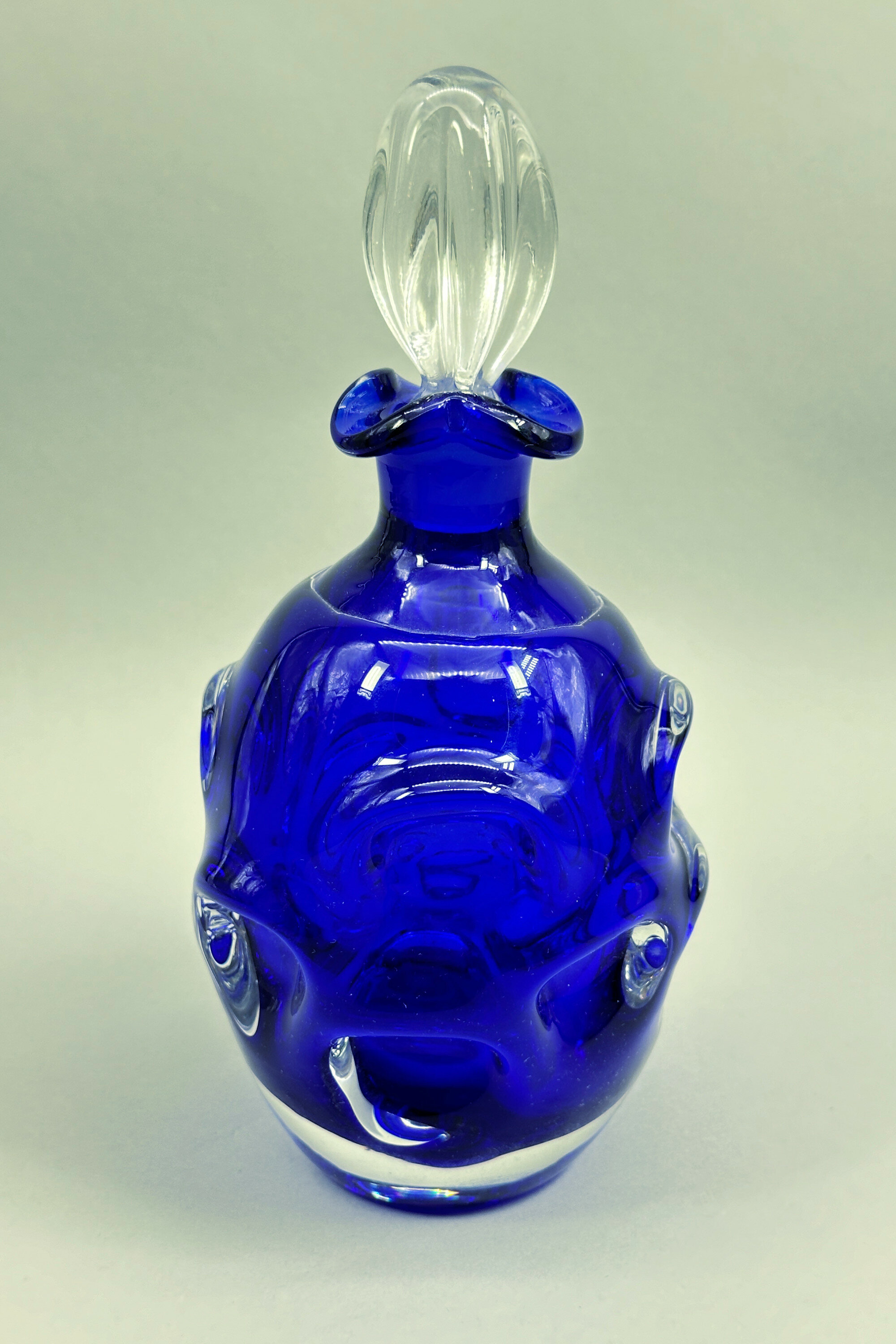
Aseda Glasbruk Blue Glass Bottle and Stopper by Bo Borgstrom, 1960s
Price: £55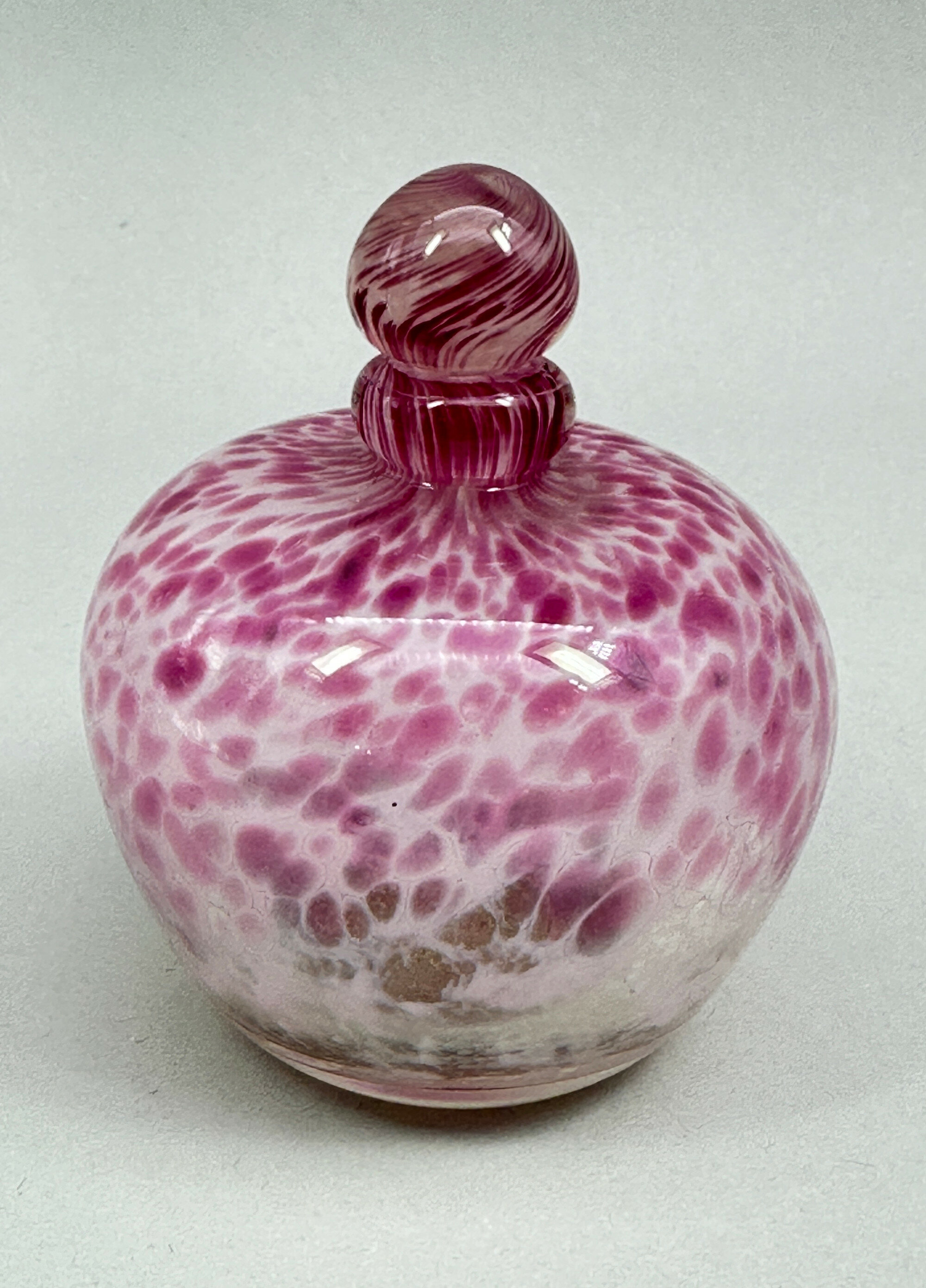
Caithness Glass Perfume Bottle and Stopper, late C20th
Price: £30
Heavy silver curb collar necklace, Mexico 1970s
Price: £125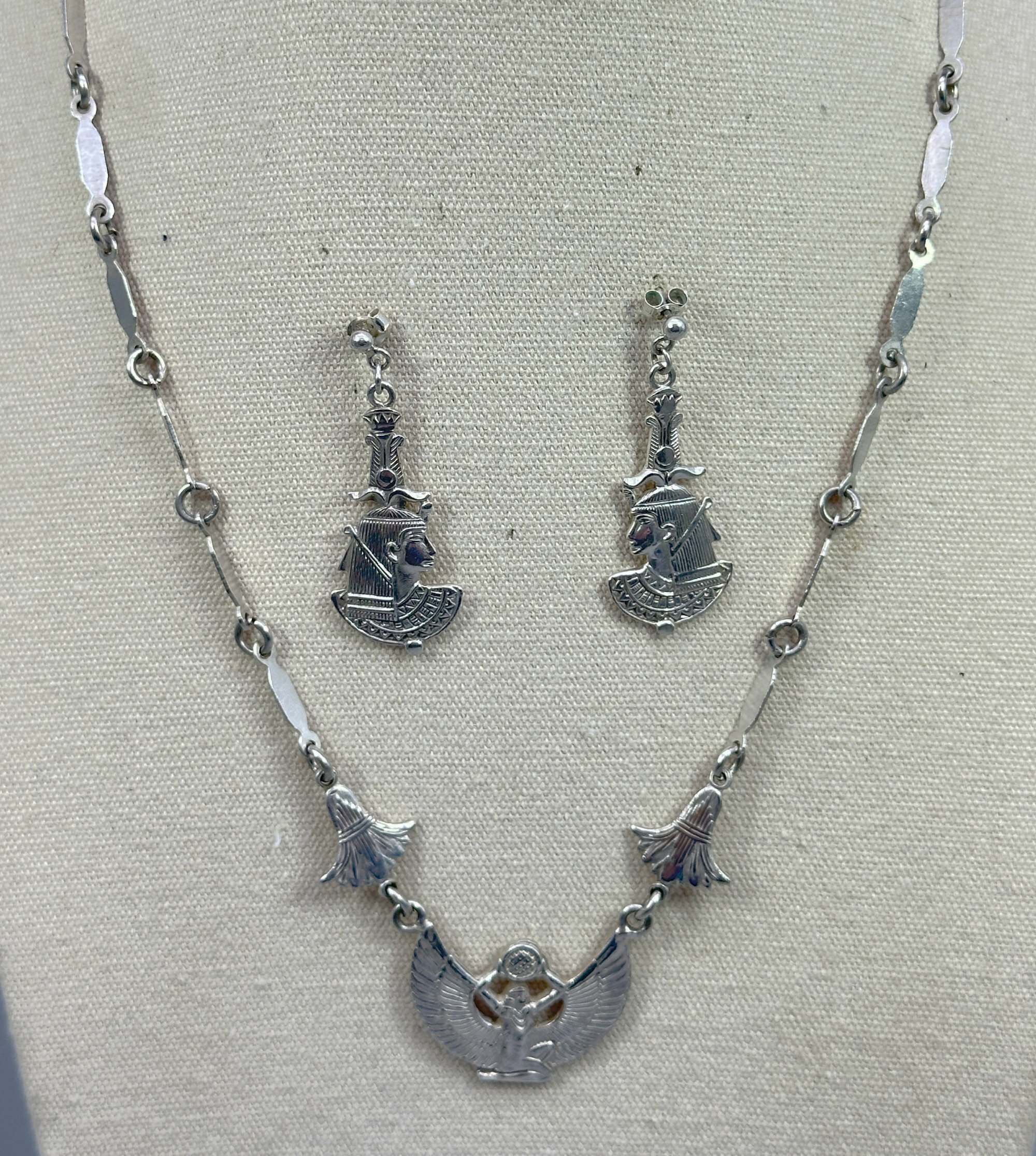
Egyptian Revival suite of a necklace and earrings, 20th century, c1980
Price: £65
Operculum shell demi parure
Price: £35An operculum is a calcareous structure created by many sea snails that serves as a little “trapdoor” to safely close them inside their shell. When, say, the tide goes out, stranding a sea snail too far from the water, the gastropod can draw itself deep into its shell and pull the operculum closed behind it.
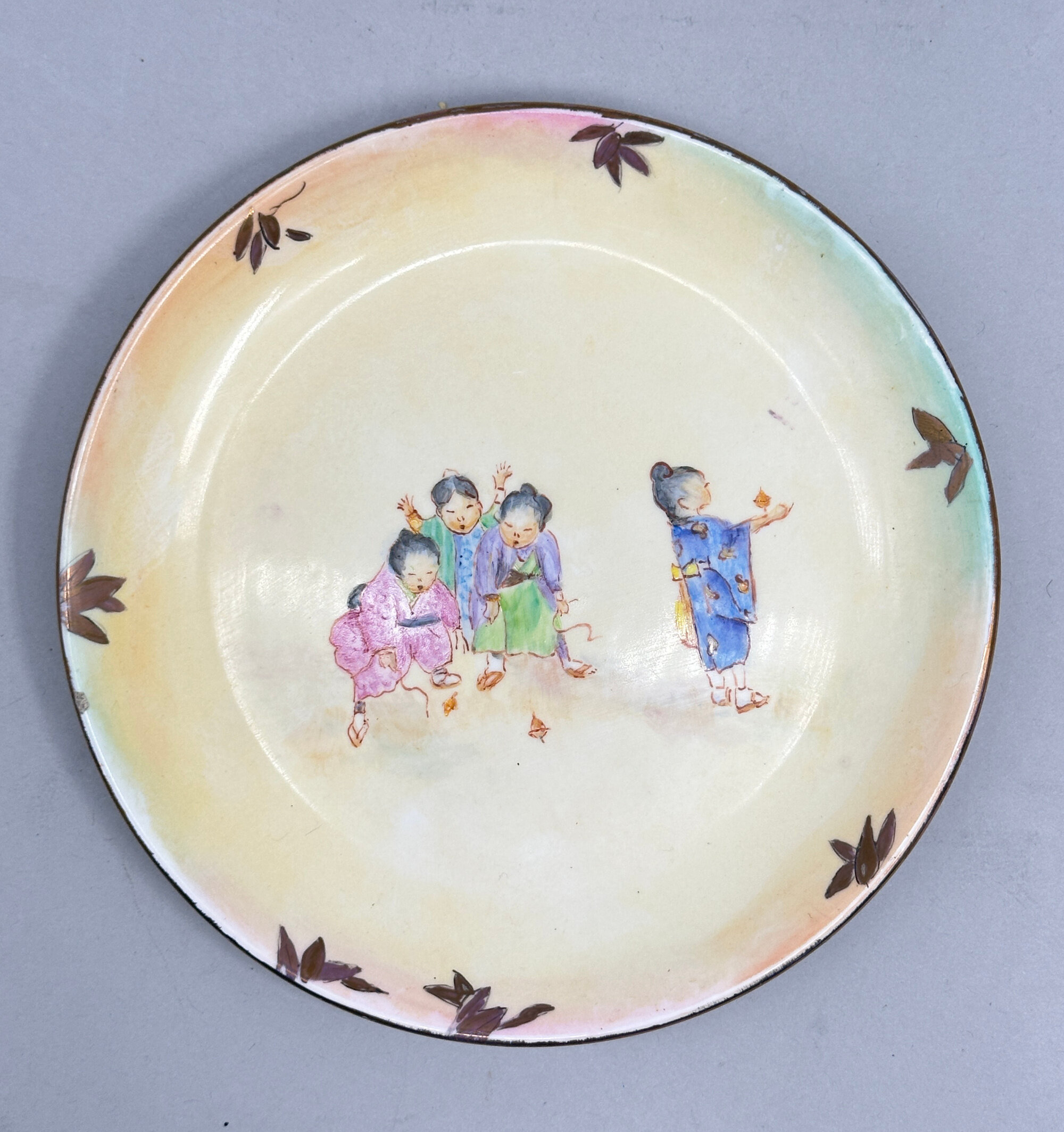
Oriental style ceramic plate, signed Alice Smith, possibly American mid C20th
Price: £10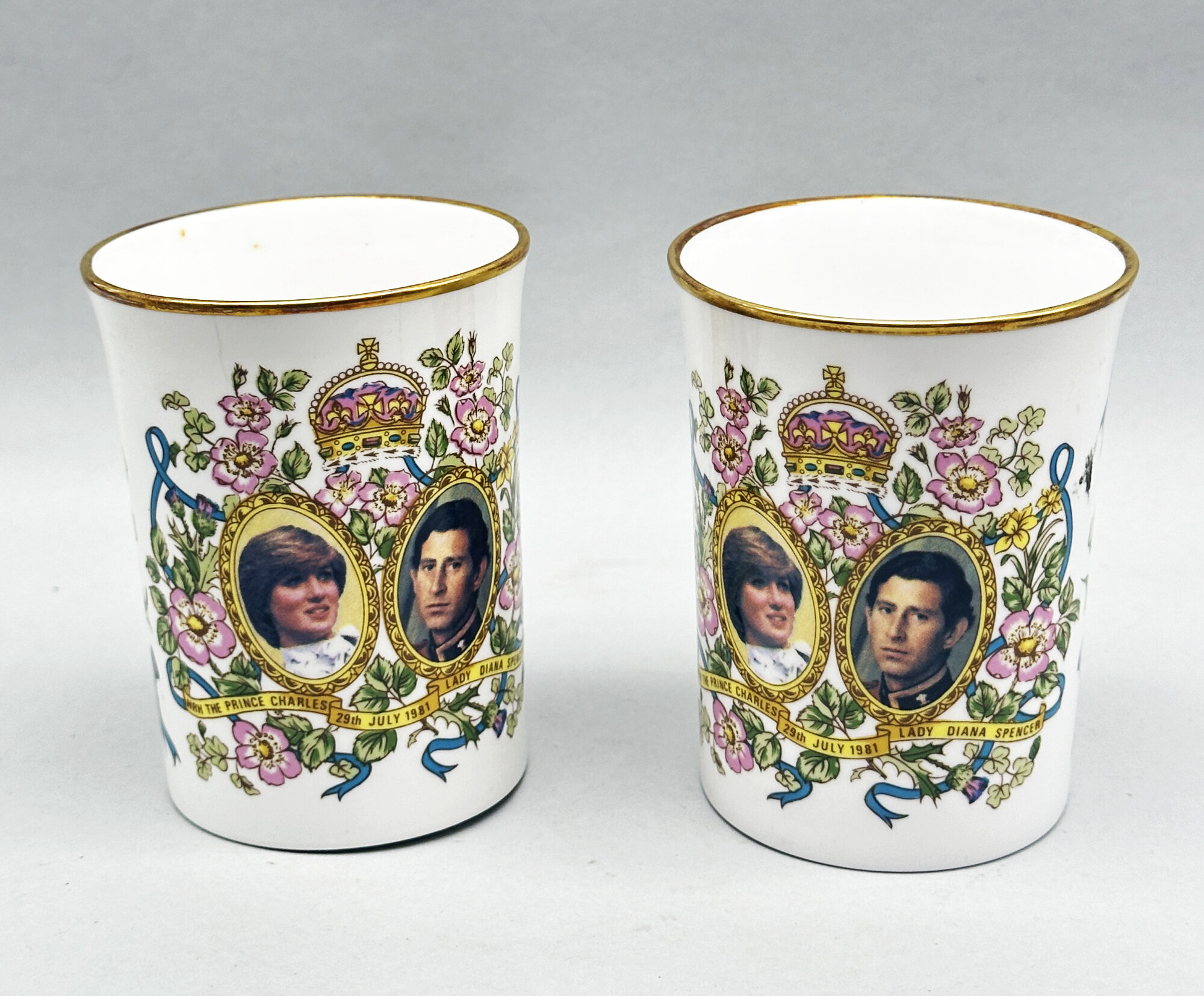
Two Beakers : Wedding of the Prince Charles and Lady Diana Spencer, 1981
Price: £15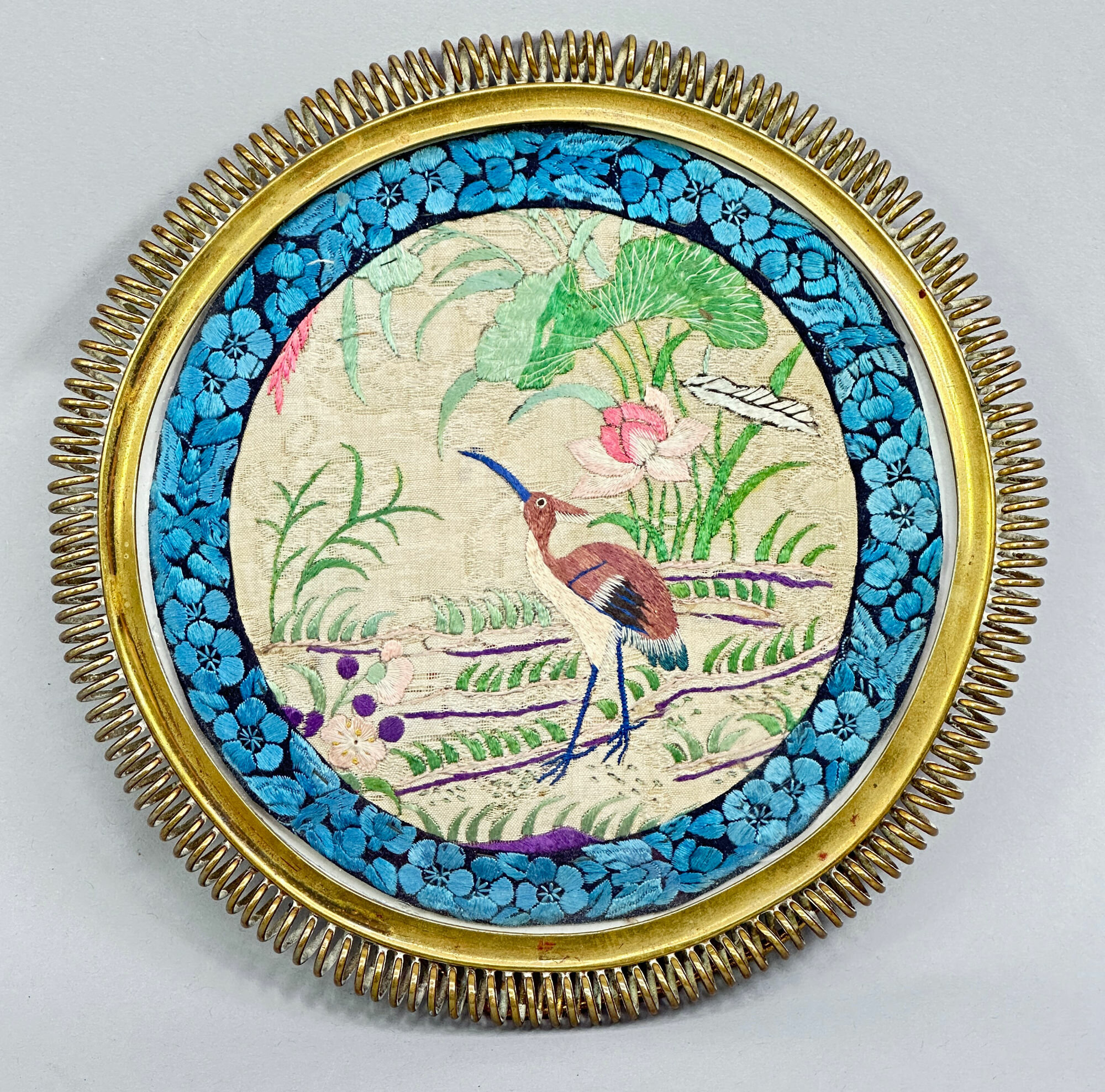
Chinese circular silk textile Panel in later European brass metal Frame, C19th/C20th
Price: £55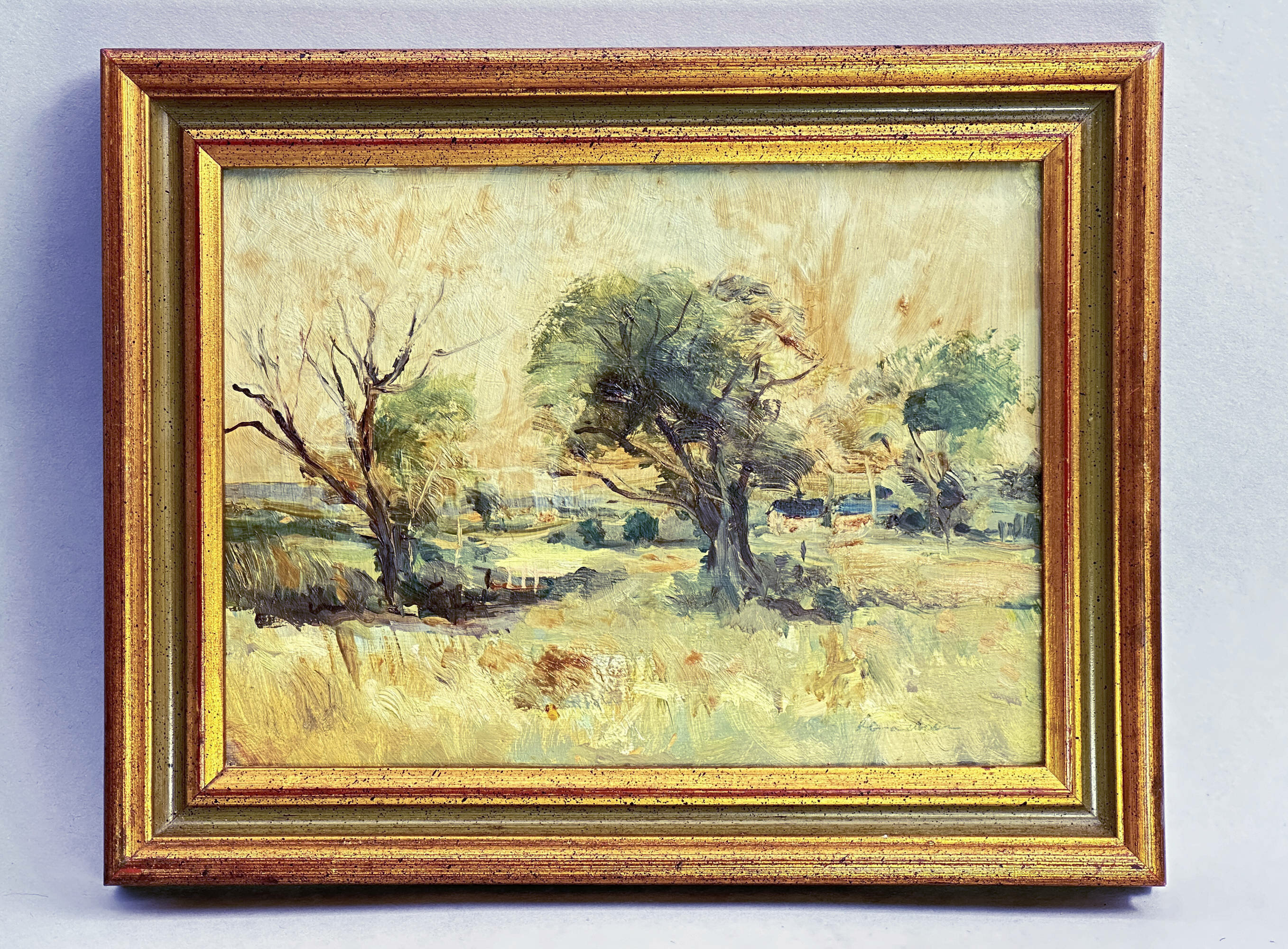
Oil Painting of a landscape scene with trees, framed, C20th
Price: £25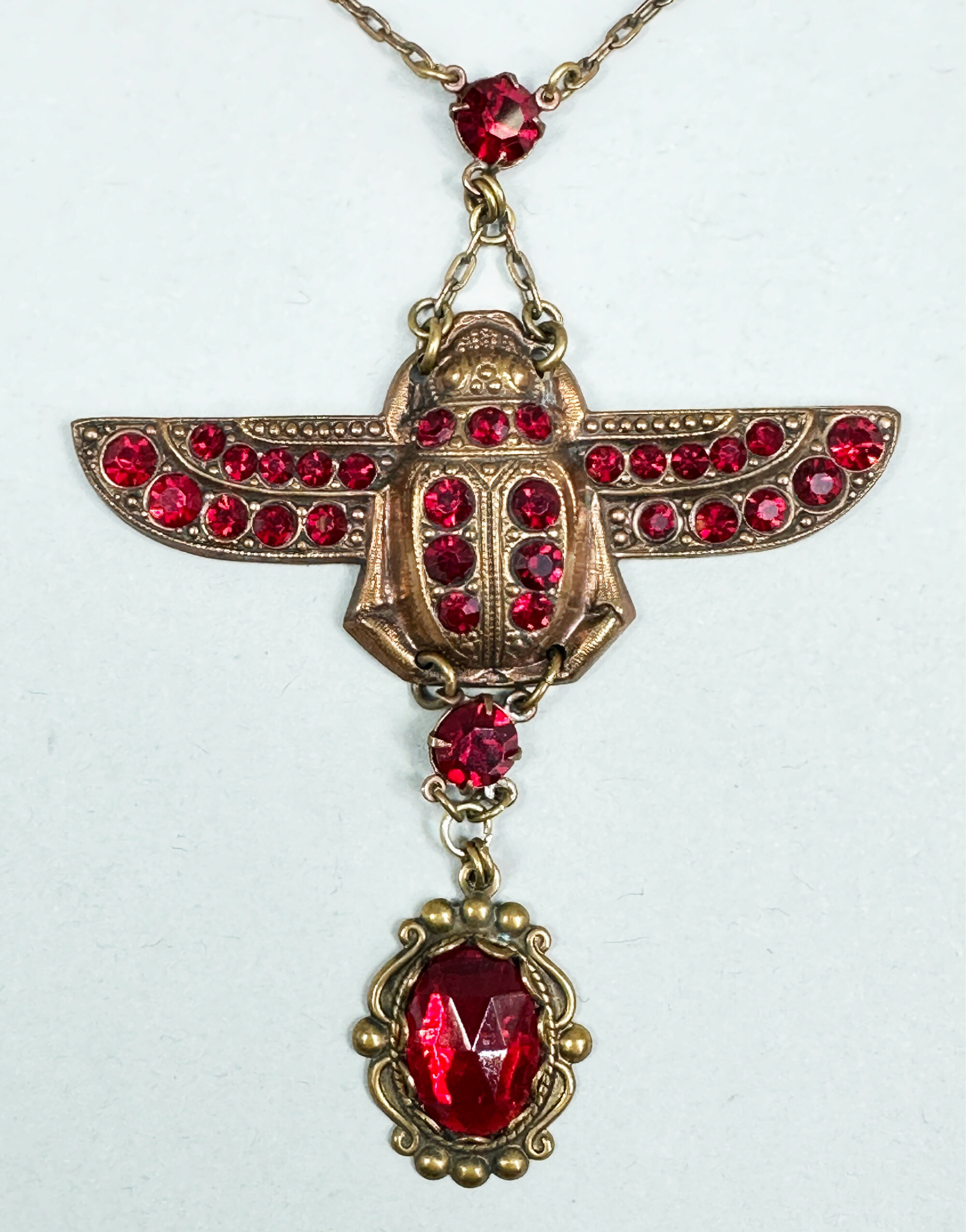
Early Egyptian Revival necklace c1900
Price: £65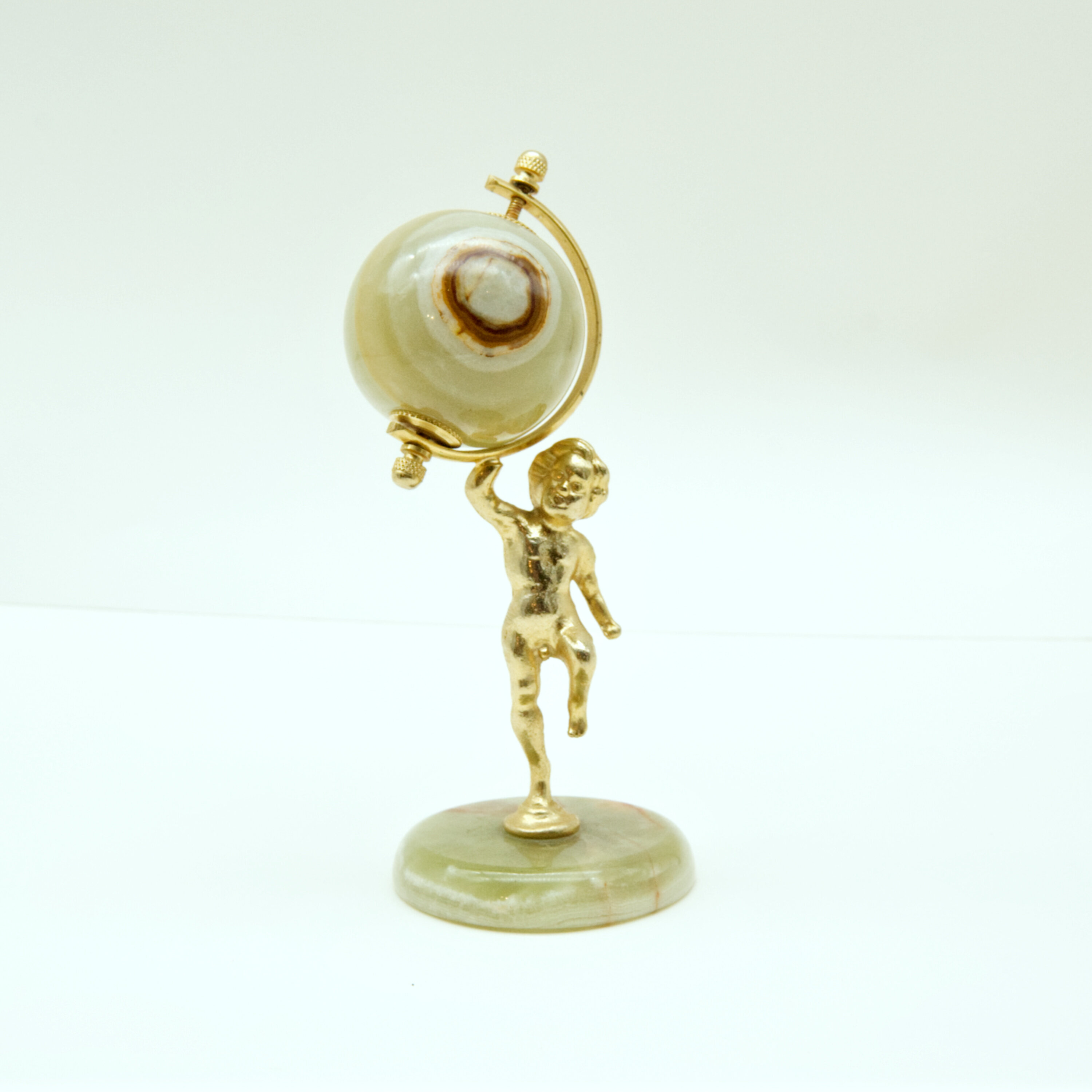
A gilt metal and onyx figure of a Cherub holding a Globe 1960s
Price: £45
Art Deco Style Bagley Glass Vase with fin type handles 1930s
Price: £45
Large tooled leather bag with Moroccan Designs 1970s
Price: £85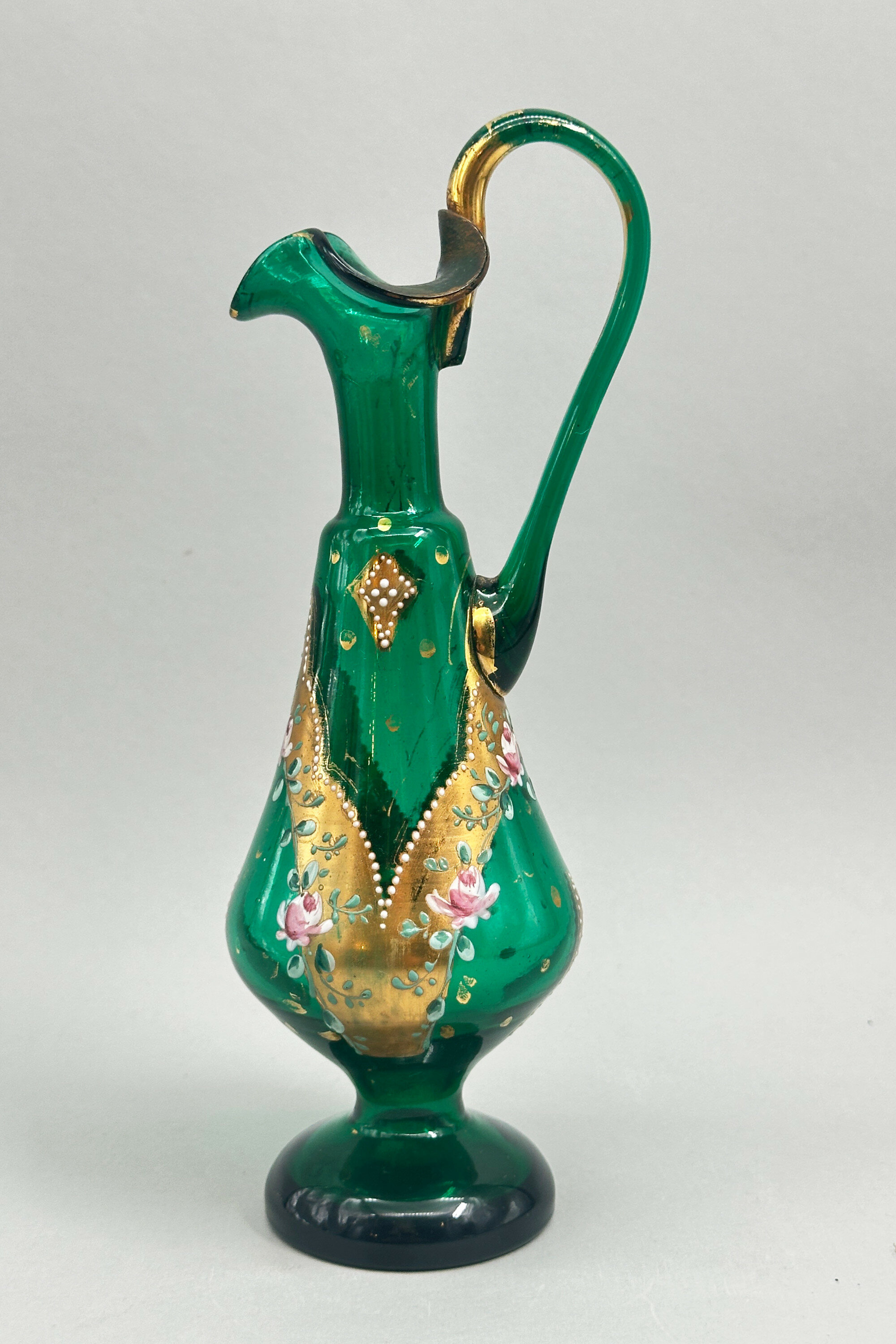
Bohemian Green Glass Moser style Ewer, late C19th
Price: £35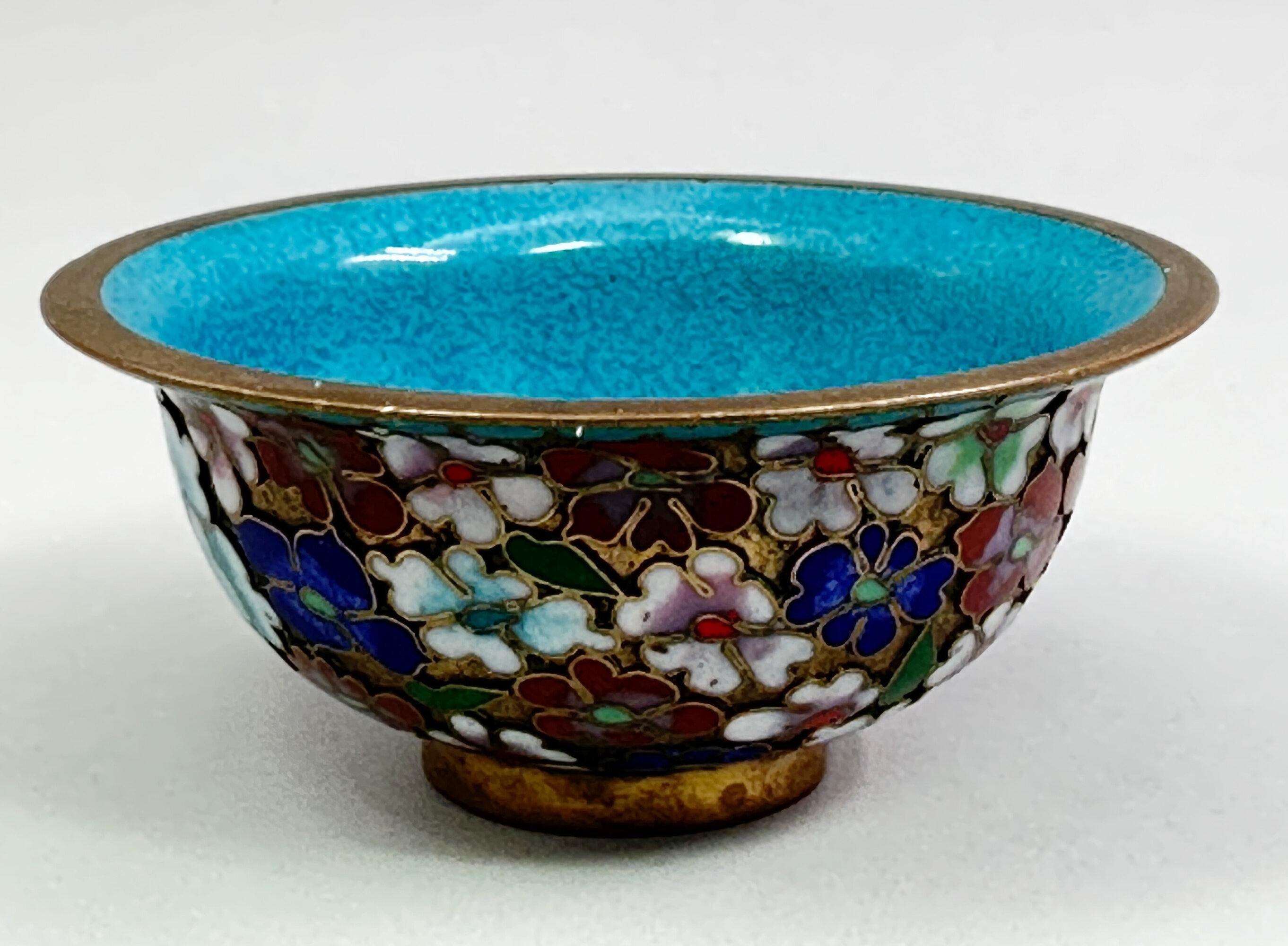
Small Chinese Gilt Ground Cloisonné Bowl, C20th
Price: £35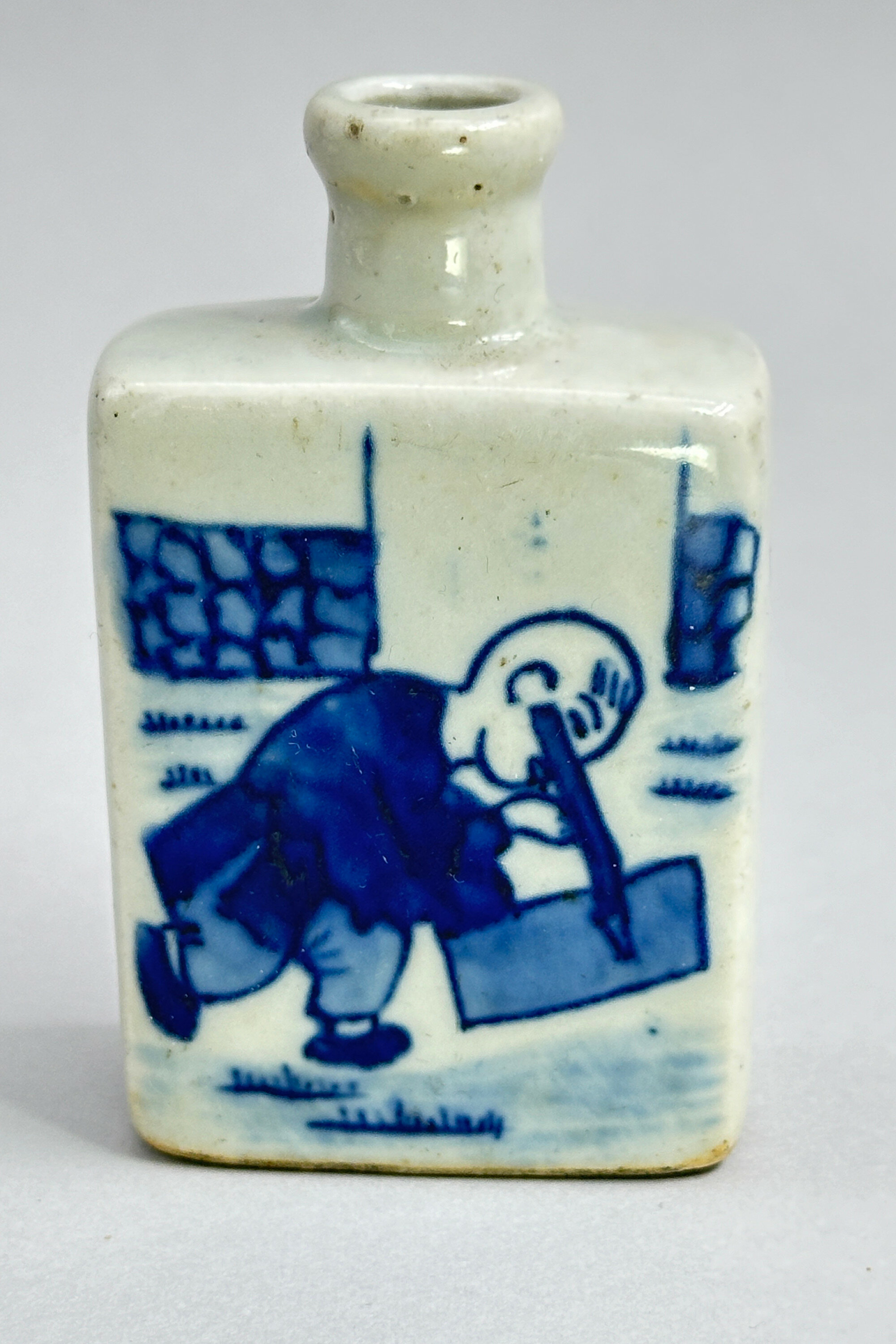
Chinese Blue and White Snuff Bottle circa 1900
Price: £45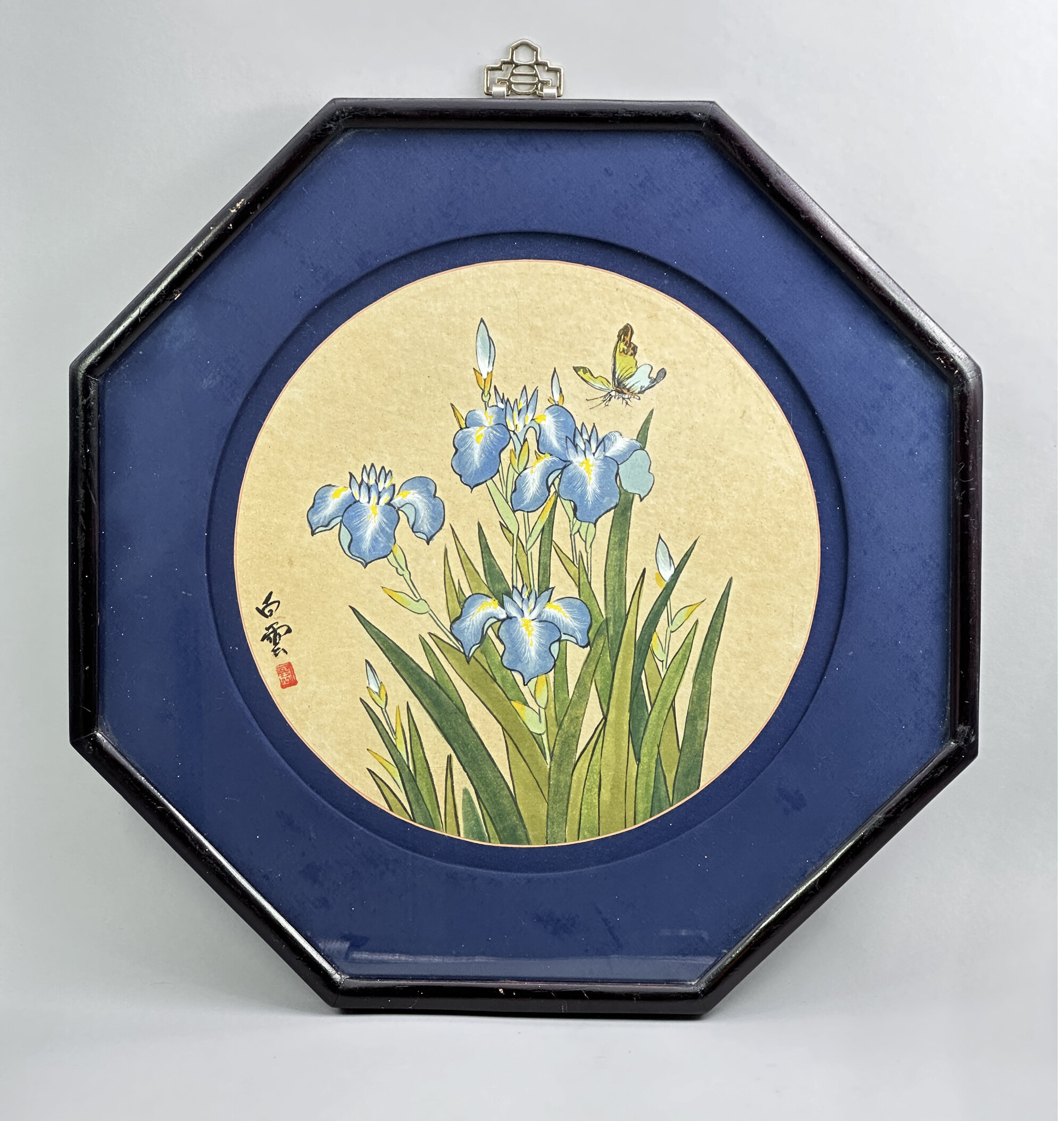
Japanese Gouache Painting of Flowering Lotus, signed and framed, C20th
Price: £45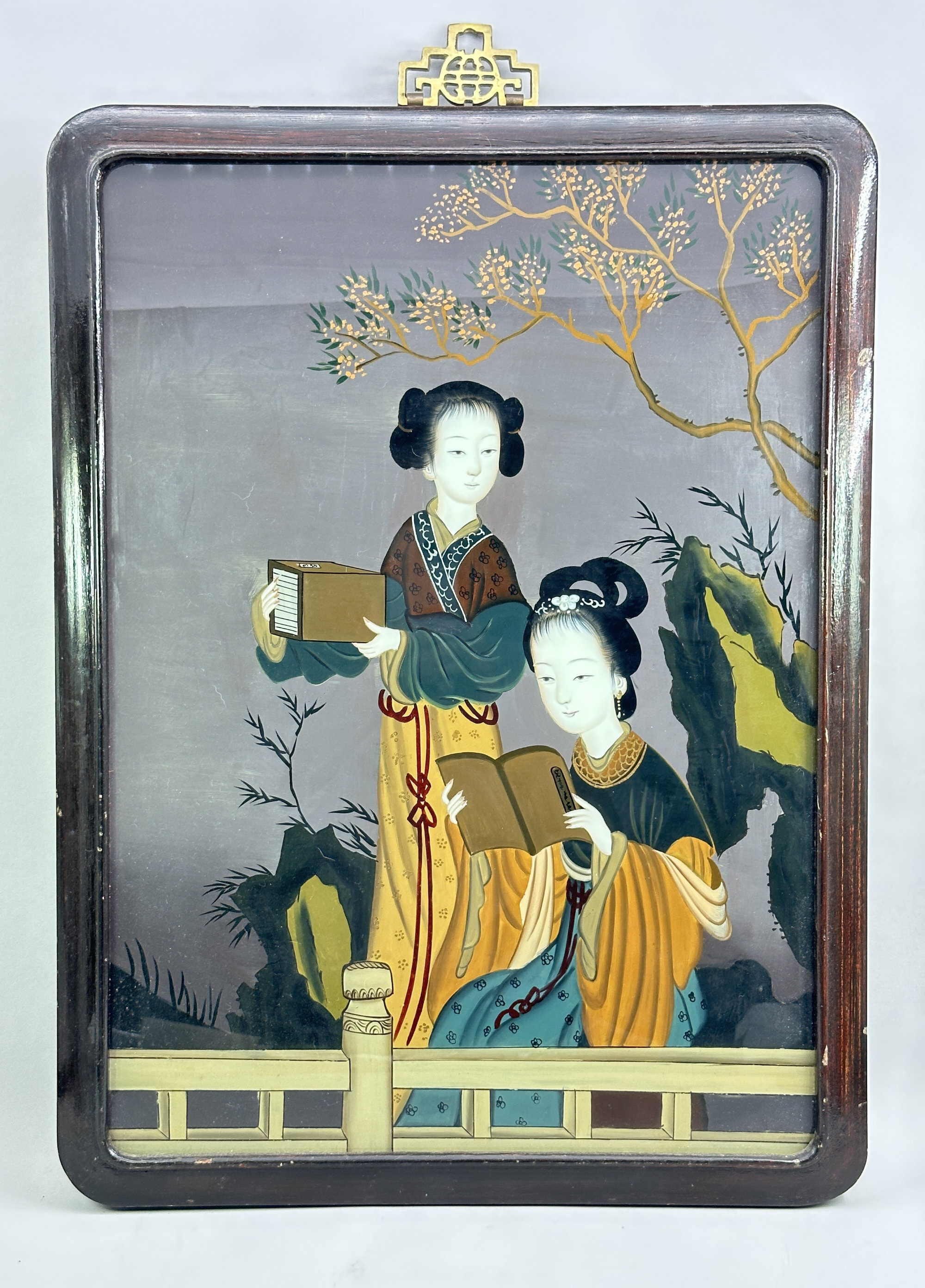
Chinese Reverse Glass Painting of Two Ladies on a Garden Terrace, first half C20th
Price: £240
Chinese Silver Bangle with Dragon Heads, C20th
Price: £45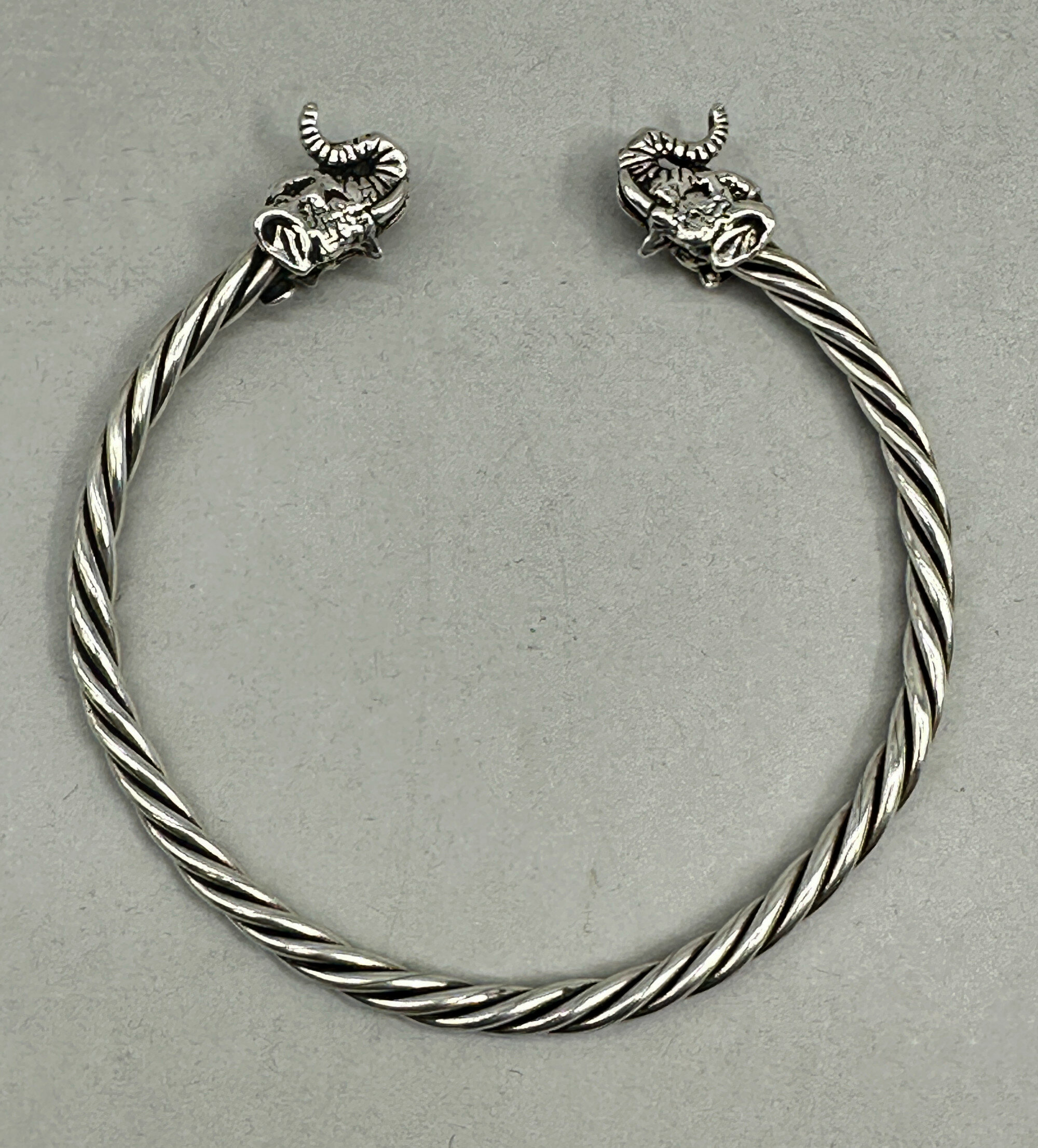
Balinese Silver Bangle with Elephant Heads, 1980s
Price: £45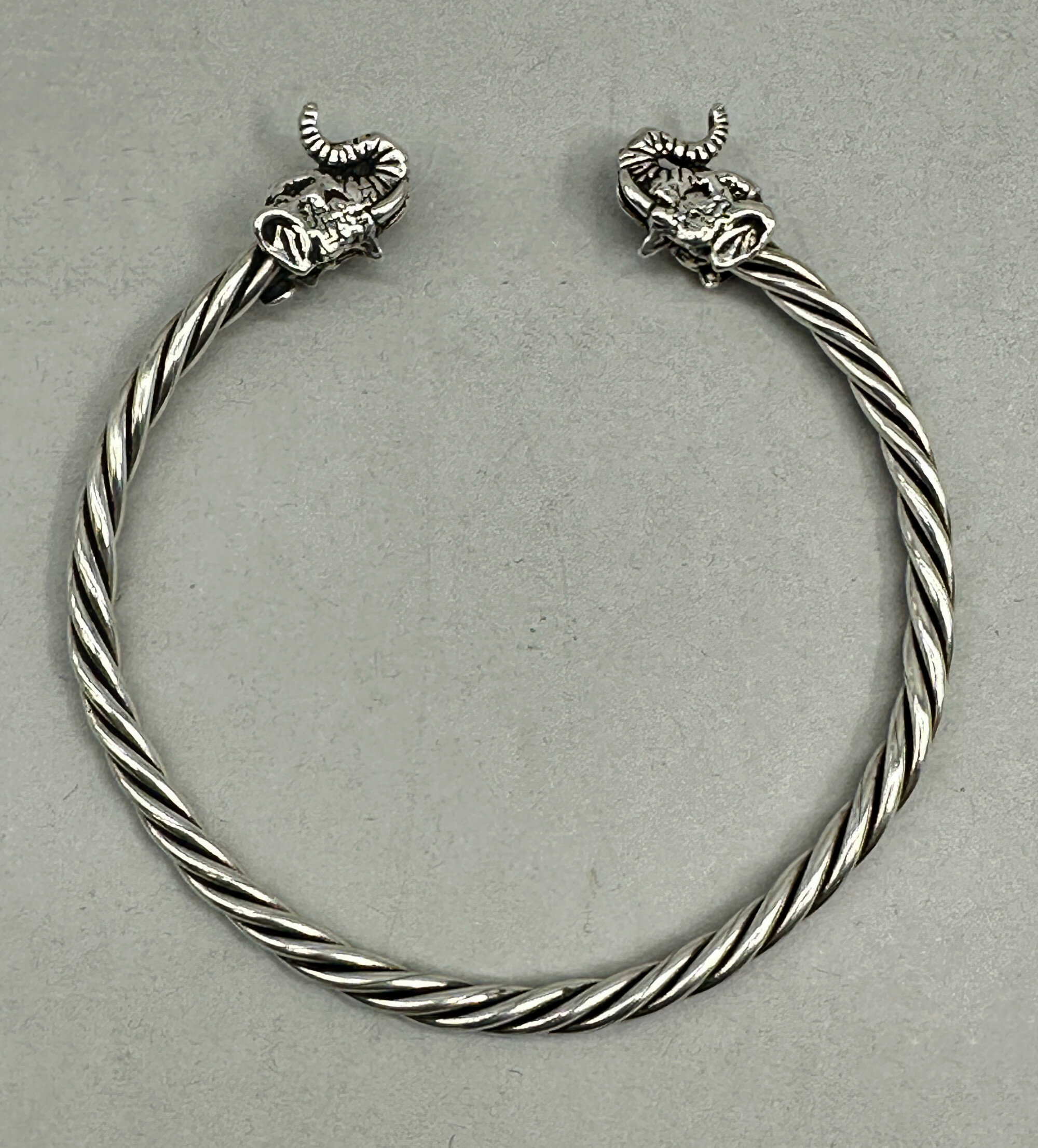
Balinese Silver Bangle with Elephant Heads, 1980s
Price: £45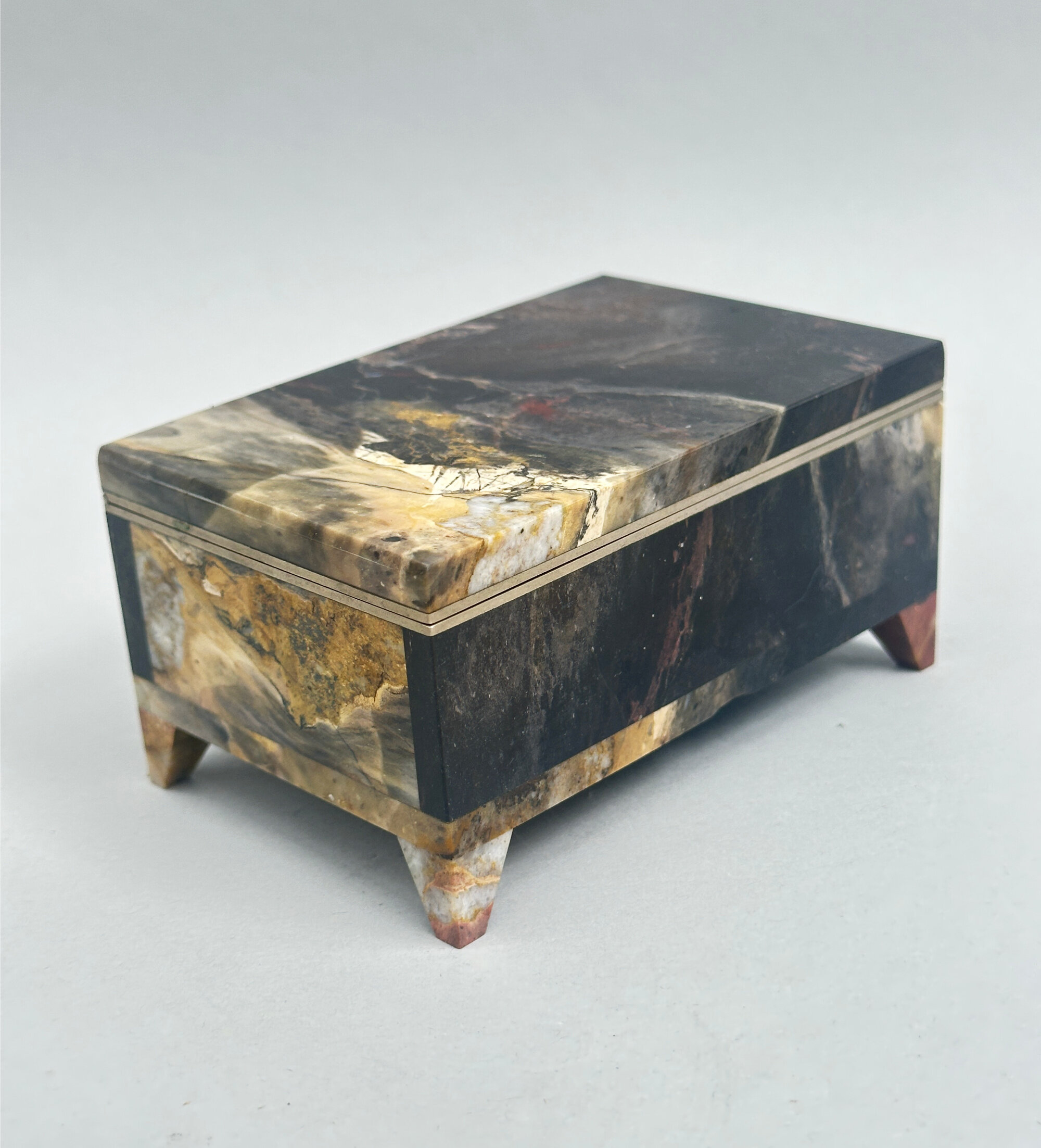
Rectangular Box and Cover, Basanite Jasper, C20th
Price: £95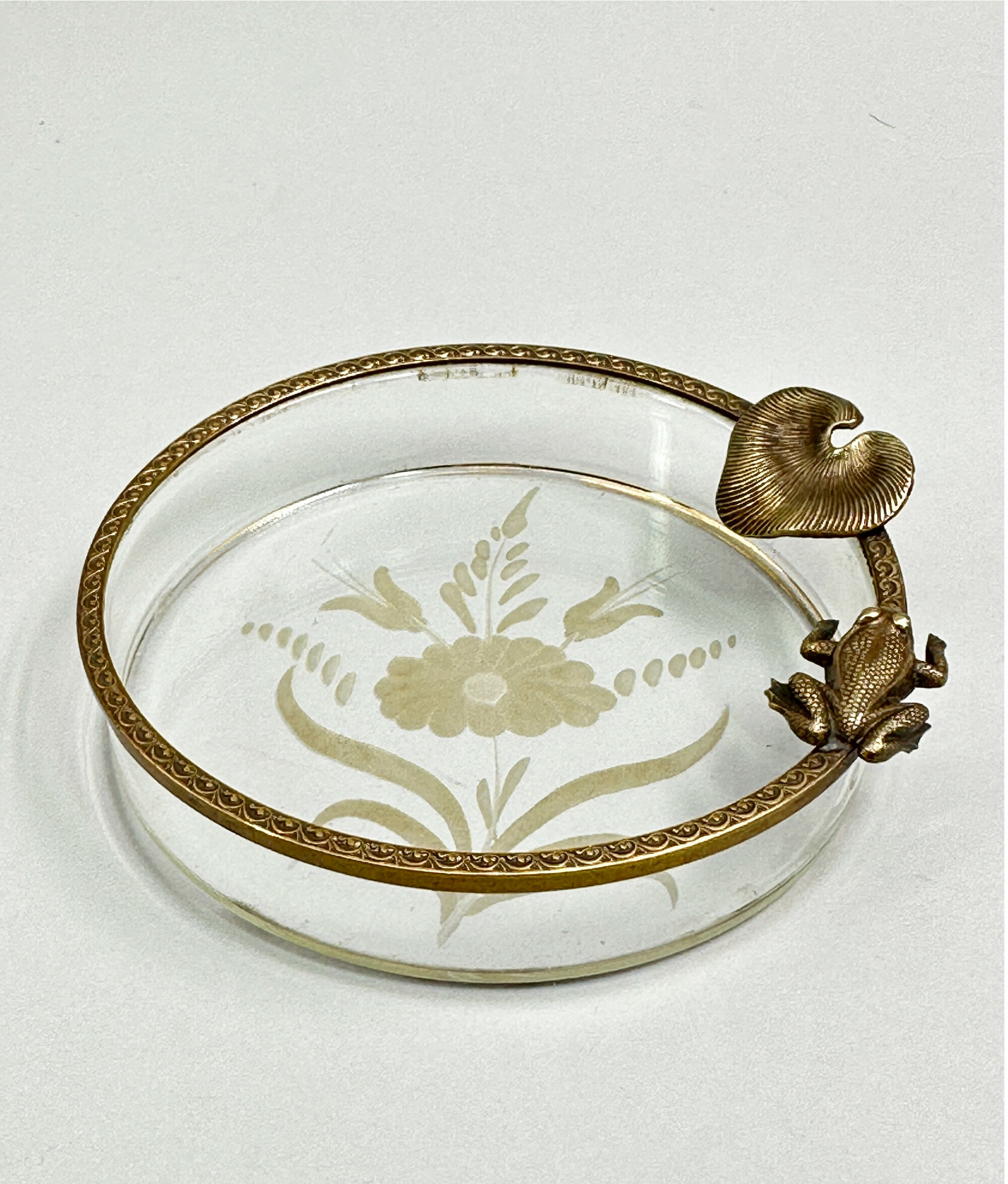
Fine Quality engraved French Glass Dish with naturalistic Ormolu Mounts, early C20th
Price: £25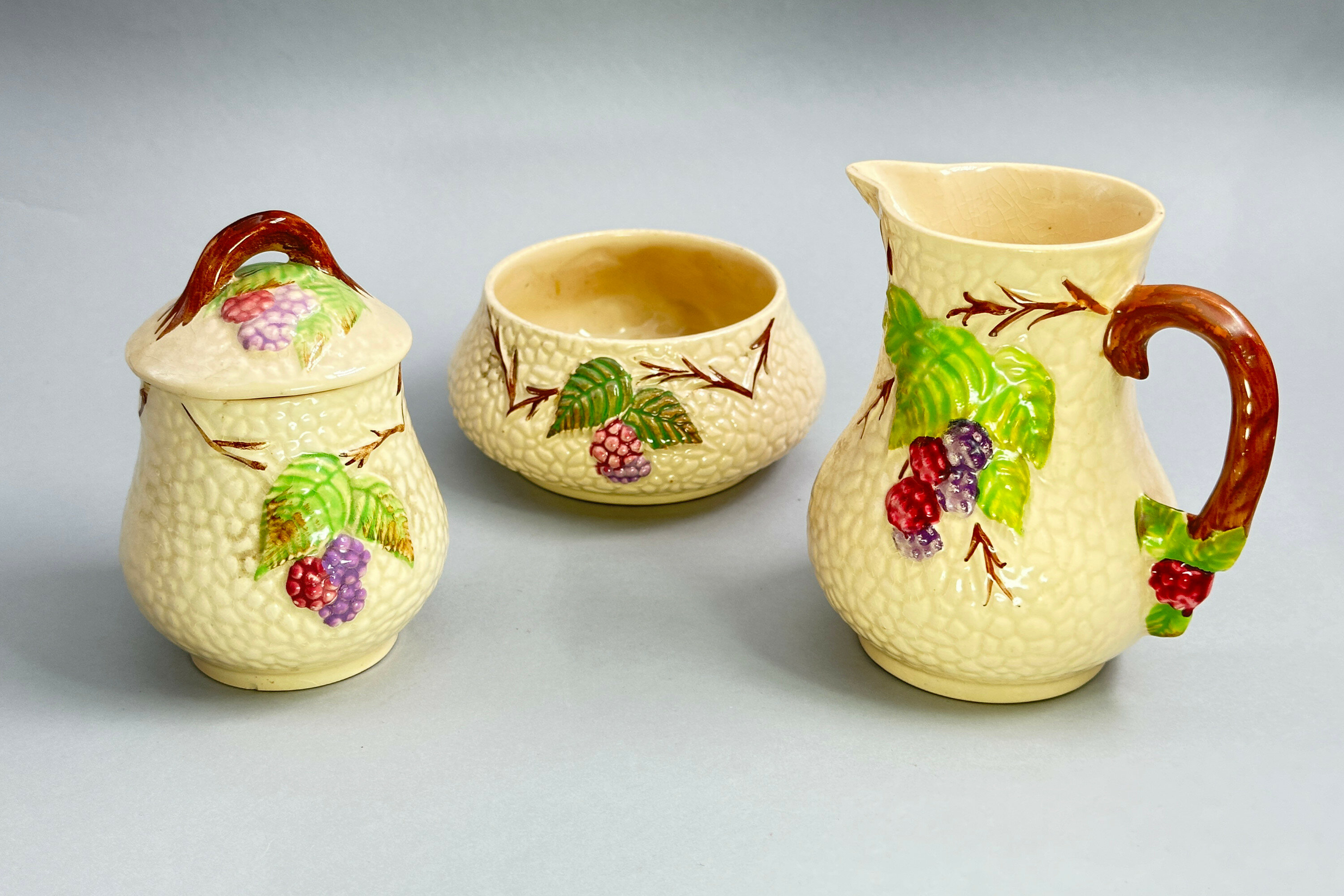
Set of three Wade Bramble Pattern teaware items, 1950s
Price: £25Wade Ceramics Ltd was a manufacturer of porcelain and earthenware, headquartered in Stoke-on-Trent, England. Founded in 1867, it was run by various members of the Wade family until the death of George Anthony Wade in 1987 after which there was a succession of management buyouts. Despite substantial investment in 2009, the firm eventually went into administration in 2022. Wade produced a wide variety of ceramics, including the well known Wade Whimsies animal figurines. A pair of Art Deco green glazed ‘salts’ are also included in this sale. The ‘Bramble’ design was created in the 1950s and a wide variety of tea service shapes were produced in the pattern. Collectors today can attempt to assemble examples from the whole of the range, towards which these three pieces might provide some assistance.
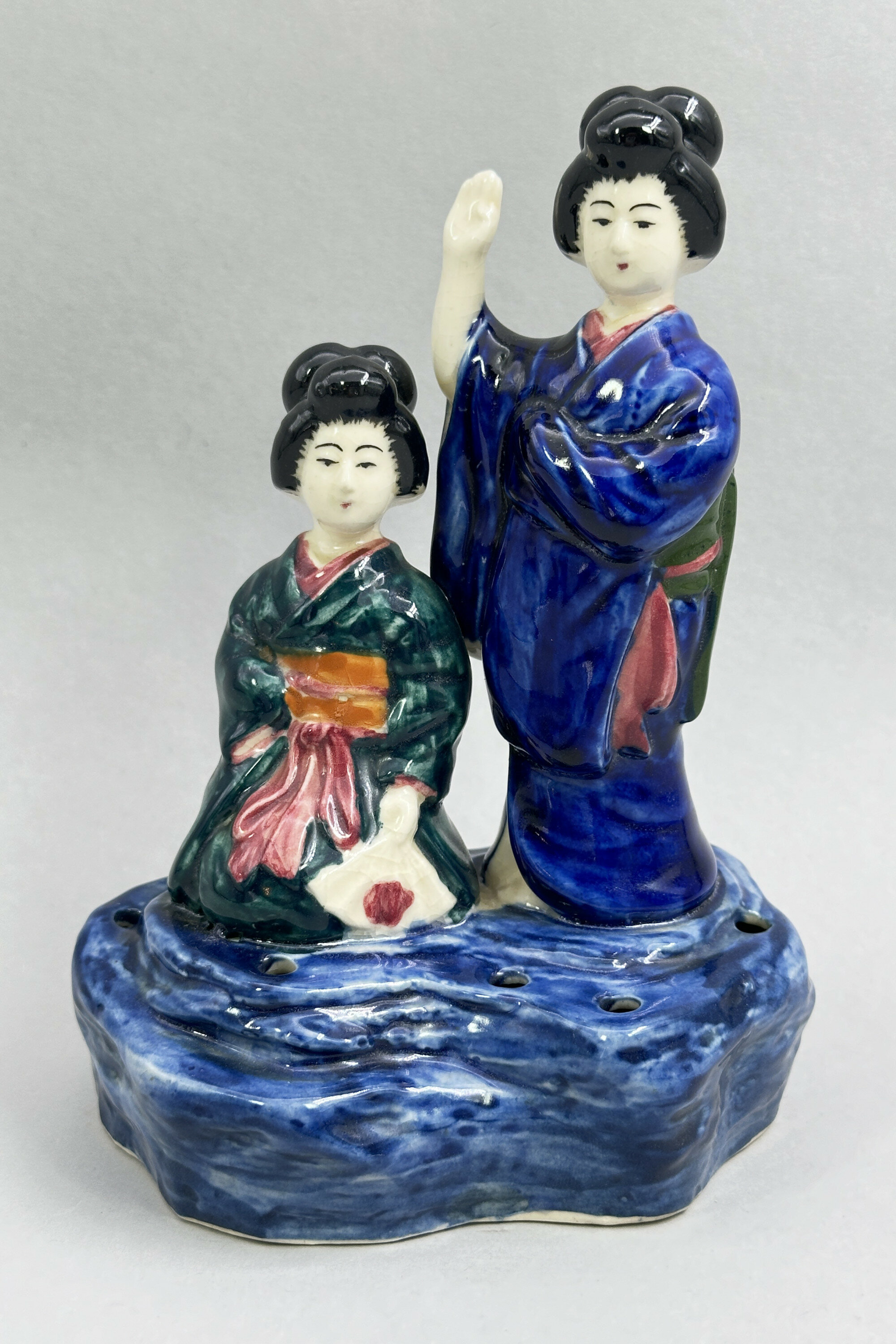
Japanese Ceramic Figural Group of two Geisha, late C19th
Price: £25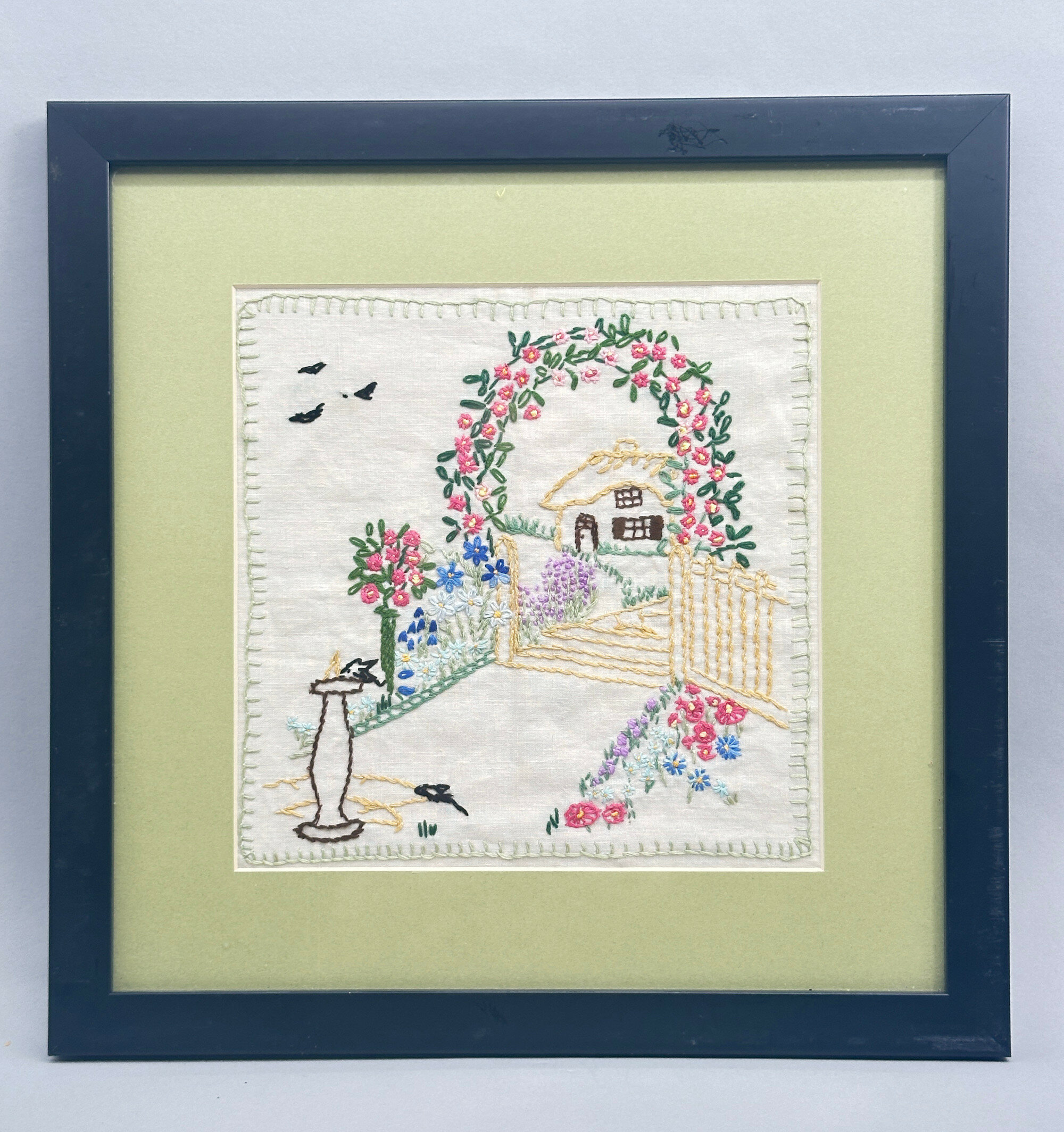
Vintage Needlepoint Picture of a Garden Scene, framed, second half C20th
Price: £25
Pair of Victorian marcasite and silver earrings
Price: £25
Heavy brass and enamel collar necklace in the manner of Albert Gustav Bunge (1893 - 1967)
Price: £35
Two complementary Bracelets in a Greek Key design
Price: £45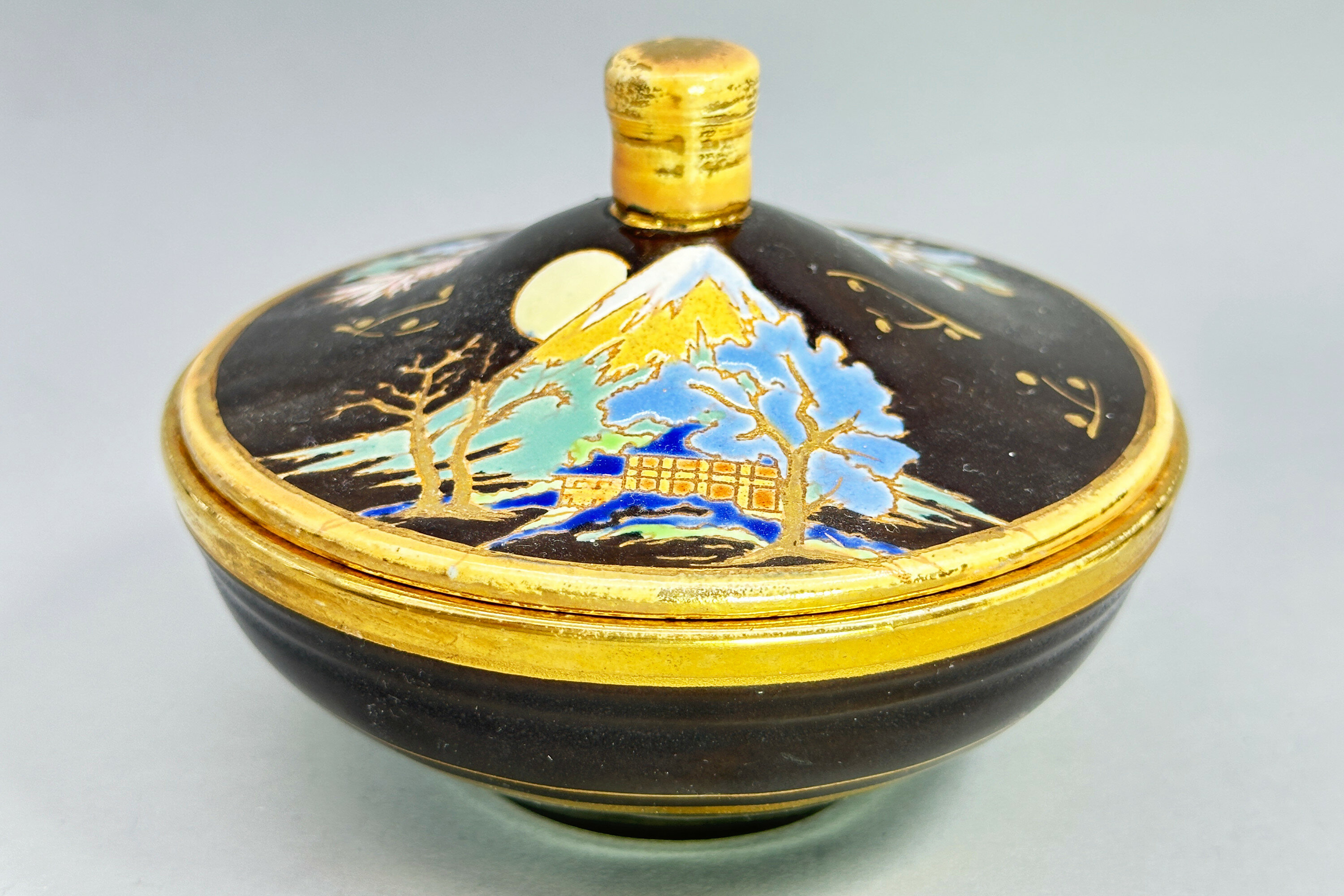
Cosmetic Box with Japonaiserie Decoration, Boch Freres, early C20th
Price: £45The firm Boch Freres Keramis was founded by Eugene and Victor Boch and their brother-in-law, Jean Baptiste Nothomb, in 1841 and was located in La Louviere in eastern Belgium. In 1906 Charles Catteau joined the company as artistic director and was responsible for a new and wide ranging series of designs, some under the influence of Japonisme, transitioning the company from producing utilitarian objects to highly decorative ceramics. His work can clearly be seen here in a piece which appears to be quite unusual. Both the form and the decoration reflect early twentieth century fashion in the clean lines and the images inspired by Japan. There is a hint of the aesthetic movement here producing an object of great attraction and interest.
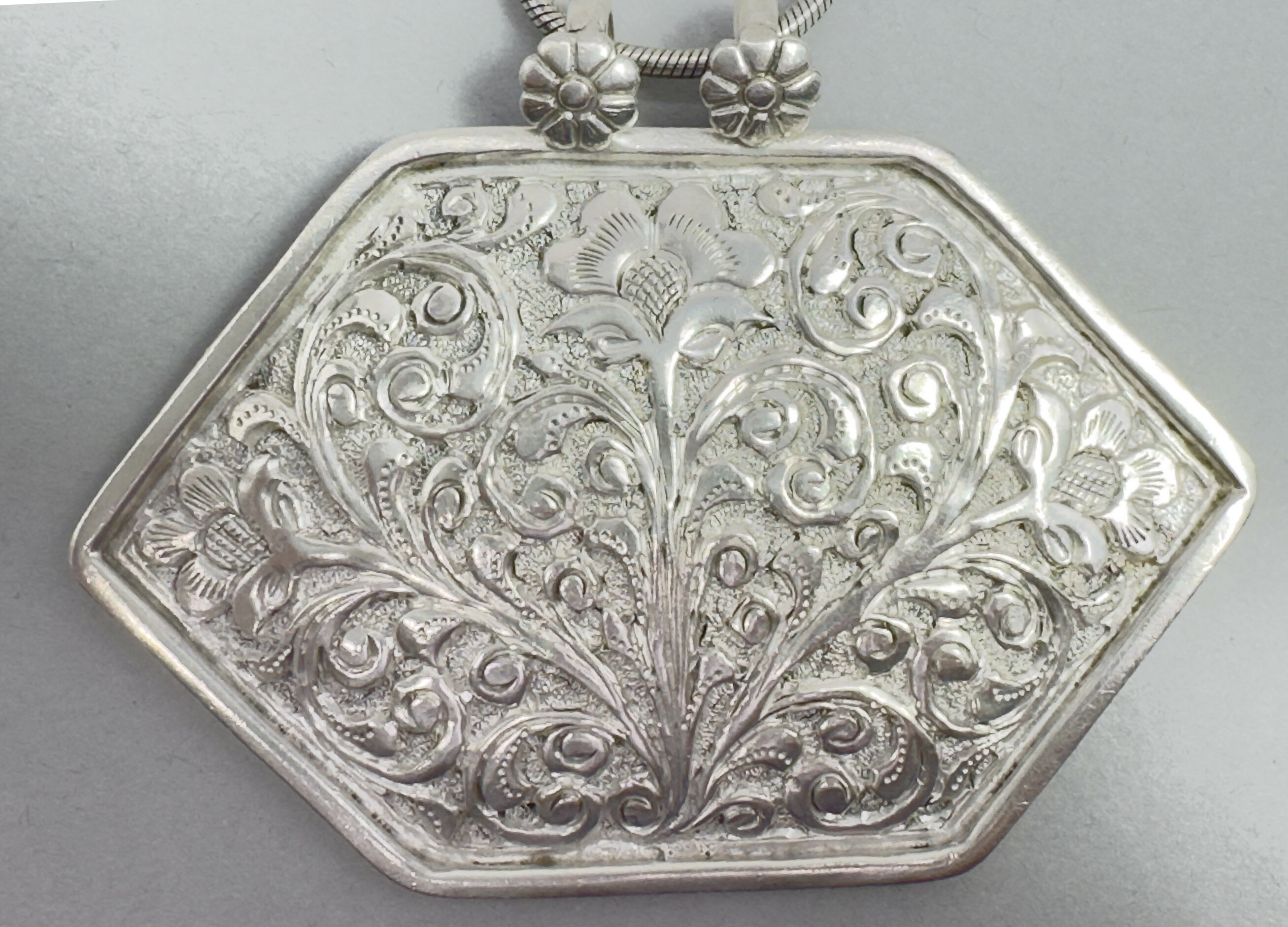
Very fine Indian silver repousse plaque Necklace, c1970
Price: £85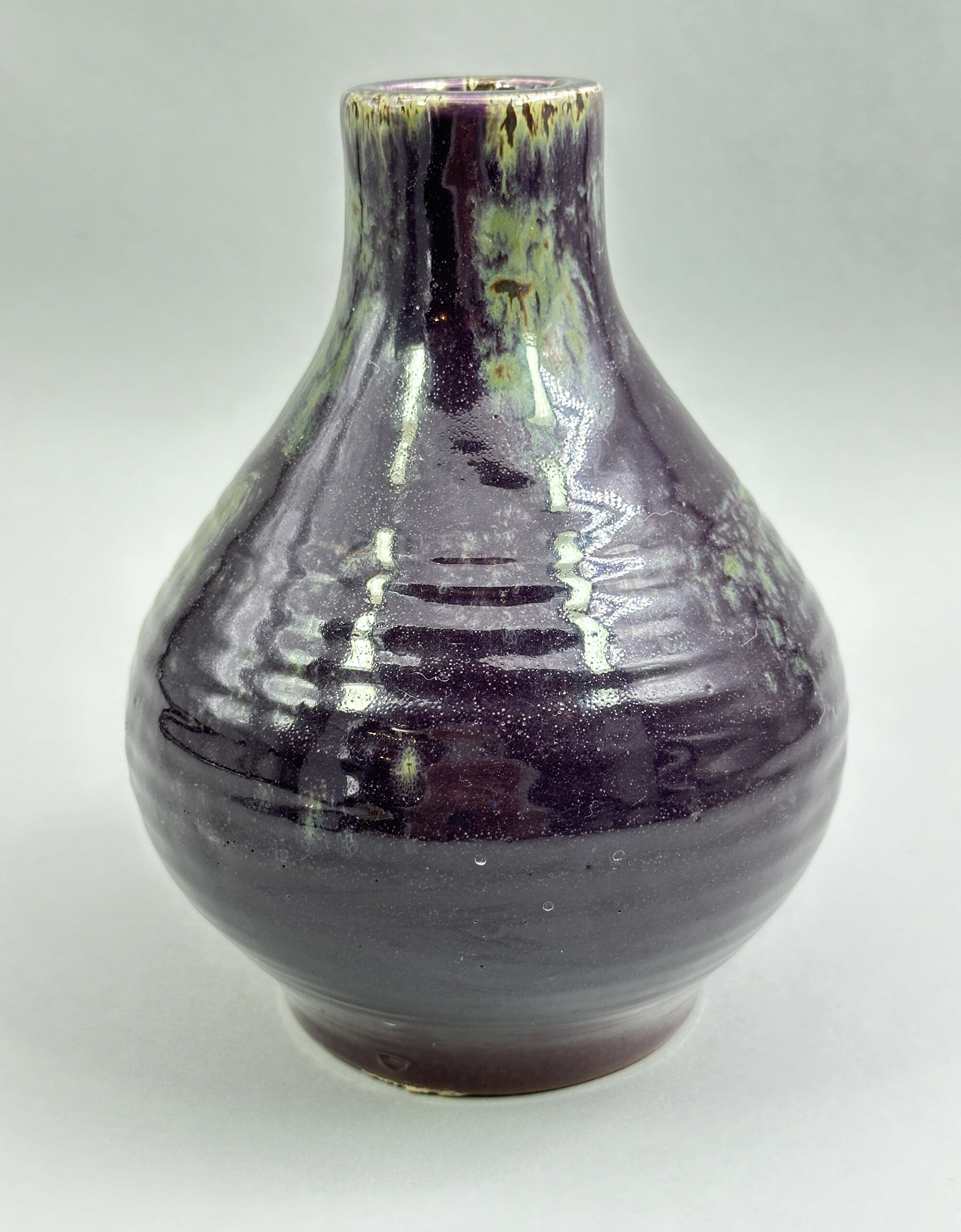
Studio Pottery Vase with flambé glaze, C20th
Price: £55
Nesting Set of Four Small Brass Trays with an engraved designs of Bats, Chinese C20th
Price: £30
Victorian Chinese turquoise beads 1900
Price: £400
Chinese cloisonne bangle with raised enamel decoration circa 1900
Price: £35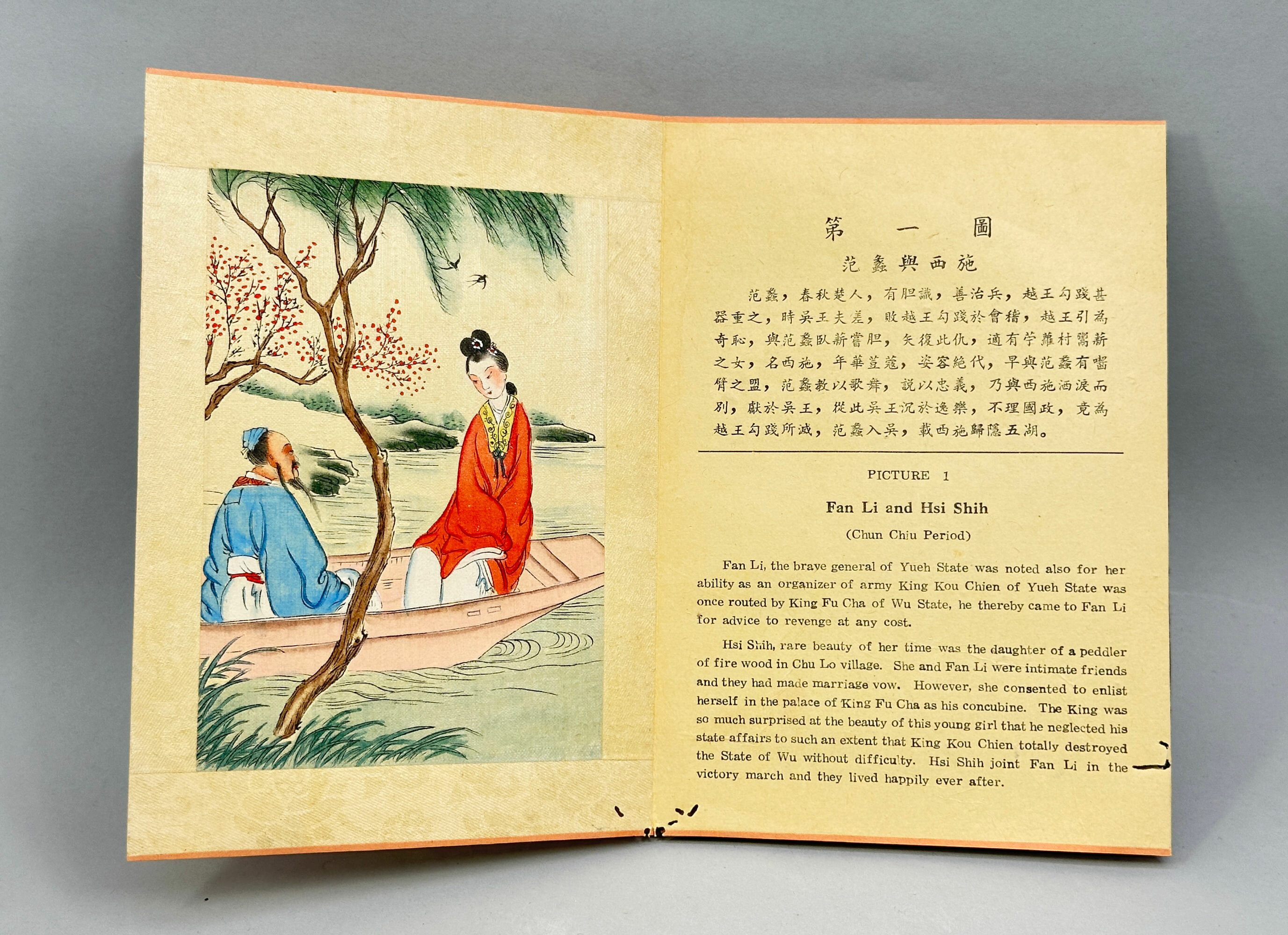
The Braves and the Fair Men of Letters and Women of Fame of Old China circa 1900
Estimate: £60 – 80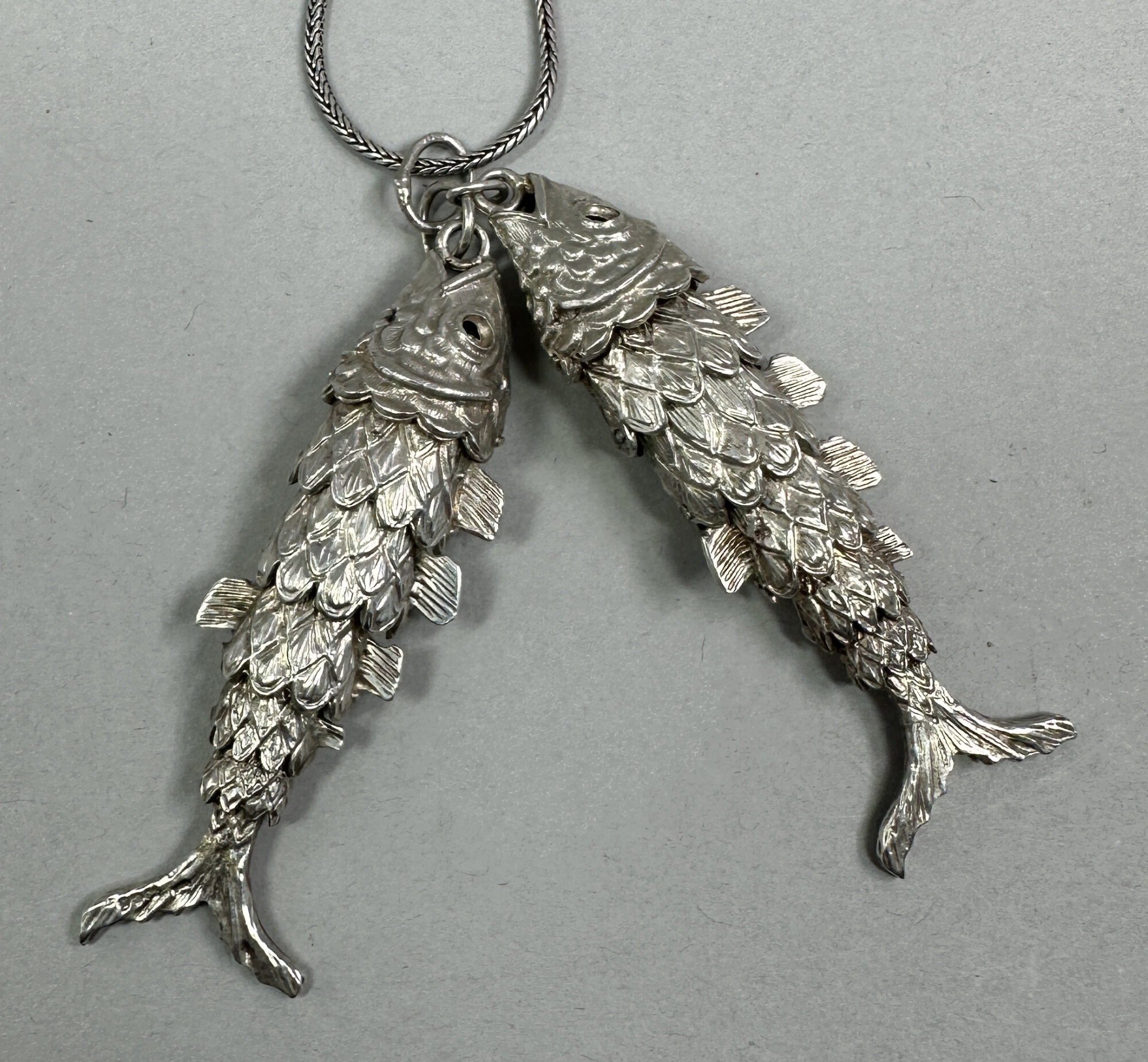
Fabulous necklace with hanging articulated fish pendant 20th century
Price: £125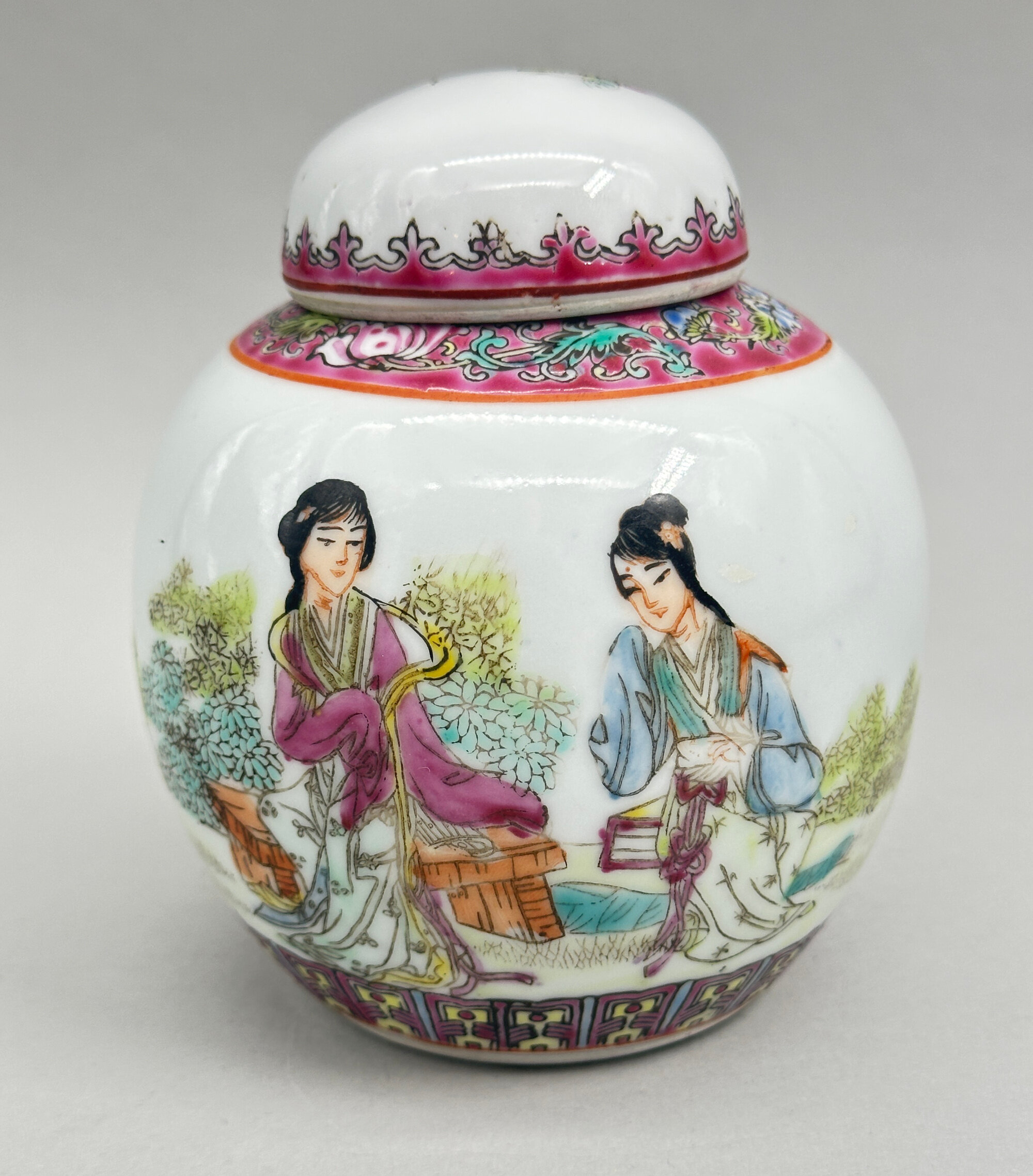
Chinese Republican Style small Famille Rose Ginger Jar and Cover, late c20th
Price: £20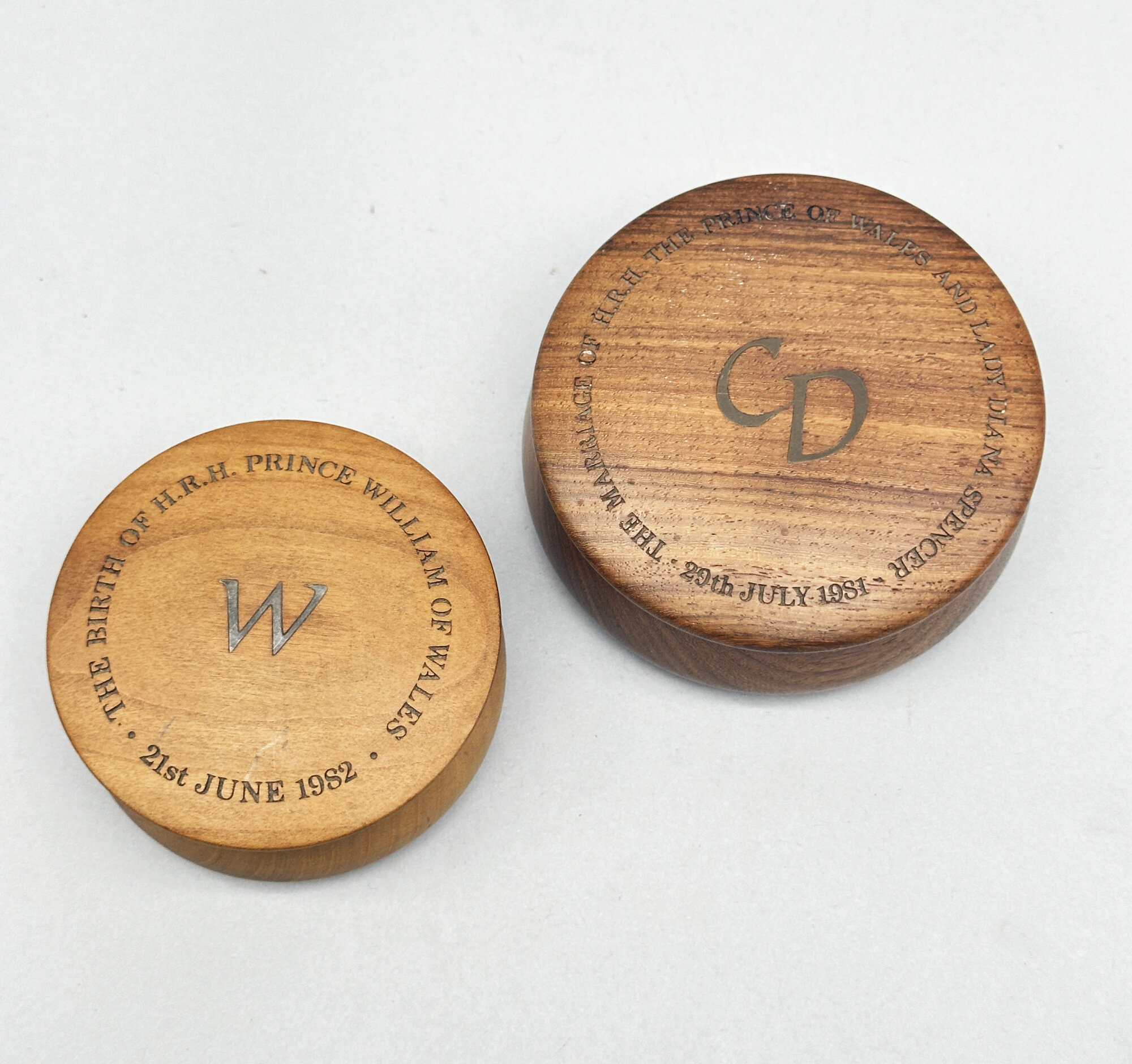
Two Wood Boxes : Marriage of Charles and Diana, Birth of Prince William, late C20th
Price: £15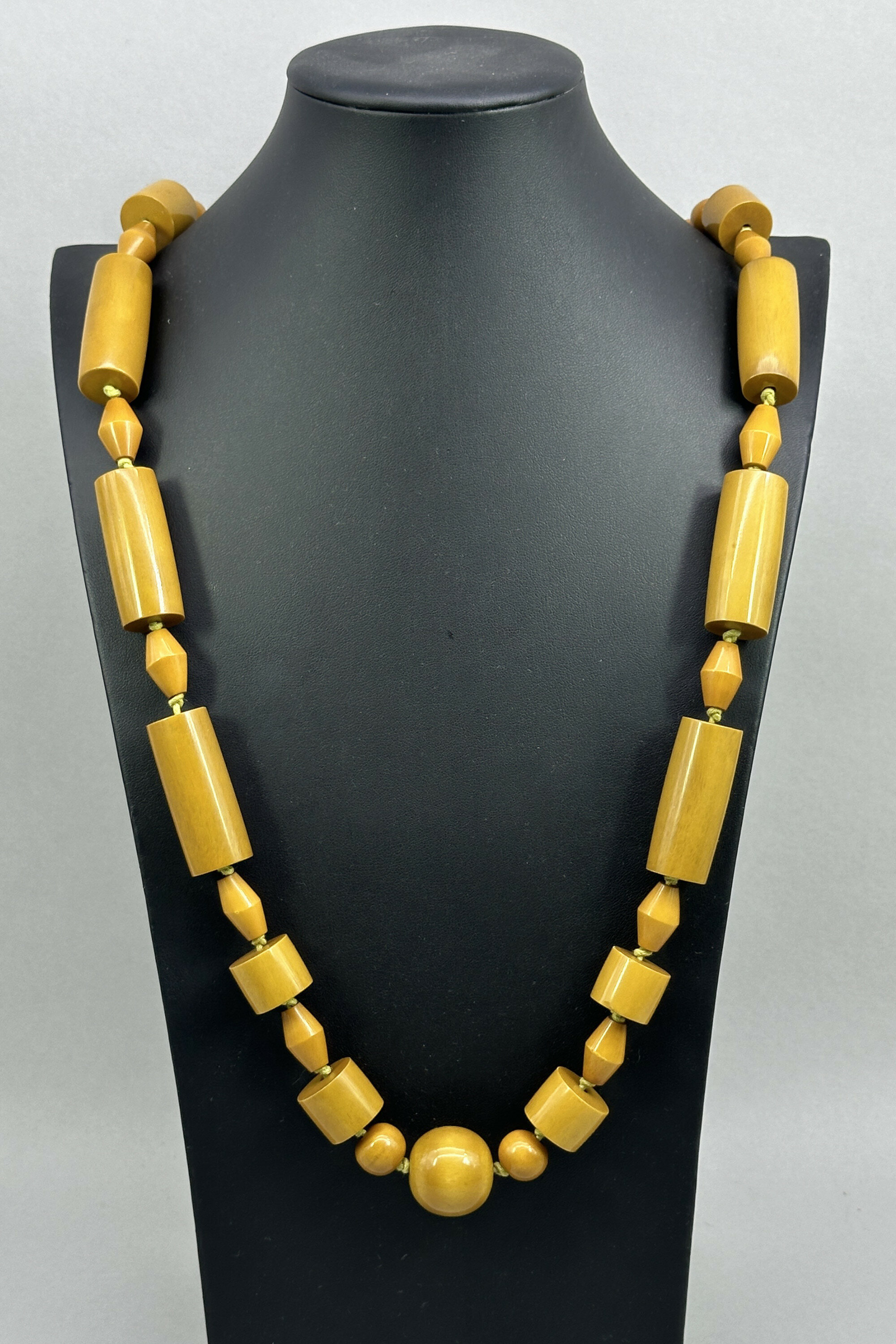
Art Deco Catalin Bakelite necklace, American c1930
Price: £125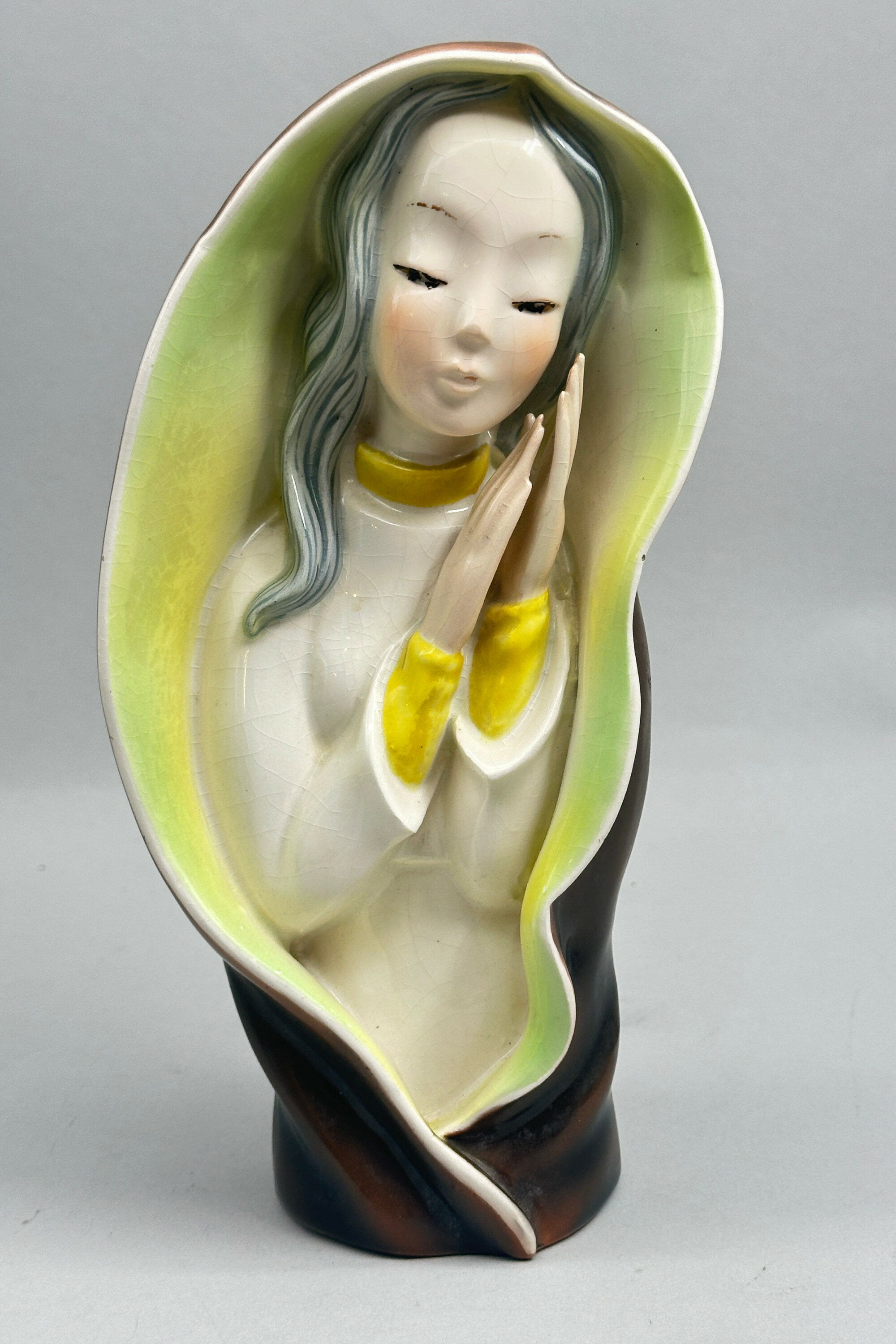
Figure of a Young Girl Praying, Continental, probably mid C20th
Price: £45
Large Scottish agate specimen brooch 1910
Price: £55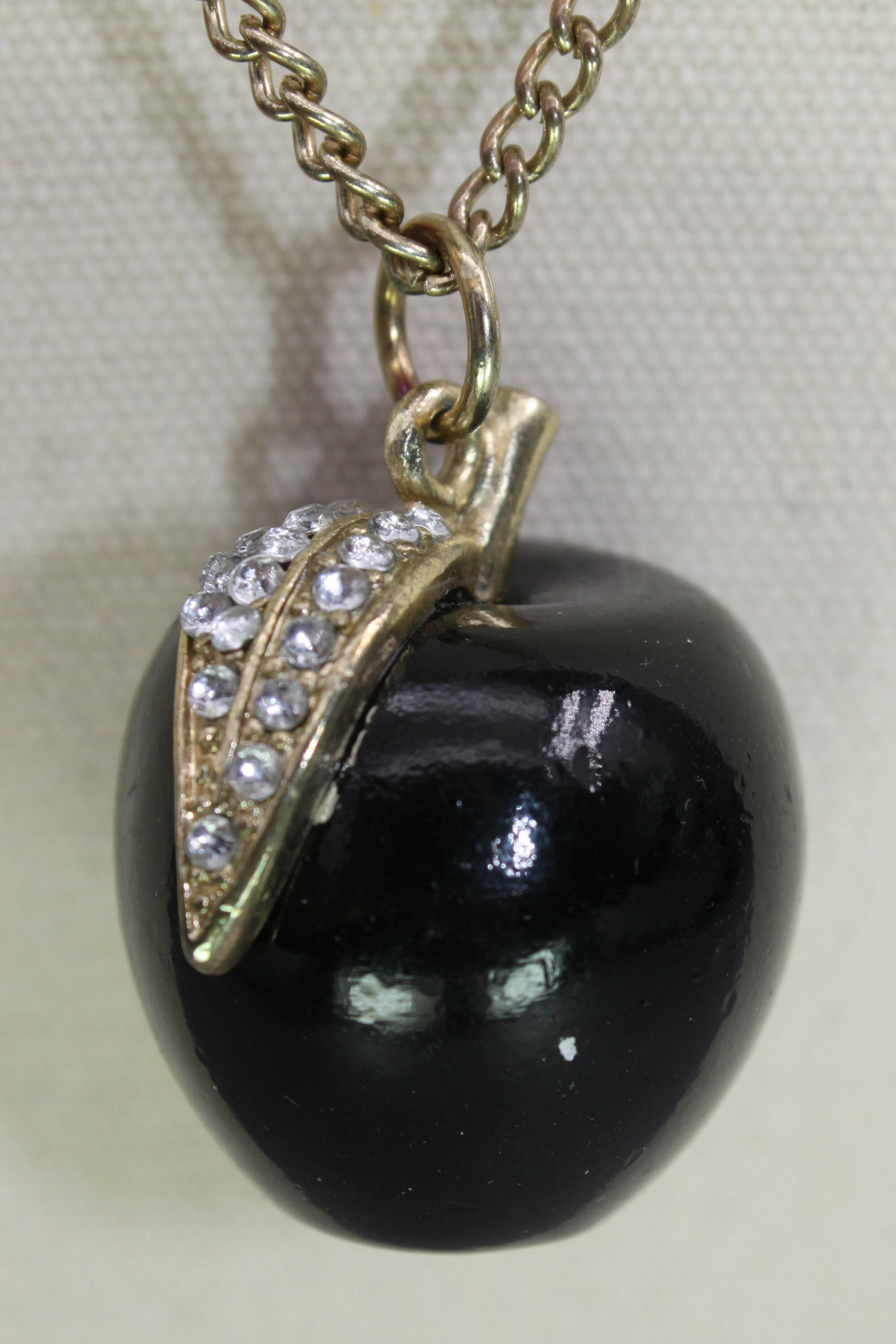
Black glass apple pendant on a long chain, 1980s
Price: £25PLEASE NOTE THAT THERE IS FREE UK SHIPPING ON THIS ITEM. For international buyers the shipping cost will be reduced by the UK shipping cost, so don't worry if you are outside the UK, you still receive this benefit!

Art Deco Scottish bloodstone brooch
Price: £25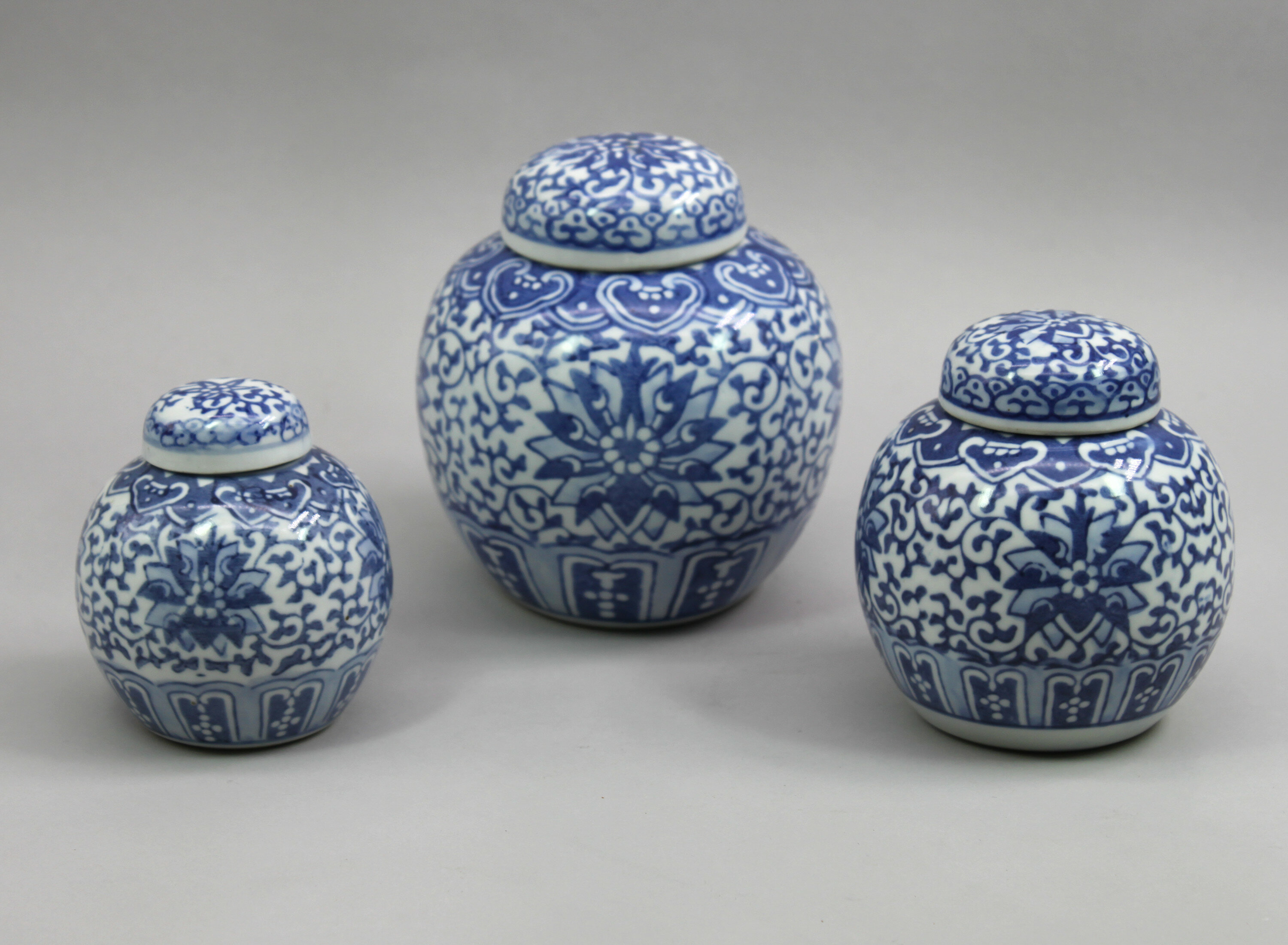
Graduated set of Three Chinese Blue and White Ginger Jars and Covers, 20th Century
Price: £45Although of relatively recent manufacture, the quality of these pieces continues the Chinese ceramic productions of the late nineteenth century and together they form an attractive decorative ensemble for the contemporary interior.
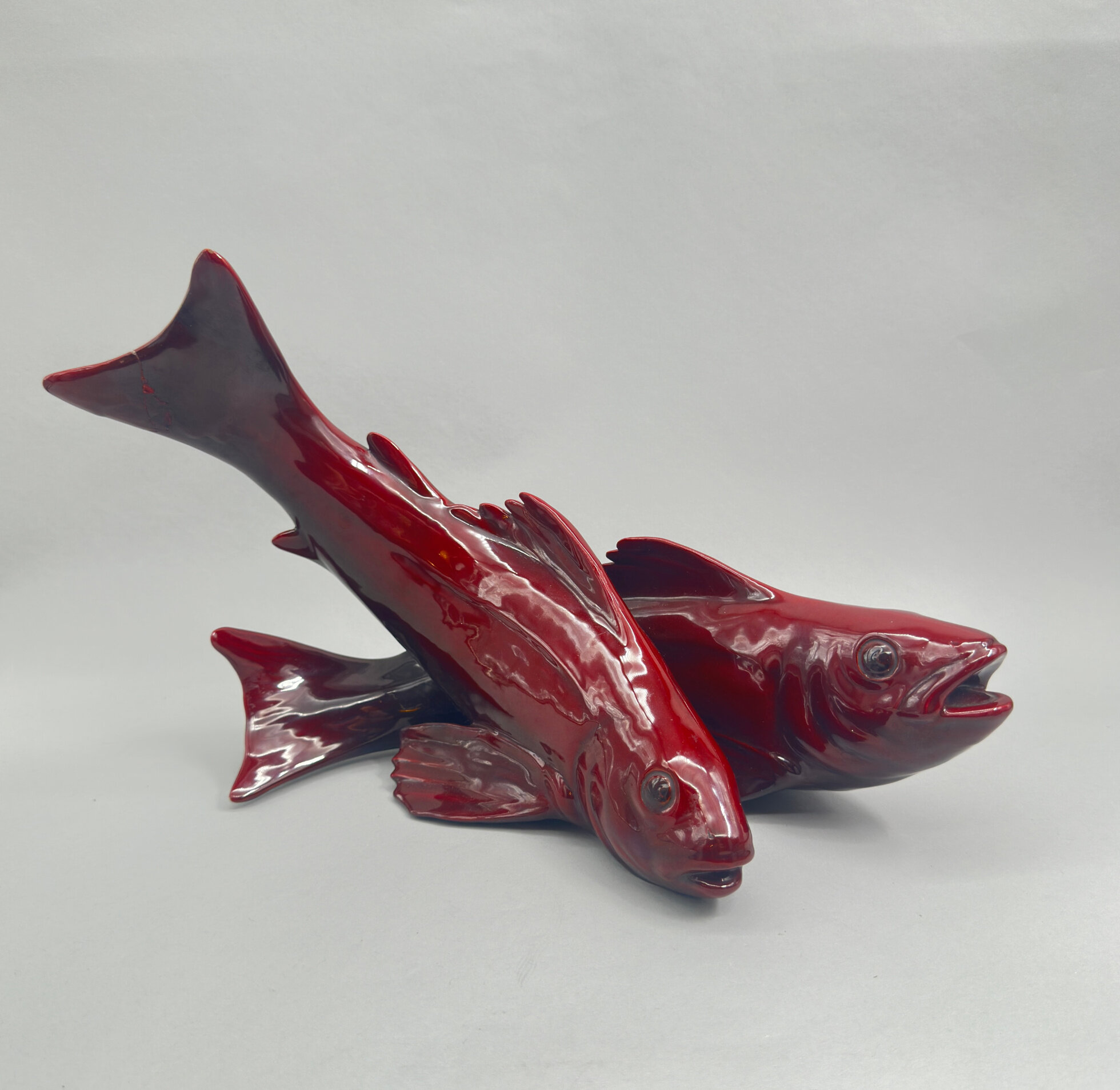
An Art Deco ceramic group of two Fish by Guido Cacciapuoti, signed, 1930s
Price: £150Guido Cacciapuoti was a celebrated Italian ceramicist. Born in Naples in 1892 and from a family with a tradition in the creation of majolica pottery, Guido exhibited his work widely in the 1920s and finally, in collaboration with his brother, Mario, and Angelo Bignami as the administrative and commercial director, he founded the factory ‘Gres d'Arte Cacciapuoti Bignami & C.' in Milan in 1927. Mario unfortunately died three years later leaving Guido to carry on on his own until his death in 1953.
In the 1930s, Guido’s workshop became famous for the production of ceramic animal sculptures with fish being a particular speciality. More commonly seen are groups of John Dory, again with a red glaze, but the smoother lines here and the particularly intense colour reflect more closely the contemporary Art Deco style. Sought after in their own time, with patrons such as the King of Italy and Mussolini, Guido’s works are highly collectible today and this group would make a striking addition to a collection of Art Deco ceramics with considerable decorative appeal.
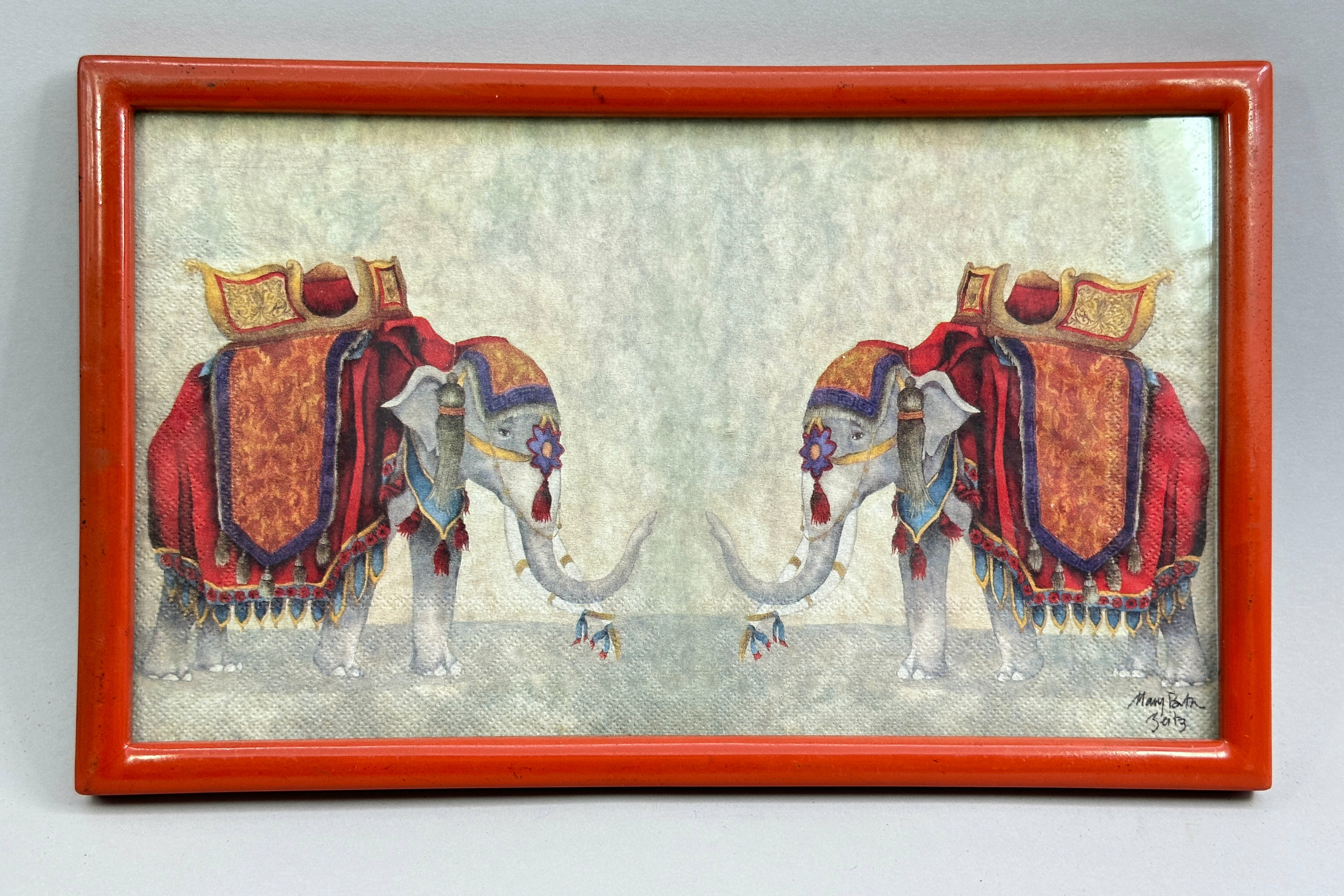
Framed Picture of Two Elephants signed Mary Beth Zeitz and dated 2003
Price: £25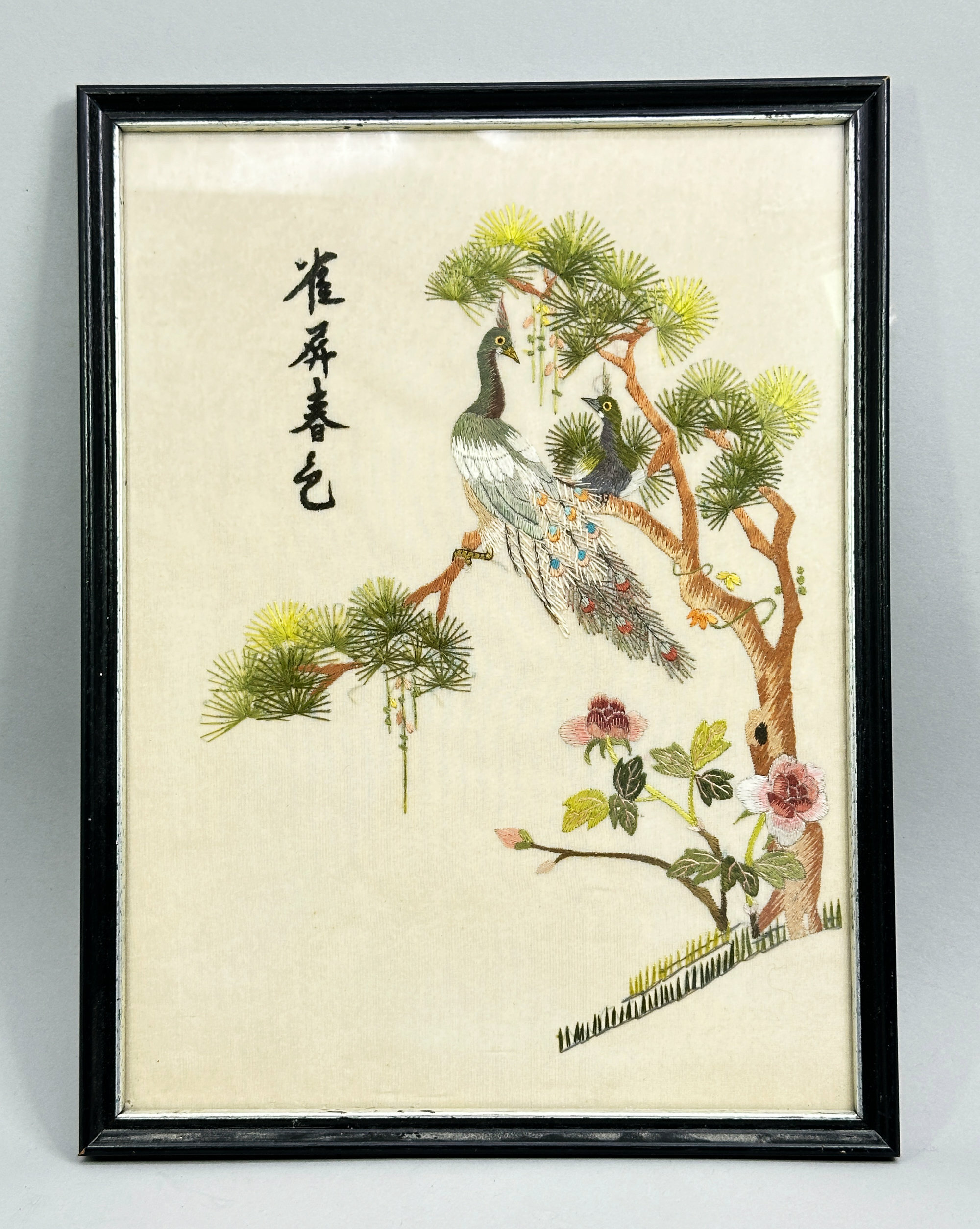
Framed Chinese Embroidery Silk Textile, signed, second half C20th
Price: £25
Victorian silver bracelet set with garnets 1900
Price: £35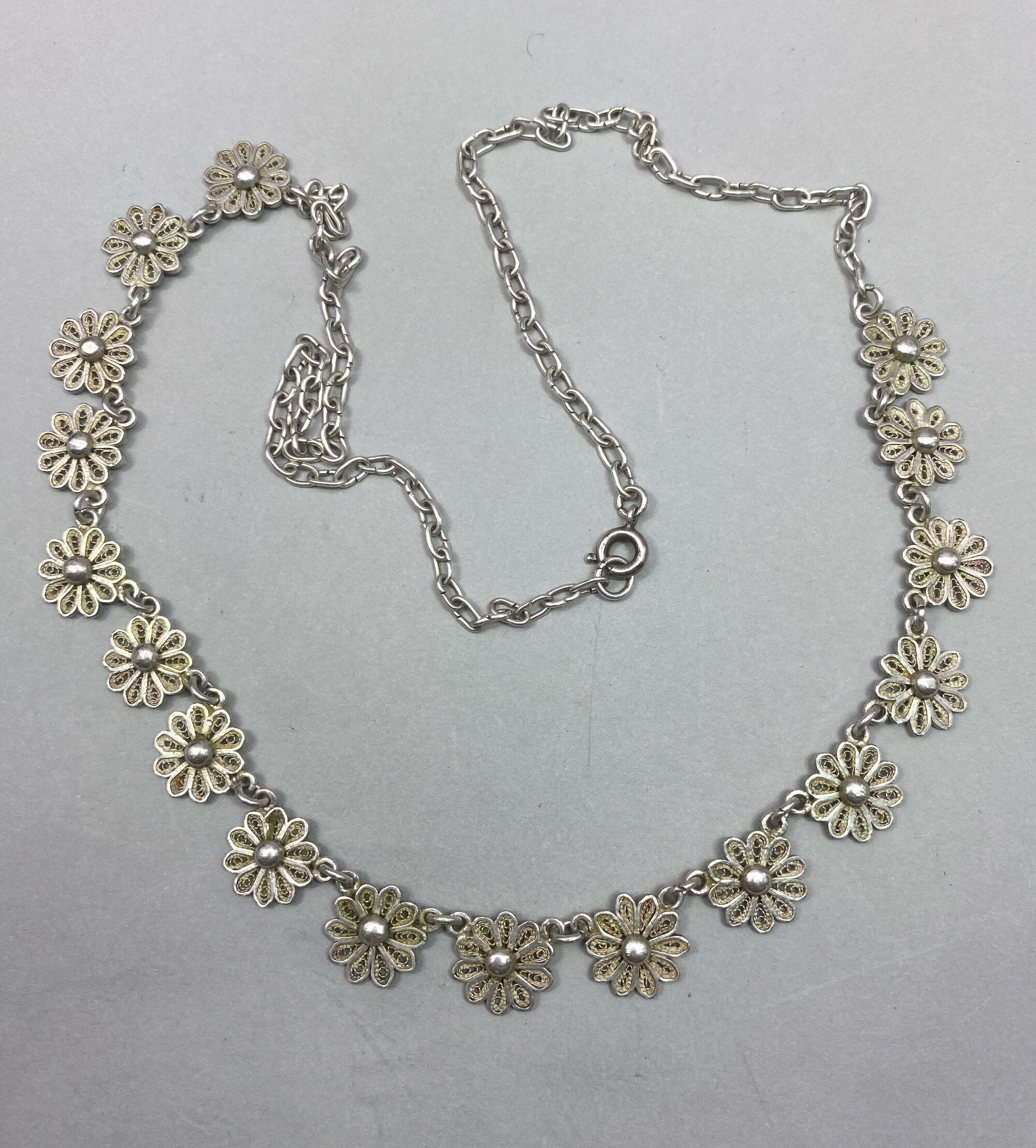
English silver filigree floral necklace
Price: £35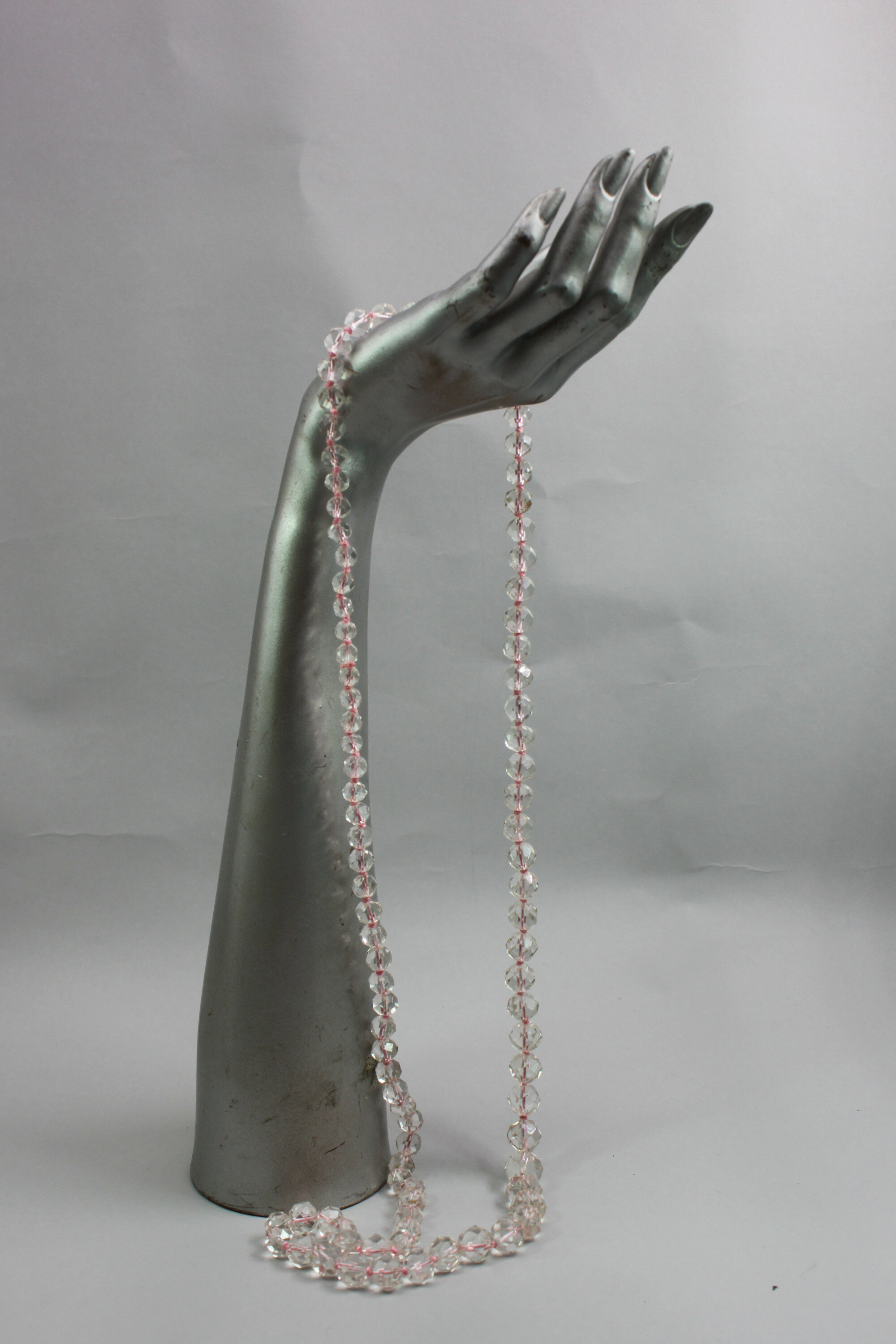
Stunning opera length string of rock crystal beads
Price: £35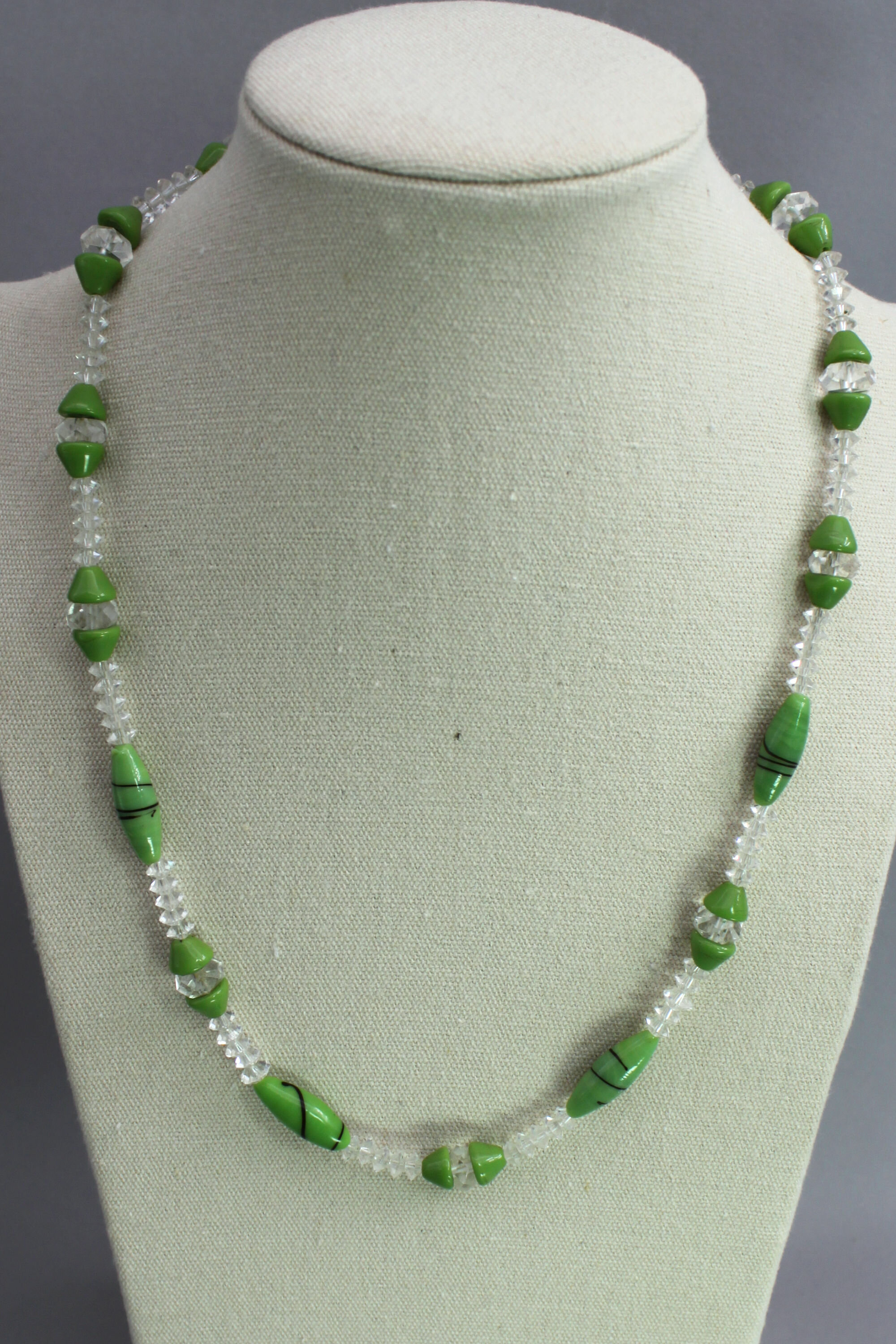
Art Deco glass bead necklace
Price: £20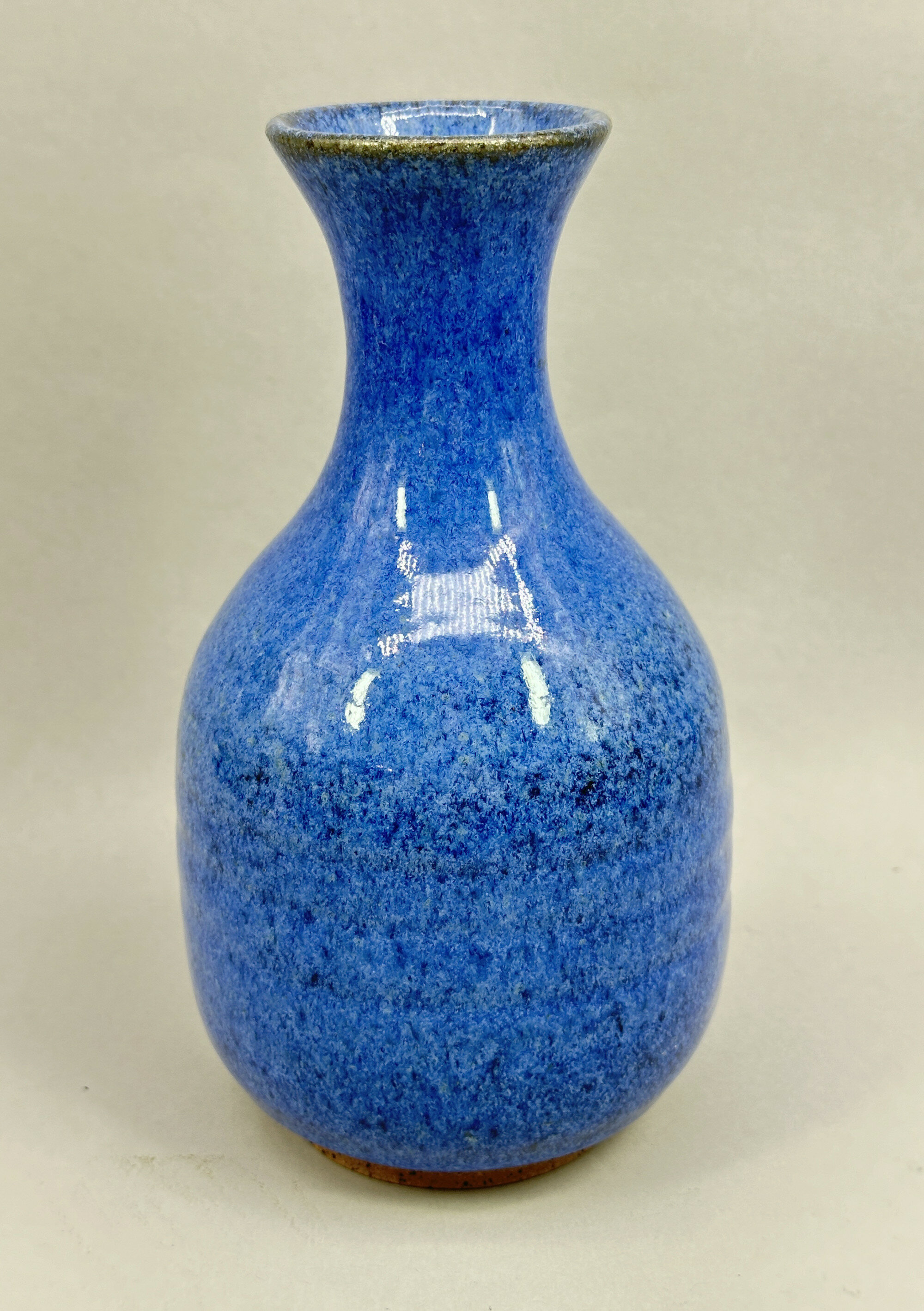
Studio Pottery Vase with Robin’s Egg Glaze marked Zambia, Modern
Price: £30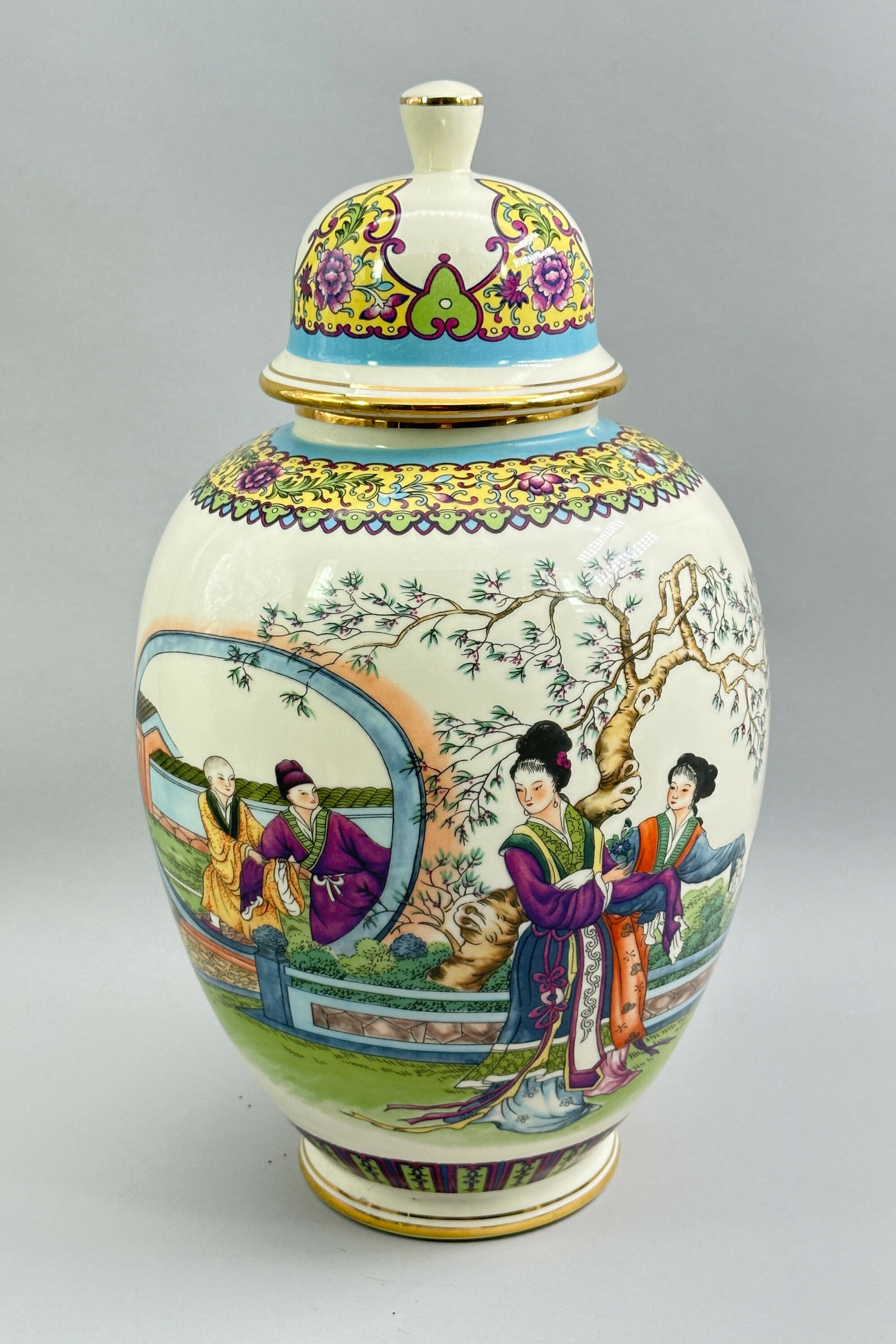
Chinese style Vase and Cover decorated with ladies and courtiers in a garden scene, C20th
Price: £55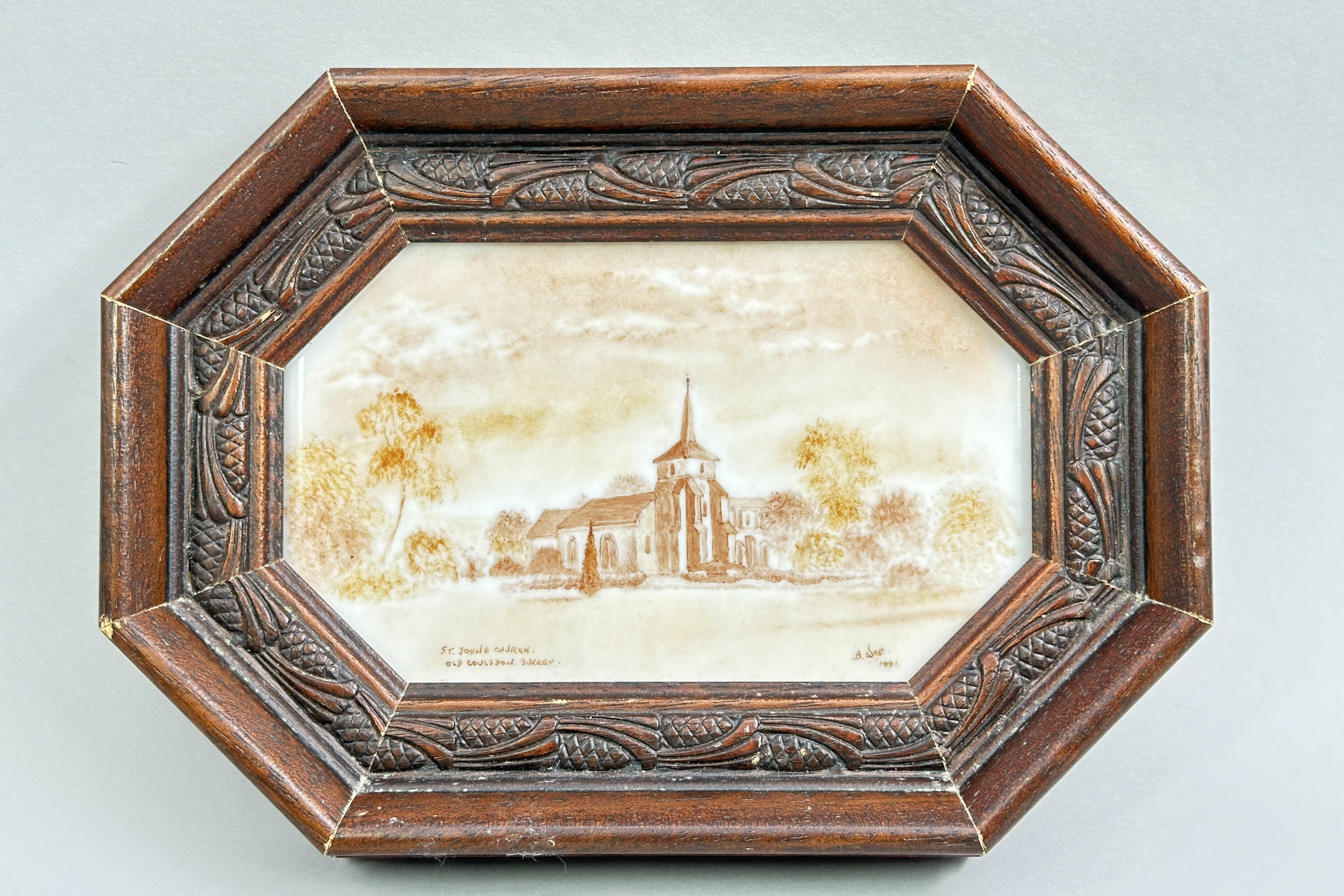
Framed Ceramic Plaque depicting St John’s Church, Old Coulsdon, late C20th
Price: £25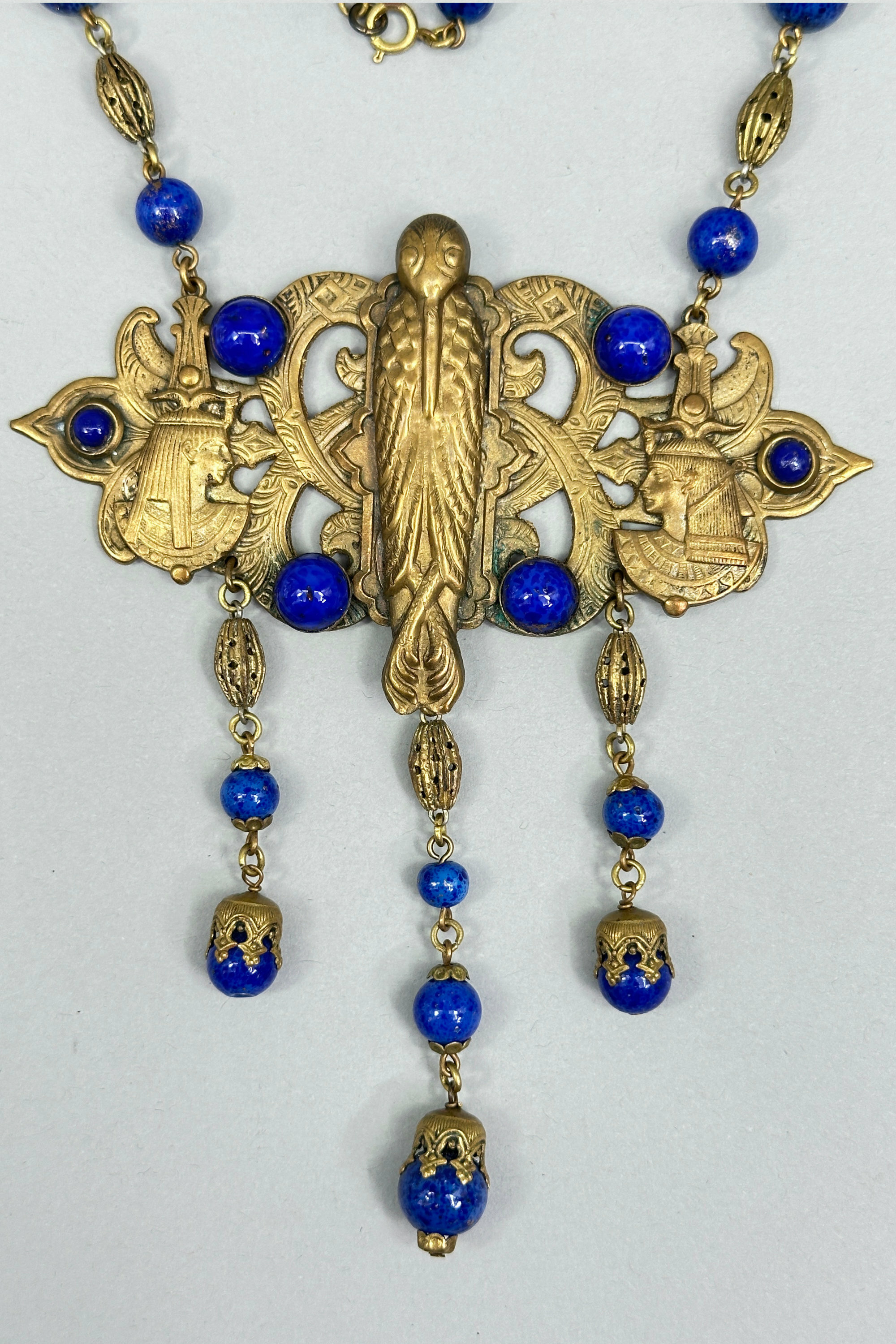
Egyptian Revival statement necklace signed EBE c1930
Price: £110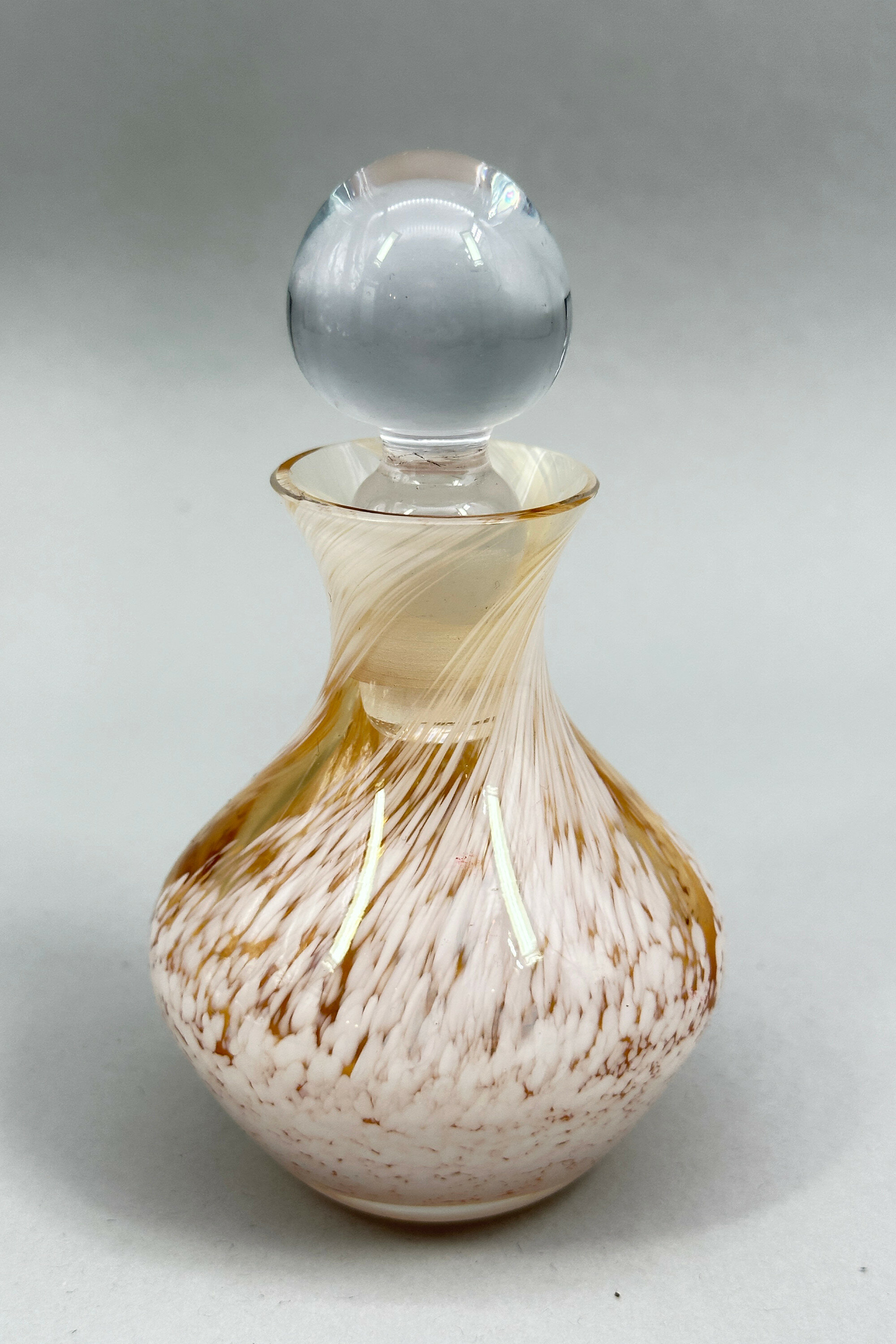
Perfume Bottle and Stopper, Island Studio, Guernsey, late C20th
Price: £30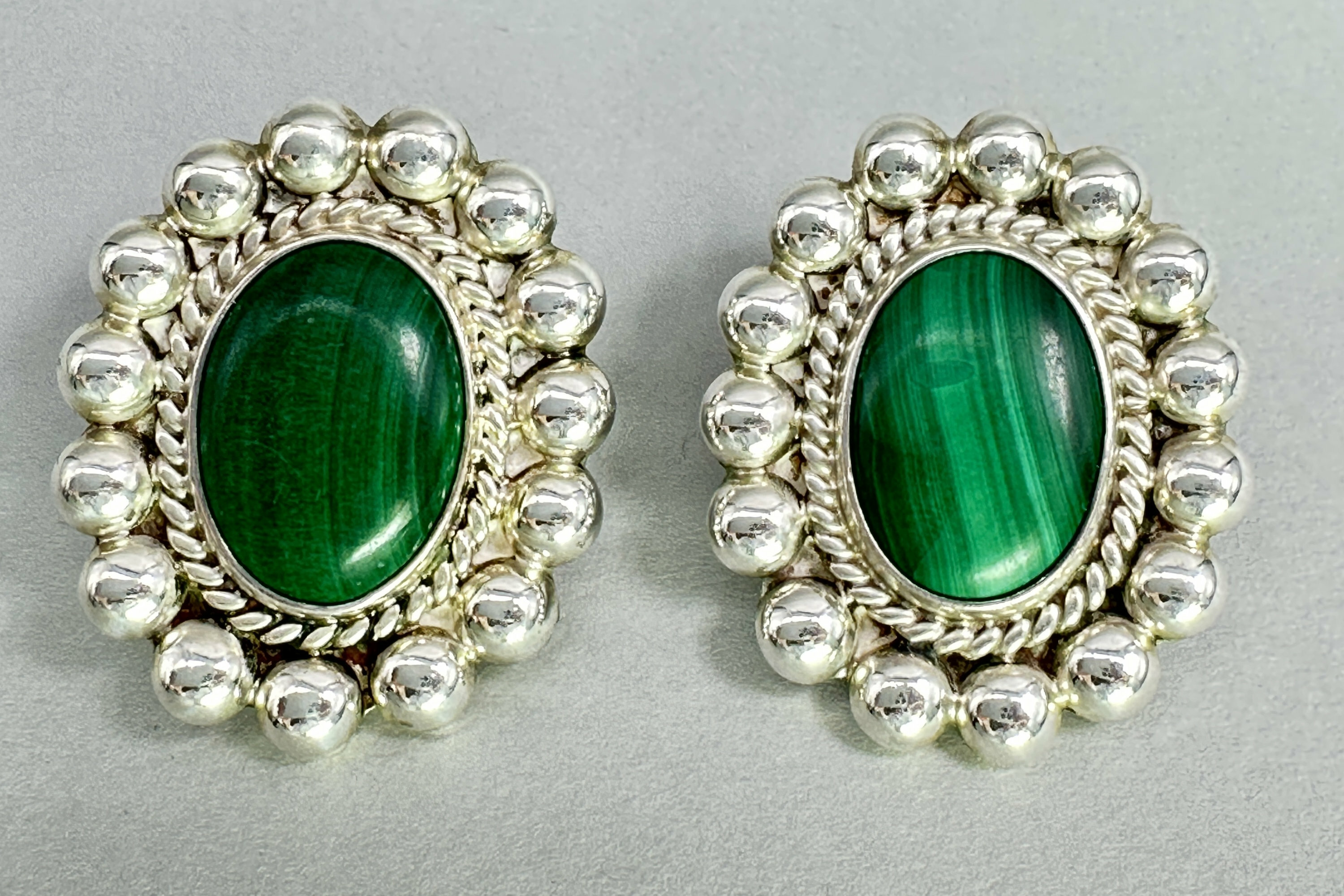
Pair of Taxco Mexican silver earrings, c1980
Price: £75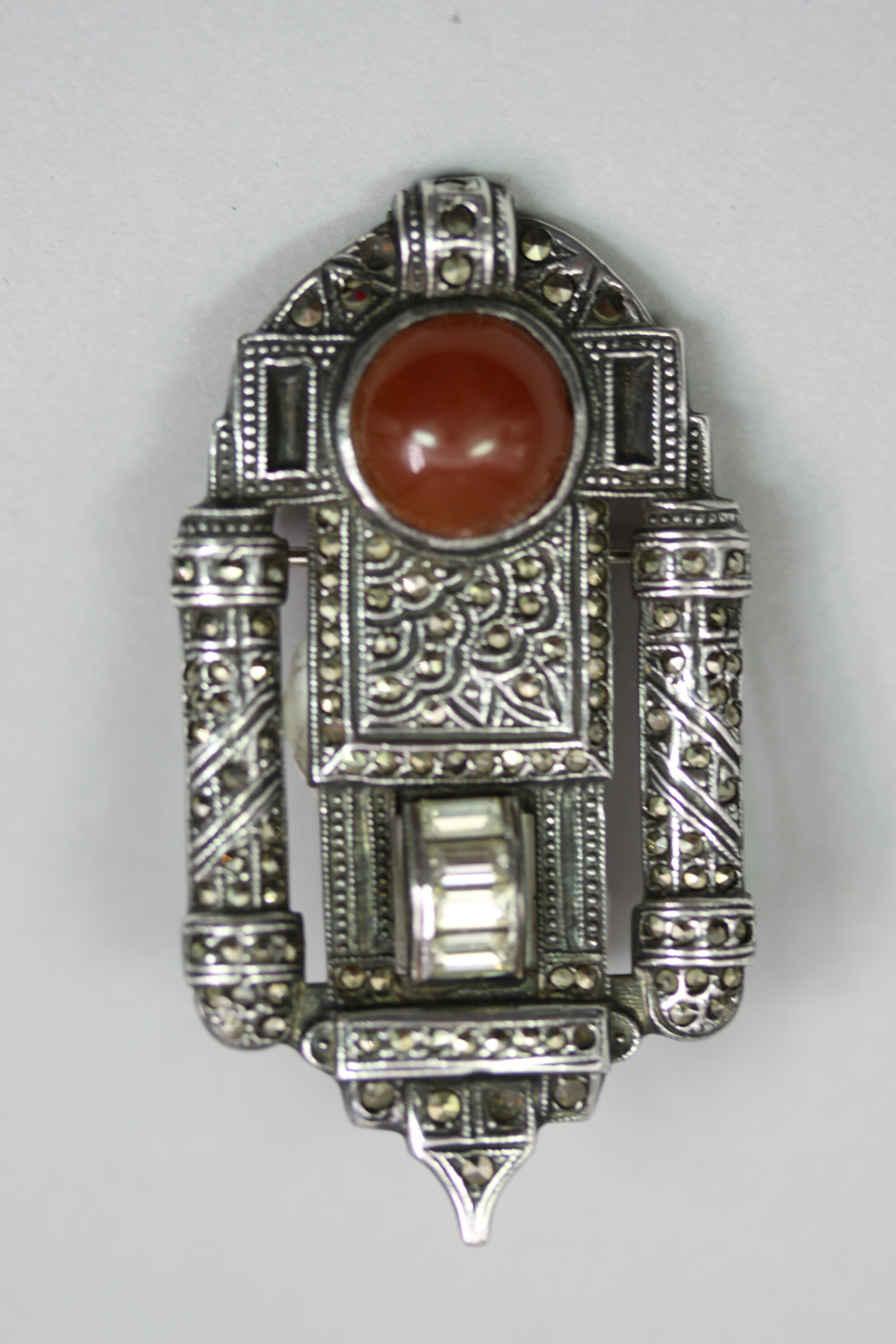
American Art Deco silver and marcasite brooch
Price: £35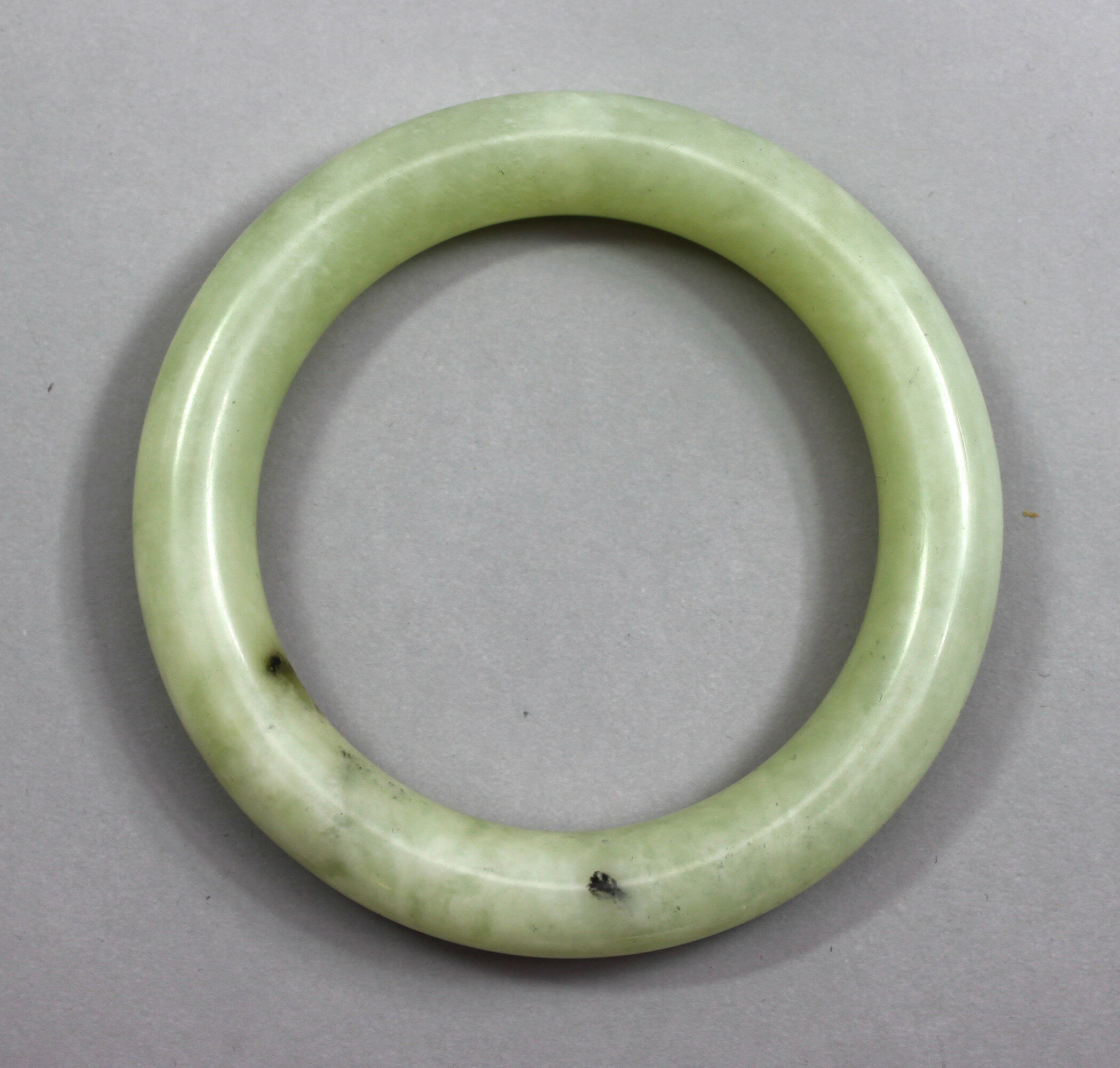
Chinese Pale Celadon Jade Bangle, probably Nineteenth Century
Price: £45Jade is usually divided into two types, nephrite jade and jadeite jade. The latter is heavier and slightly harder, making it more difficult to scratch. The weight of this piece suggests that we do have jadeite here. The stone was selected for carving on the basis of its attractive appearance and the finish, which bears no trace of machine tooled manufacture, suggests a pre twentieth century dating, but certainty in these matters is notoriously difficult
The size of this piece is unusually large, suggesting that it would have been intended for a male wearer. This too suggests an earlier rather than later time of manufacture. The stone is exceptionally pleasant to the hand and would have been an elegant accompaniment to any wardrobe.
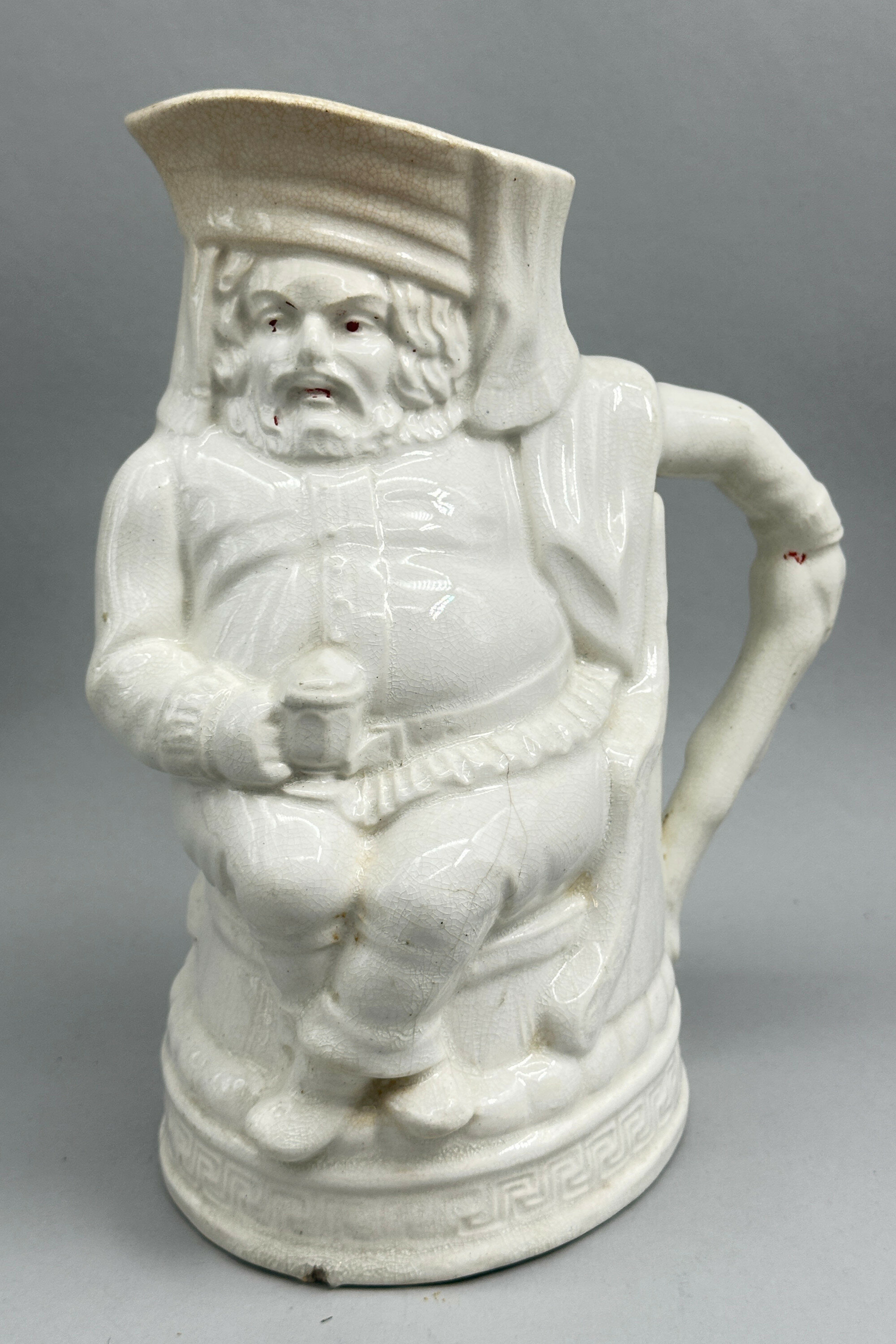
Earthenware Jug, Falstaff or Old King Cole, Furnival and Clark, mid C19th
Price: £75The design for this jug, usually termed ‘Falstaff’ but sometimes ‘Old King Cole’ is known to have been registered (Rd.No. 32601)by the firm Furnival and Clark on December 30th 1845. This was a very short lived partnership between Thomas Furnival and Richard Clark, based at the Stafford Street Pottery Works, Hanley, Staffordshire and which traded from 1844 to 1846 apparently producing just this one model, albeit in a variety of colours. Thomas Furnival had been involved in other firms before this brief venture and was to be involved in others afterwards. The dating of these mugs is usually attributed to the short period when Furnival and Clark traded but it is quite possible that more pieces were produced afterwards by Furnival himself. The paste and finish of this piece, though, which is not marked, certainly suggest a mid nineteenth century dating. In general, the model is quite rare. Some examples were fitted with a Britannia metal or pewter lid but this was never integral to the piece. This striking composition, then, is a rare and desirable item collectors with an interest in British Staffordshire wares.
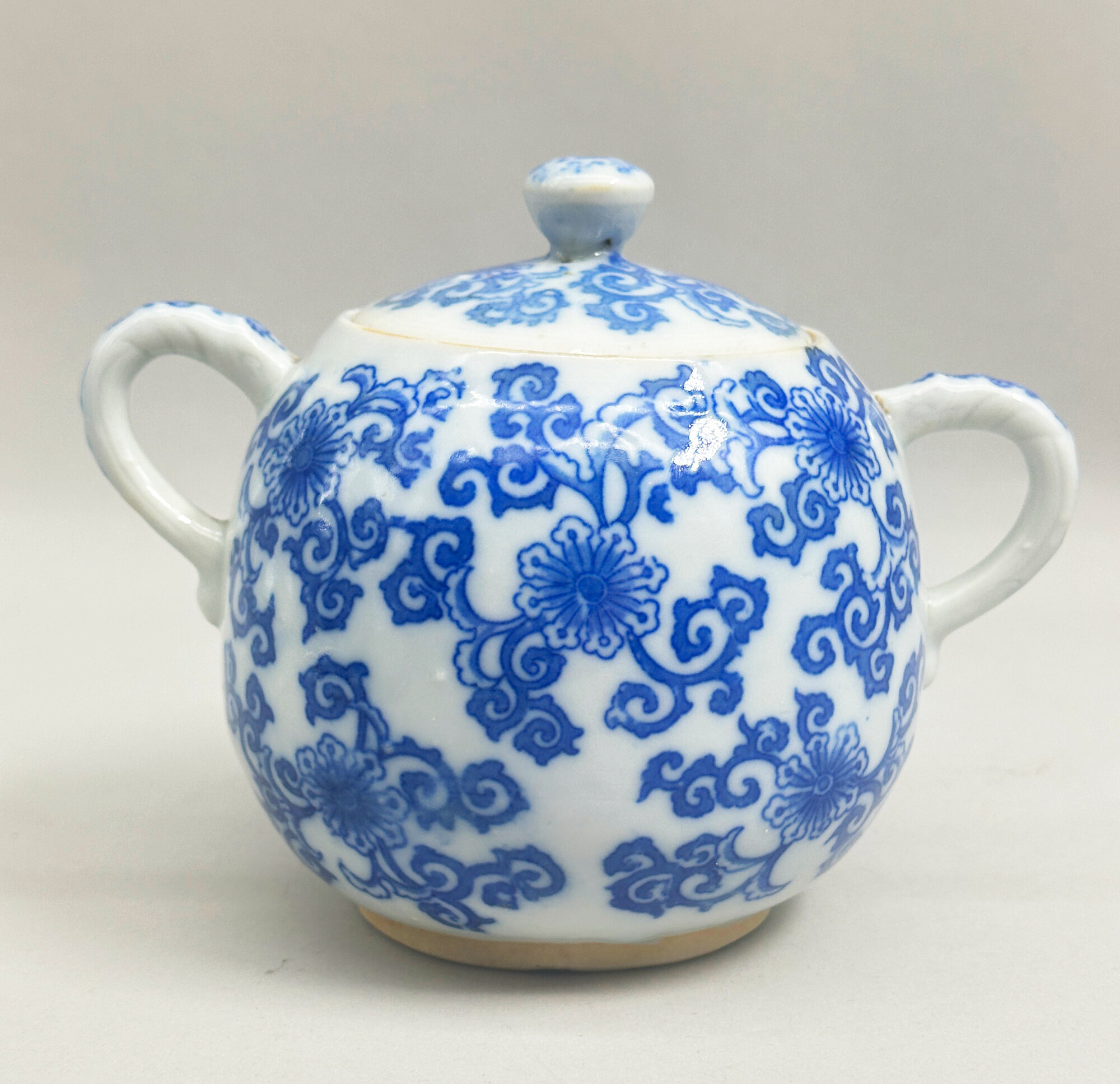
Japanese Blue and White Sugar Bowl and Cover, first half C20th
Price: £25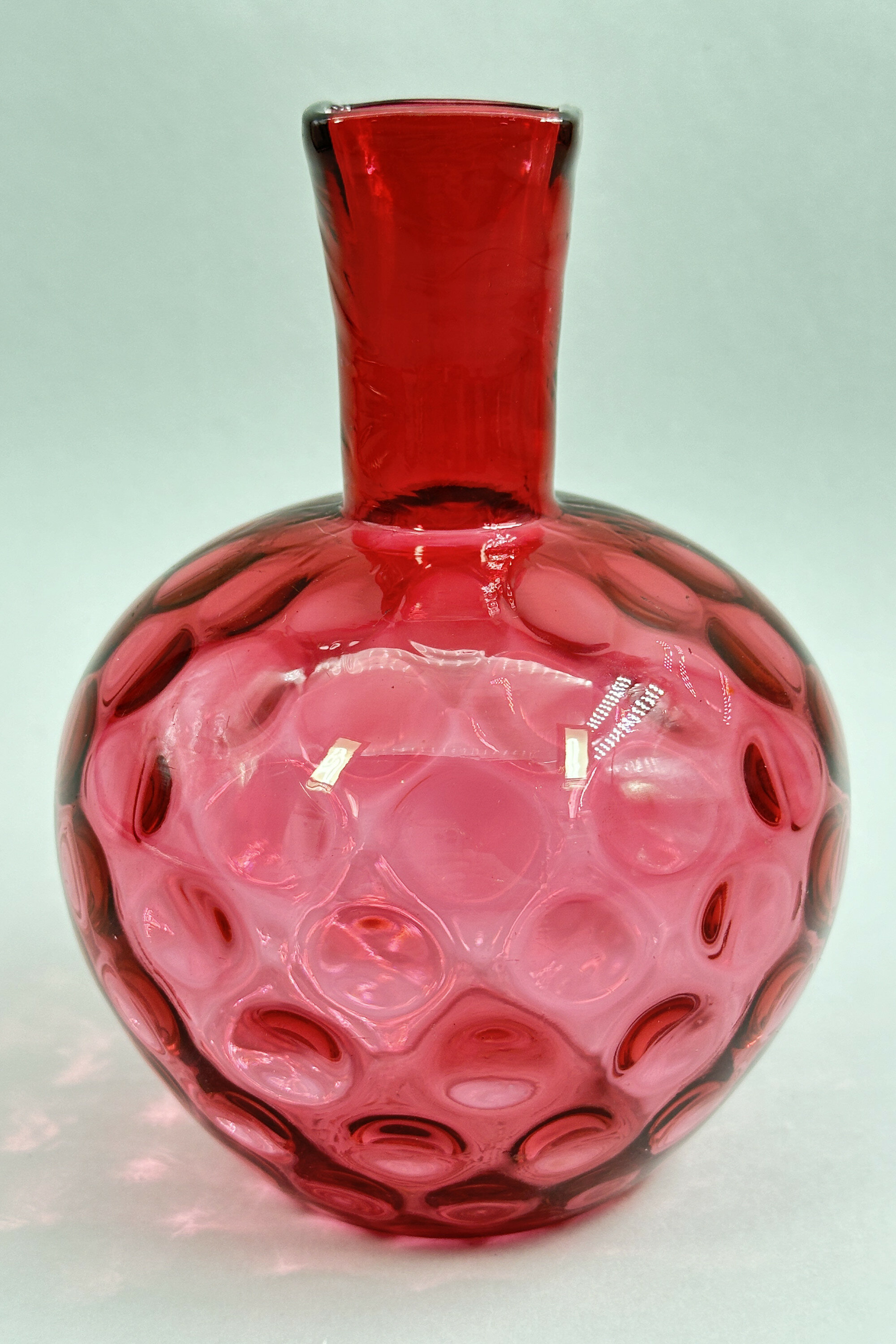
Cranberry Glass Vase circa 1900
Price: £30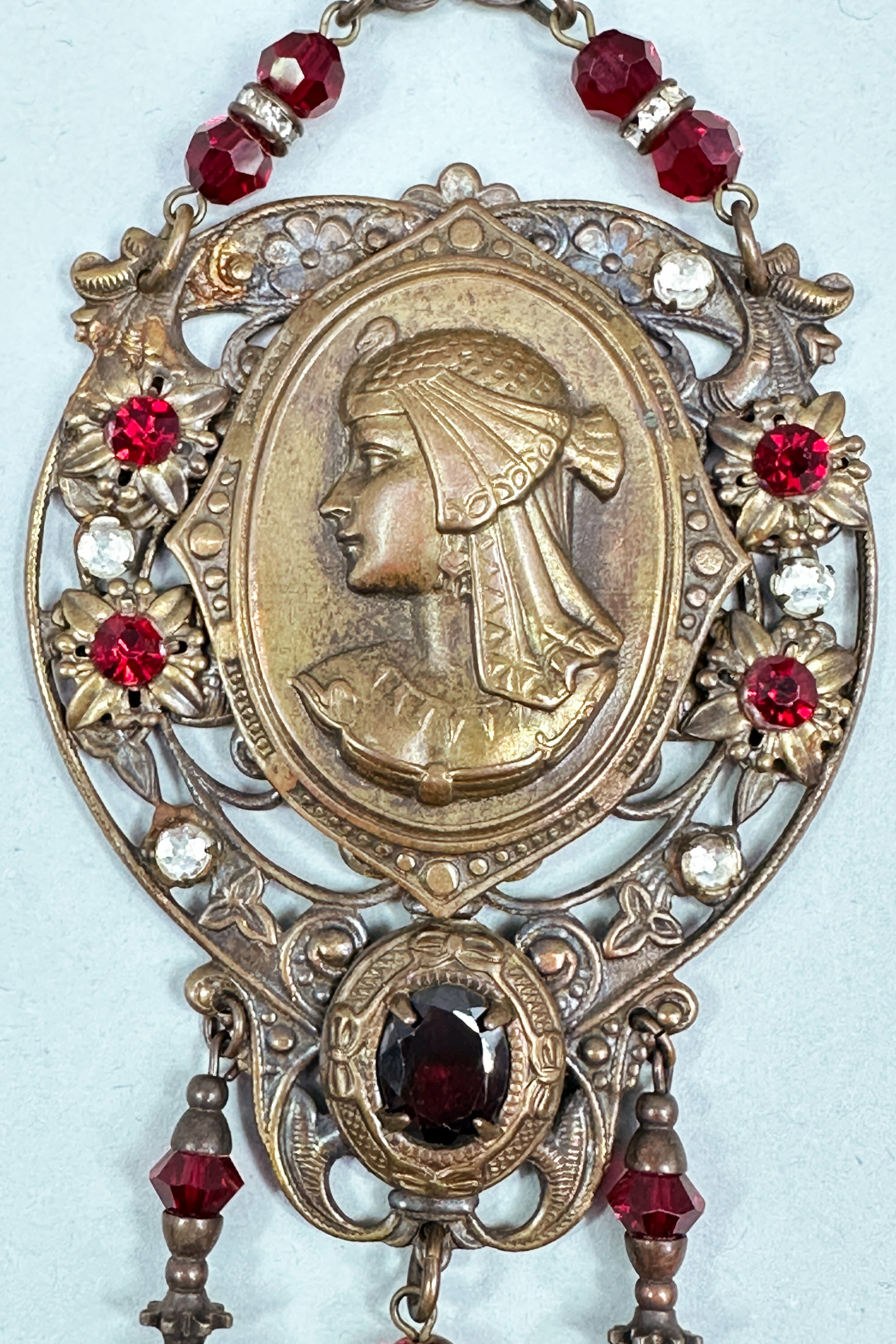
Victorian Egyptian Revival motif necklace with red stones c1900
Price: £85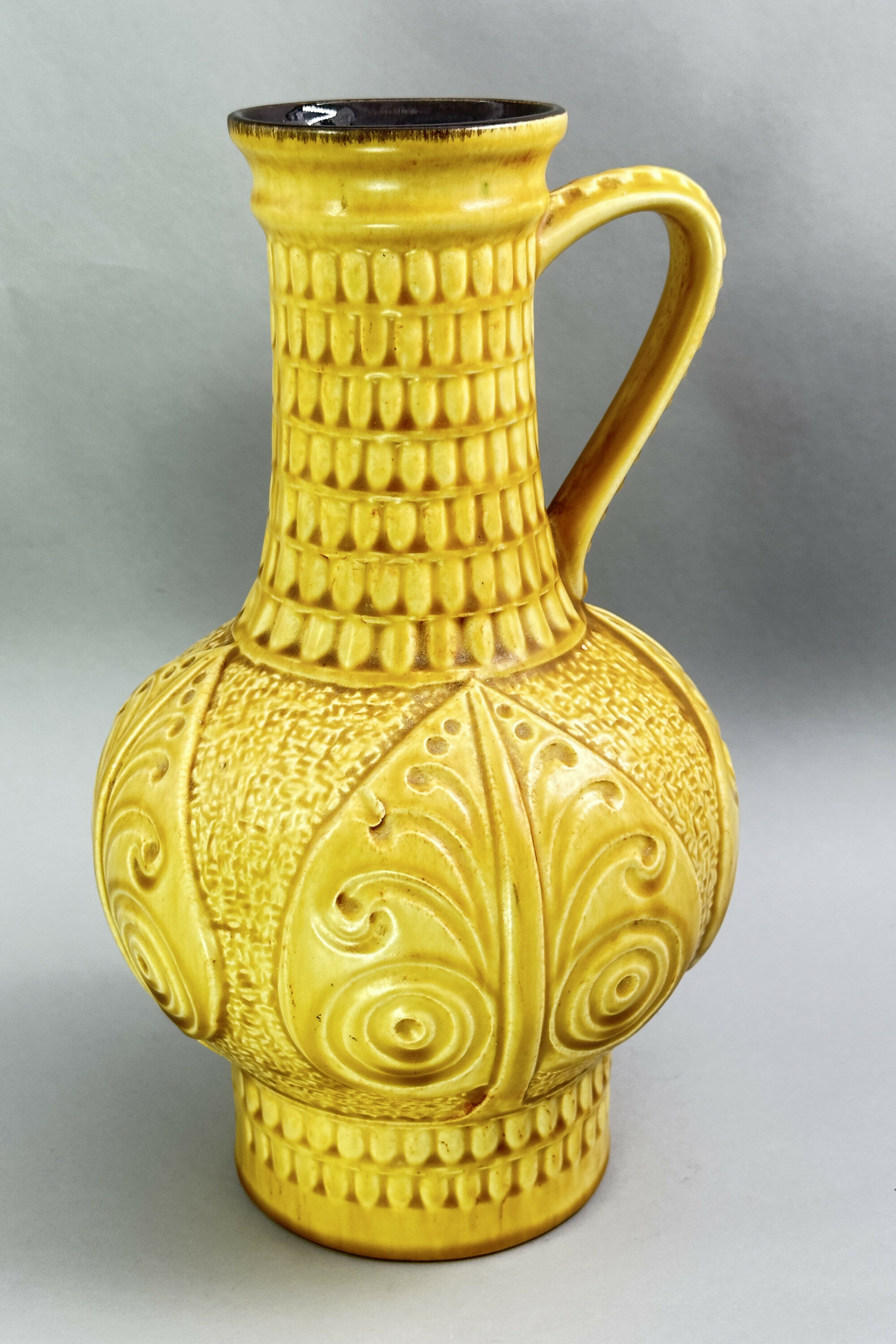
Bay Ceramic Ewer No 268-30, West Germany, 1960s
Price: £55Bay Ceramics was founded by Eduard Bay in the 1930s and based in Ransbach Baumbach, the heart of the main West German pottery producing region. Their productions included vases in a wide variety of shapes and designs which continued in production until the 1980s. Bodo Mans was amongst their most famous designers working in the 1950s and 1960s. He seems to have concentrated on organic semi abstract designs and ewers in this form, with the same pattern number but in a variety of different glazes, are attributed to him. This monochrome mustard glaze seems particularly attractive and complements the design very successfully producing a striking and decorative item which might enhance a wide variety of interior settings.
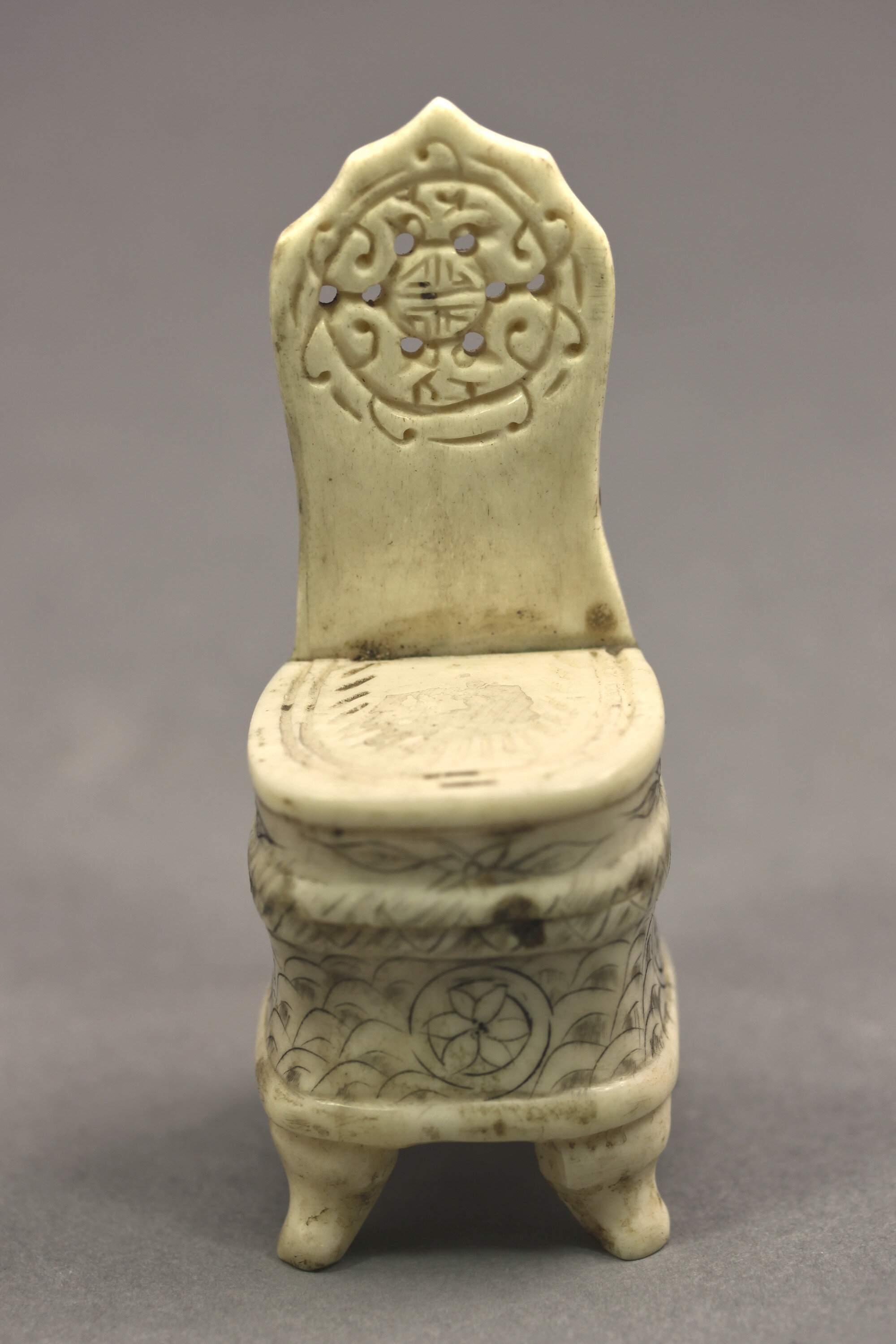
Chinese Bone Inkwell in the form of a Chair, early 20th century
Estimate: £20 – 30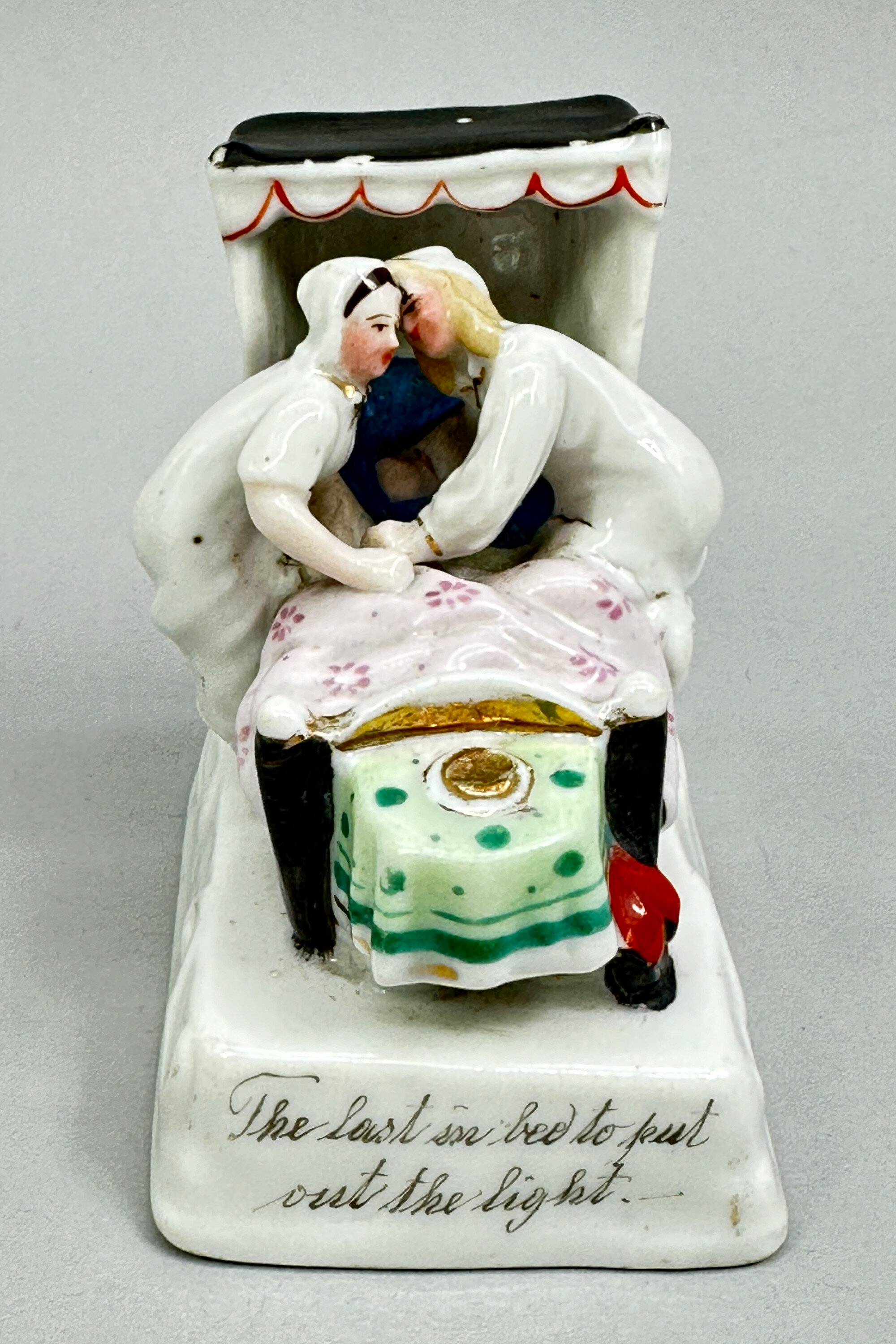
Fairing Figurine - The last in bed to put out the light, German, early Twentieth Century
Price: £25The various figures were made in white glazed porcelain with coloured decoration. The compositions were sculptural and often accompanied by an inscription, as here. Many models are known. Two typical examples are 'Returning from the Ball' and 'Twelve Months after Marriage' but the most common example is represented here 'The last in bed to put out the light'. A couple are seen climbing into a covered bed at the foot of which stands a candle in a holder. These candles are usually broken off, most likely because of simple damage over the years but it has been suggested that this was done deliberately for good luck.
Some of the fairing figurines are marked, as here. In comparison with the previous Lot 4, this example has a glazed circular mark which reads 'Made in Germany'. These marks appear on the later productions of the Conta factory and indicate a dating here to shortly before the First World War. This is consistent with the rather 'brassy' looking gilding used which is typical of ceramic production generally post 1900.
It is interesting to compare Lots 4 and 5 and to see how consistent the manufacture was throughout the period. Only the glazed base with its circular mark and the type of gilt decoration separate this example from its earlier companion.
Fairings have been collectors' items for many years now and still hold a naif charm which makes them appealing display items, with a history of their own.
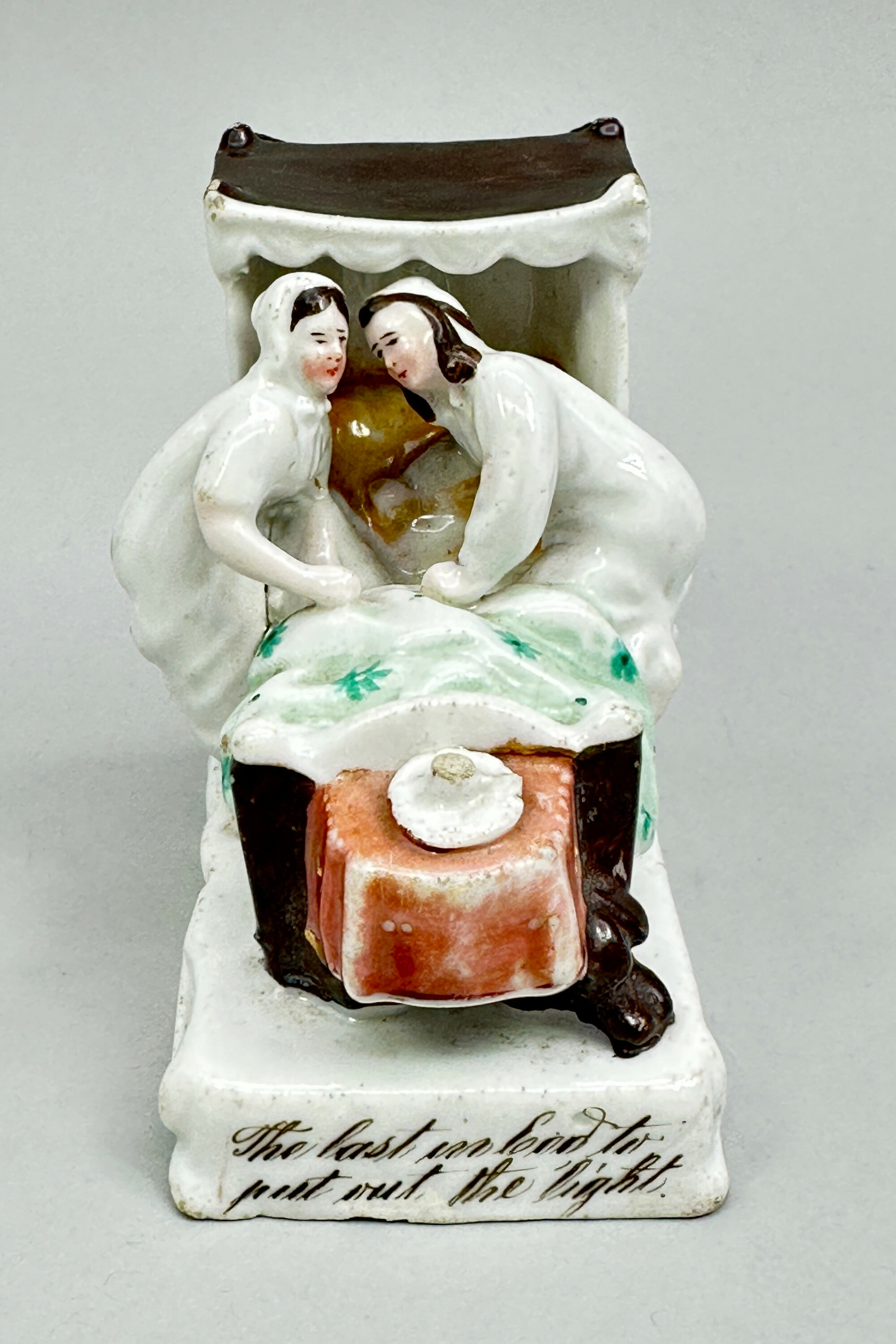
Fairing Figurine - The last in bed to put out the light, German, late Nineteenth Century
Price: £25The various figures were made in white glazed porcelain with coloured decoration. The compositions were sculptural and often accompanied by an inscription, as here. Many models are known. Two typical examples are 'Returning from the Ball' and 'Twelve Months after Marriage' but the most common example is represented here 'The last in bed to put out the light'. A couple are seen climbing into a covered bed at the foot of which stands a candle in a holder. These candles are usually broken off, most likely because of simple damage over the years but it has been suggested that this was done deliberately for good luck.
Some of the fairing figurines are marked, as here. The impressed number '2851' comes from the first series of figures produced by the Conta factory with numbers ranging from 2850 to 2899. The earlier examples do not have the shield mark found on most of the pieces which indicates an earlier dating here, more towards the middle of the nineteenth century.
Fairings have been collectors' items for many years now and still hold a naif charm which makes them appealing display items, with a history of their own.
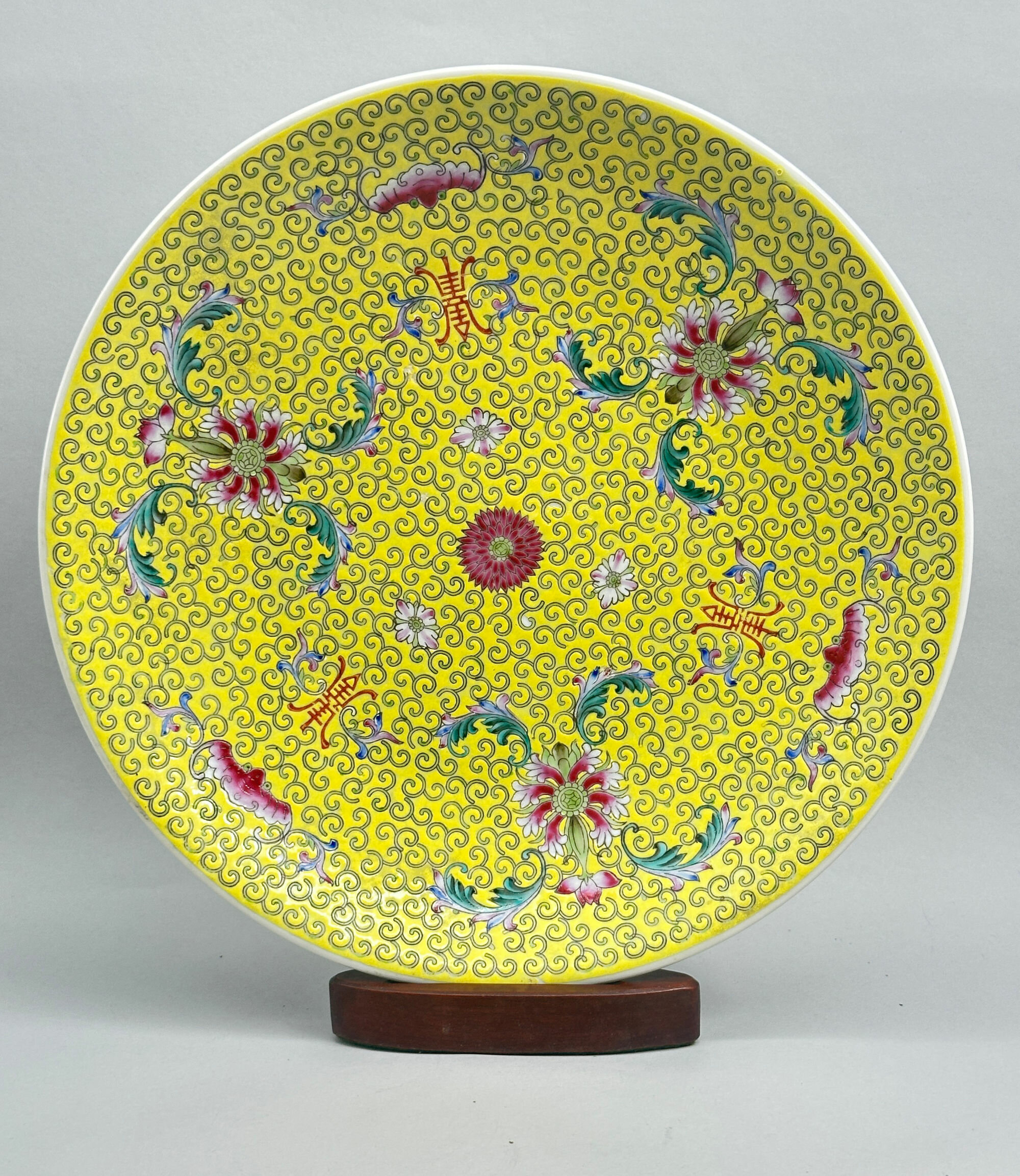
Chinese Yellow Ground Famille Rose Charger, 1950s/early 1960s
Price: £55This is a fine example of the porcelains made at Jingdezhen, for centuries the chief centre of ceramic production in China, in the early years of the People’s Republic of China (1949-). Soon after the communists took control, the kilns at Jingdezhen were organised into co-operatives, each with a number. Many of their pieces were marked and the form of the mark determines the date of production. The circular marks, as here, were the earliest allowing a dating of this charger to the 1950s or possibly the early 1960s. Some of these conglomerates, for the quality can vary, retained the skills of their predecessors and produced works of high quality. This is clearly seen here in the careful and precise enamelling and the general artistry of the design employing ‘imperial’ yellow with the symbolism of happiness (bats), longevity (shou symbols), friendship and a life of ease (chrysanthemum) and fruitfulness and offspring (lotus), all combining to produce a piece well worthy of its many predecessors.
Please note that the wood stand is for display purposes only and is not incuded with this lot.
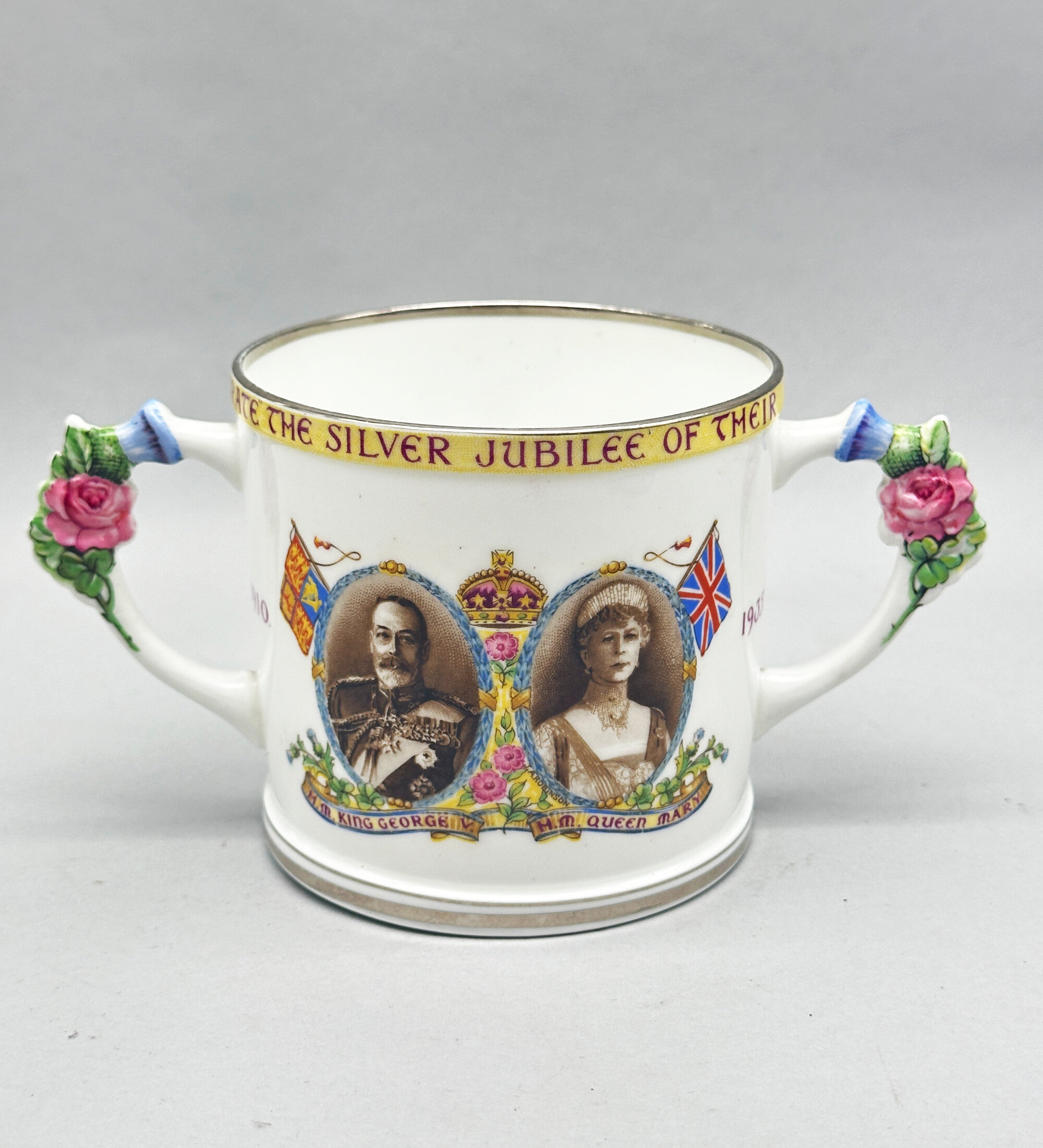
Cup Commemorating the Silver Jubilee of King George V and Queen Mary in 1935
Price: £55The Paragon China Company, formerly the Star China Company (see Lot XX), produced high quality gift items from 1920 to 1971, at first independently and then in alliance with other companies, finally being absorbed by Royal Doulton in 1972 who kept the ‘Paragon’ name until 1991. Commemorative wares were a speciality and this cup is a fine example.
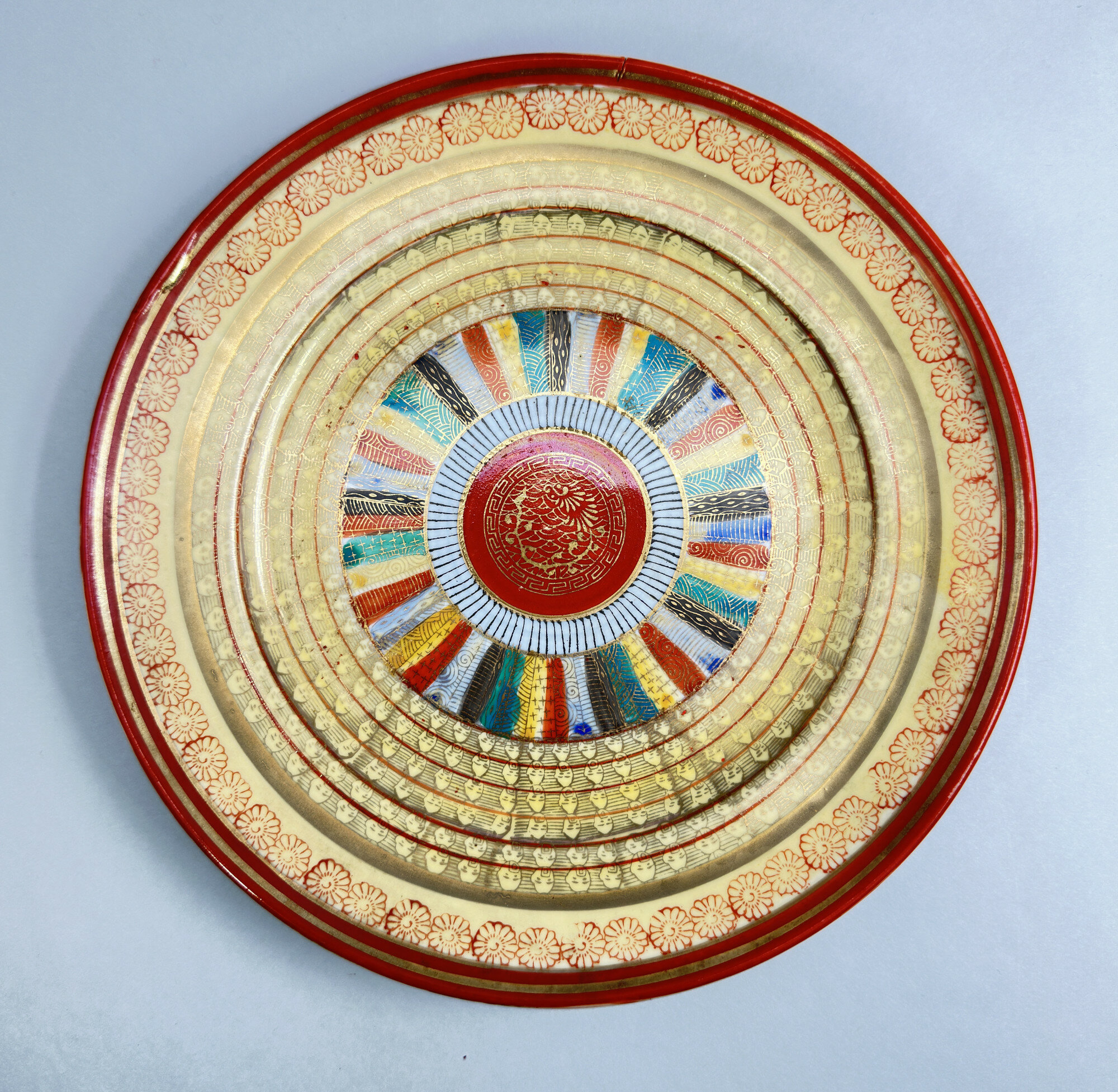
Japanese Kutani Dish decorated with the Thousand Faces pattern, first half C20th
Price: £45The colourings and style of work here clearly indicate the workshops of Kutani (the word means 'nine valleys') in the former Kaga province of Japan. By the nineteenth century the majority of their pieces were decorated in iron red and gold but sometimes with other colours in addition, as here. The ‘thousand faces’ pattern (an apocryphal term and this cataloguer has not attempted to count the number of faces appearing here) seems to have been evolved around the end of the nineteenth century and then continued in production until the mid twentieth. Both plates in various sizes and even tea sets are found in the design. The mark ‘Made in Japan’ was usually employed after 1941 (in the previous twenty years ‘Japan’ was the norm) but there are exceptions and the paste of the foot rim here does suggest a slightly earlier date, perhaps around 1930. In perfect condition, with very little wear to the decoration, this piece is a fine example of a rather eccentric decorative patttern.

Charming small amber pendant brooch set as an owl c2000
Price: £15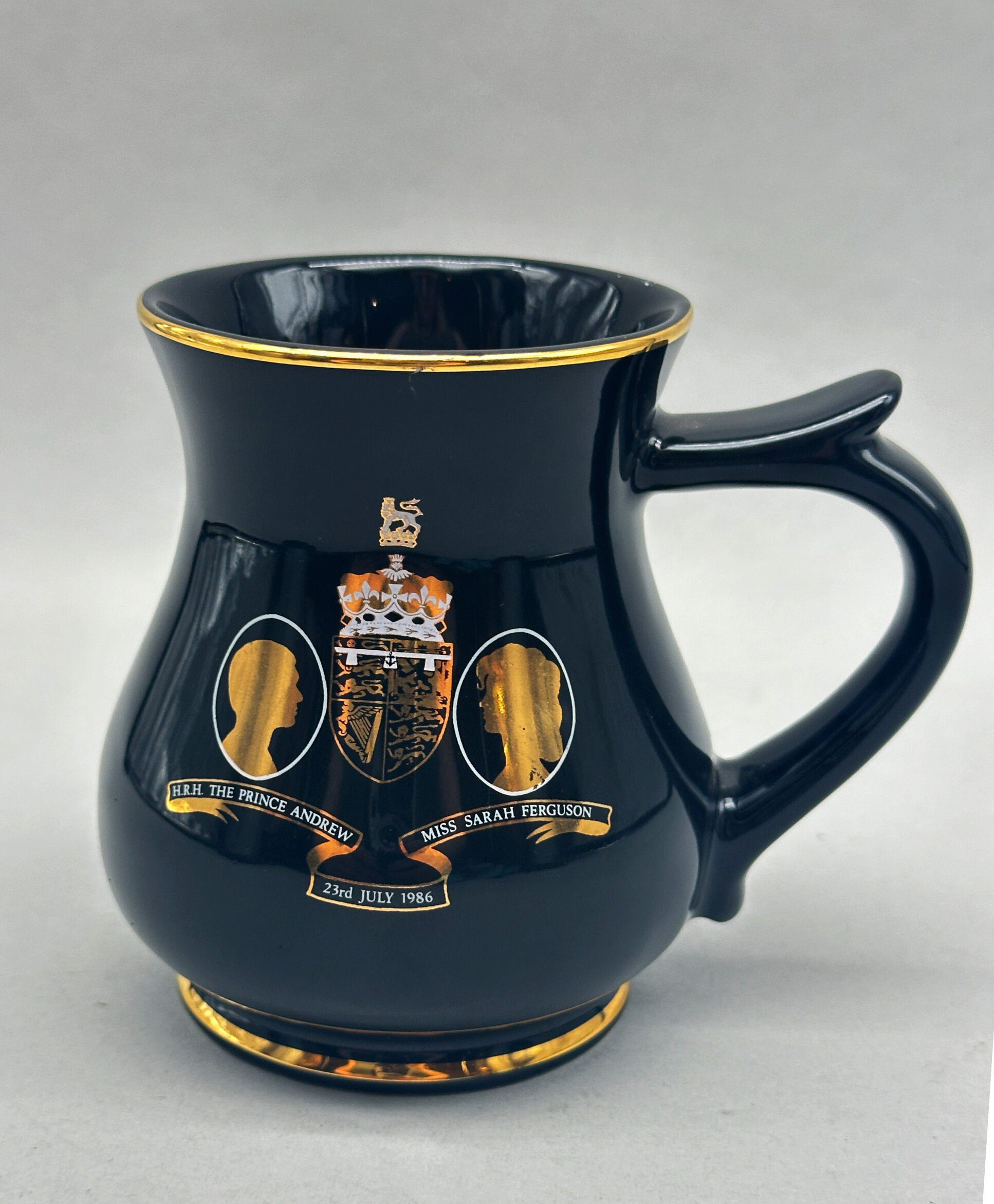
Ceramic Tankard celebrating the Marriage of Prince Andrew and Sarah Ferguson in 1986
Price: £10
1950s Regency style needlepoint kit bag
Price: £75
Brass and Enamel Campaign Serving Set, Made in British India mark, 1920s
Price: £45
Chinese Soapstone Brushwasher decorated with flowering Lotus, early 20th Century
Price: £45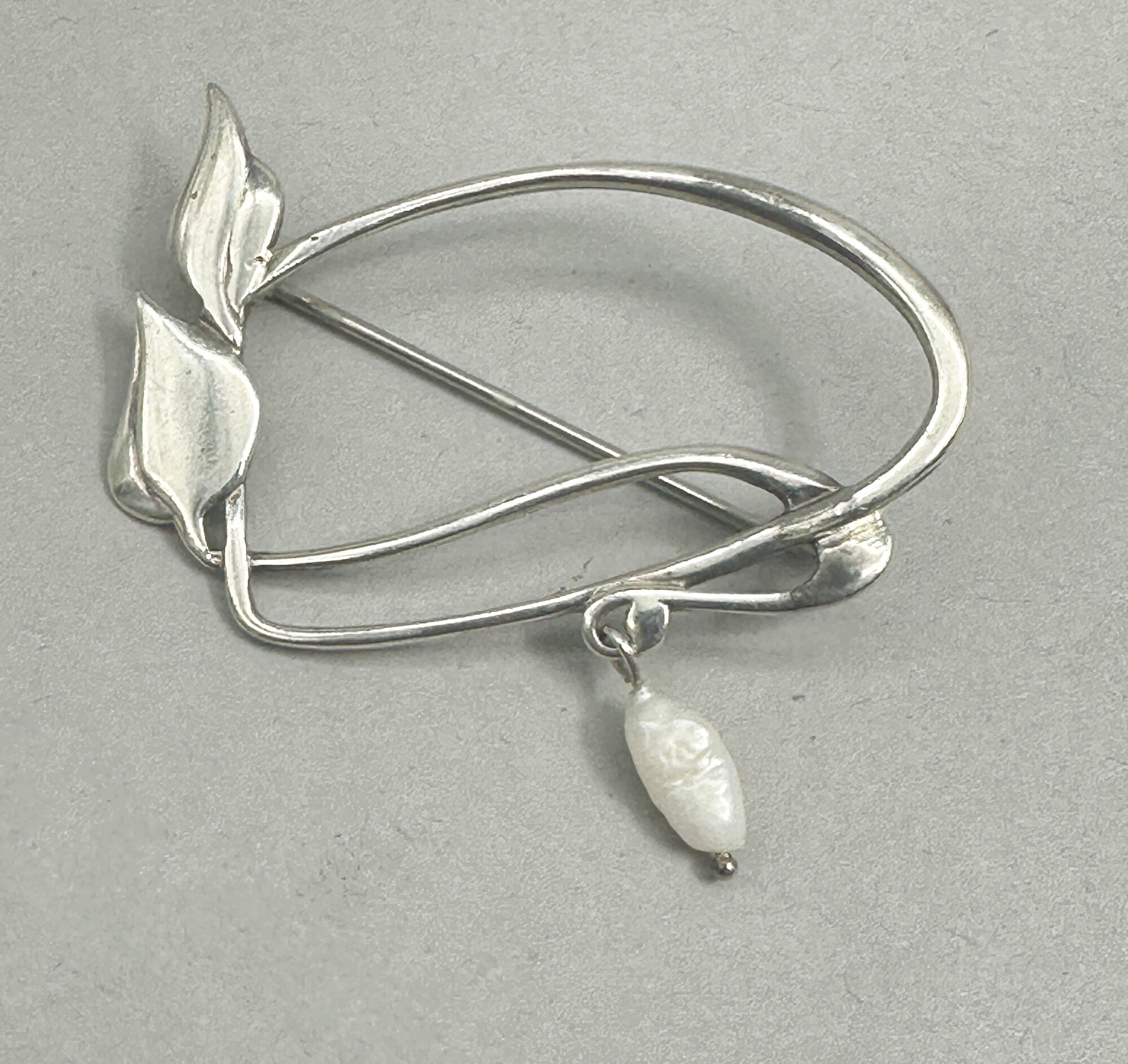
Rennie Mackintosh Arts and Crafts silver brooch
Price: £25
Vintage Brass Pocket Case with a lid, probably a Vesta case for Matches, circa 1900
Price: £55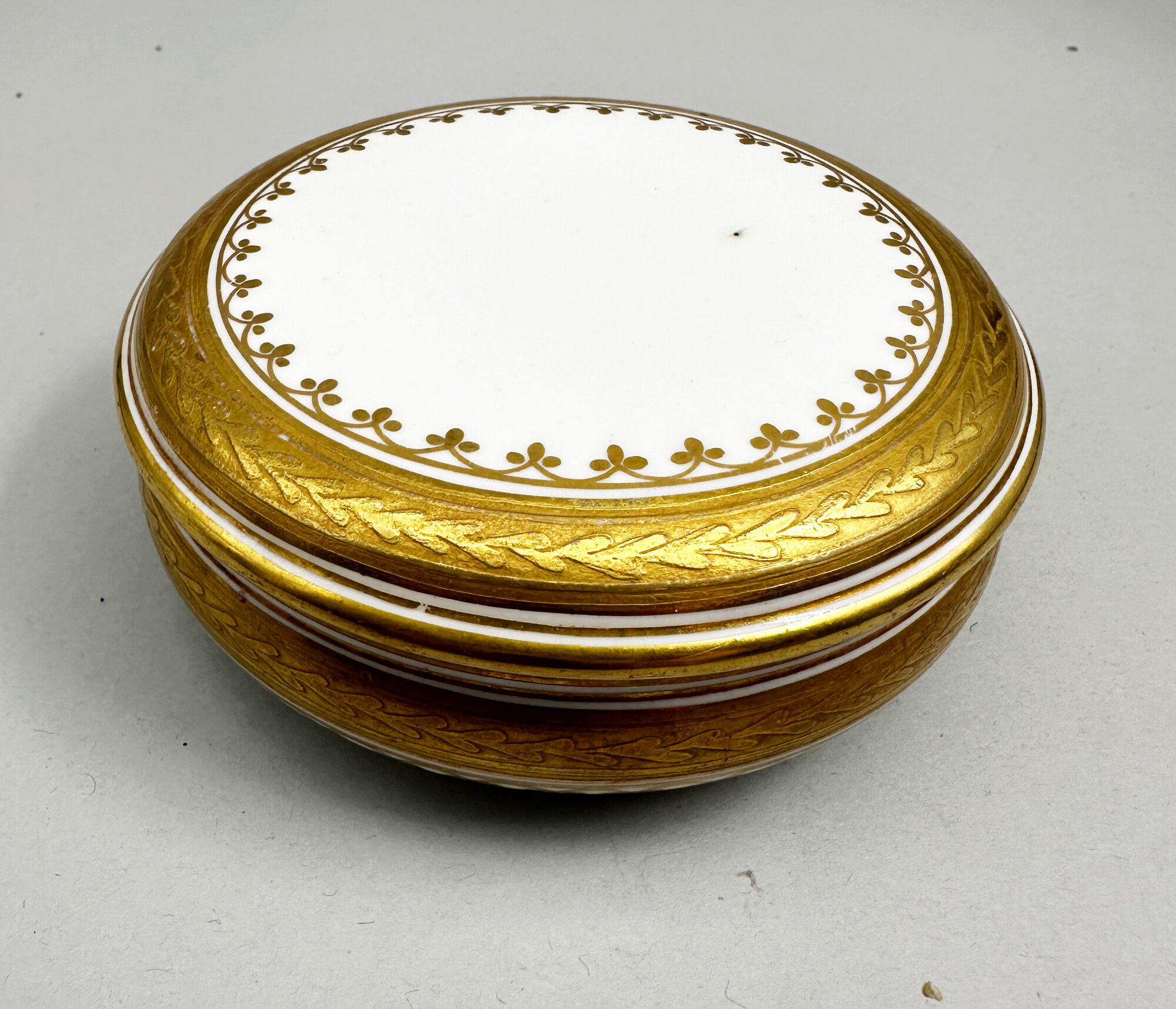
Gilt decorated English porcelain powder box and cover, probably mid C20th
Price: £15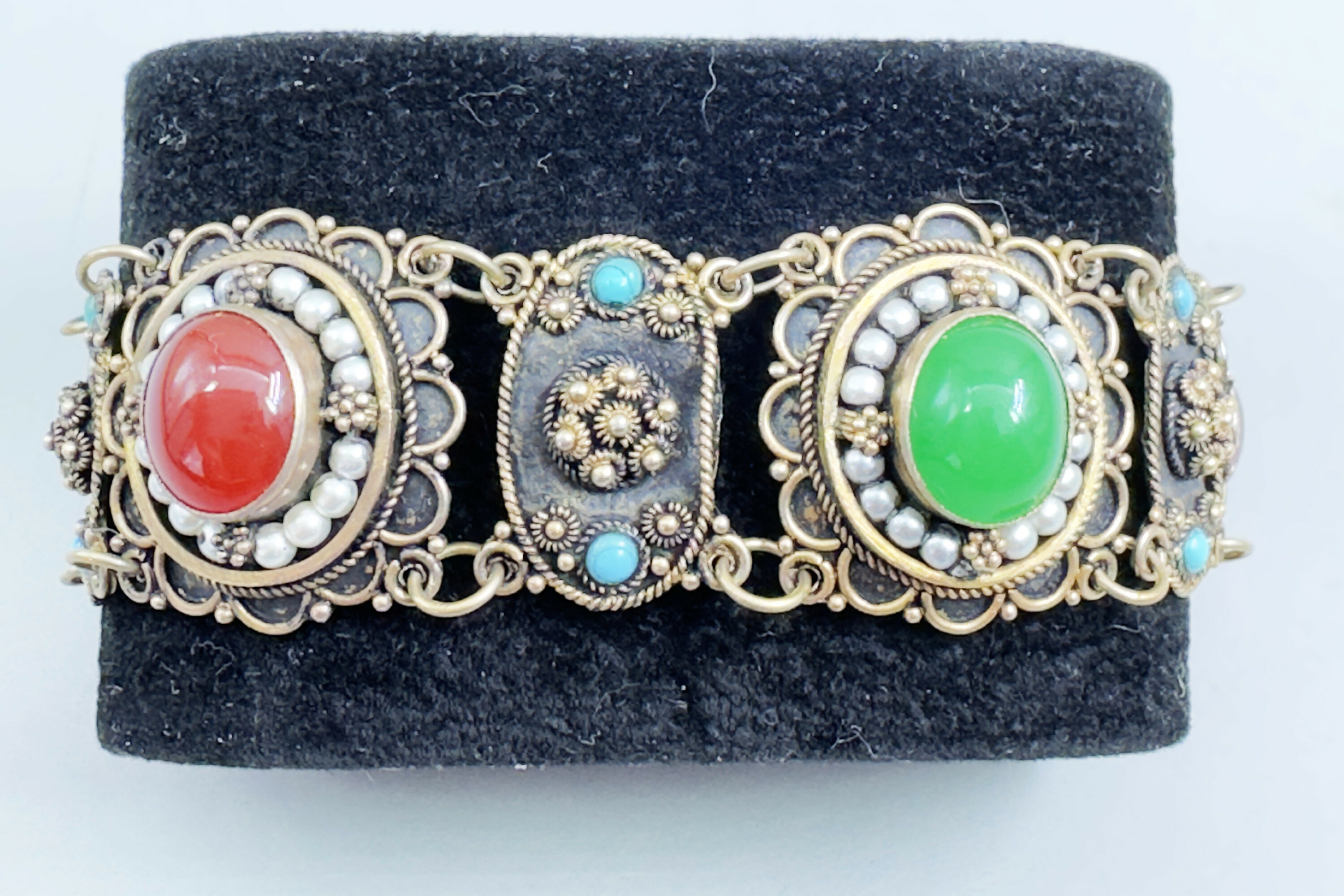
Victorian silver gilt filigree bracelet, Morocco
Price: £95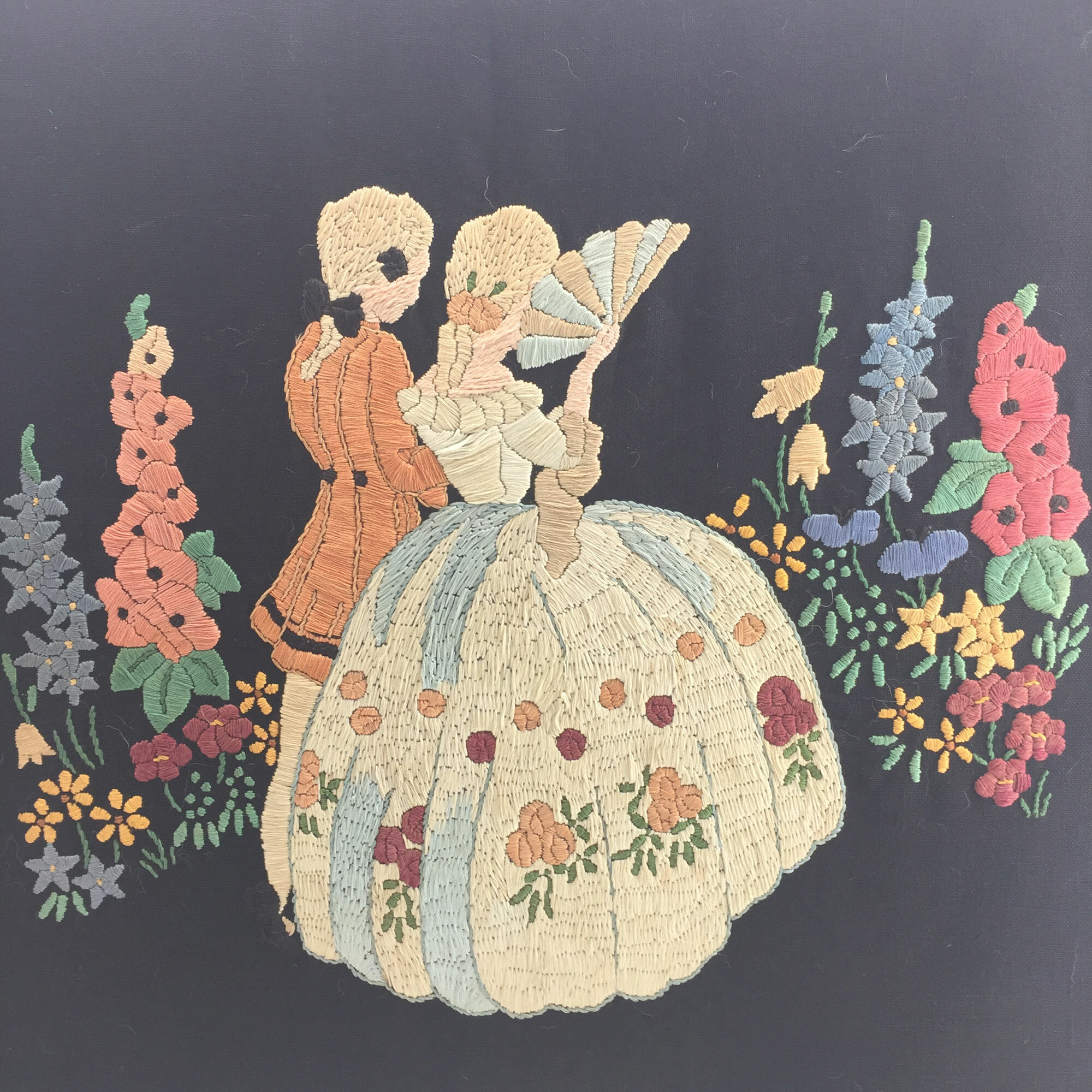
Arts and Crafts Stumpwork Firescreen 1900
Price: £25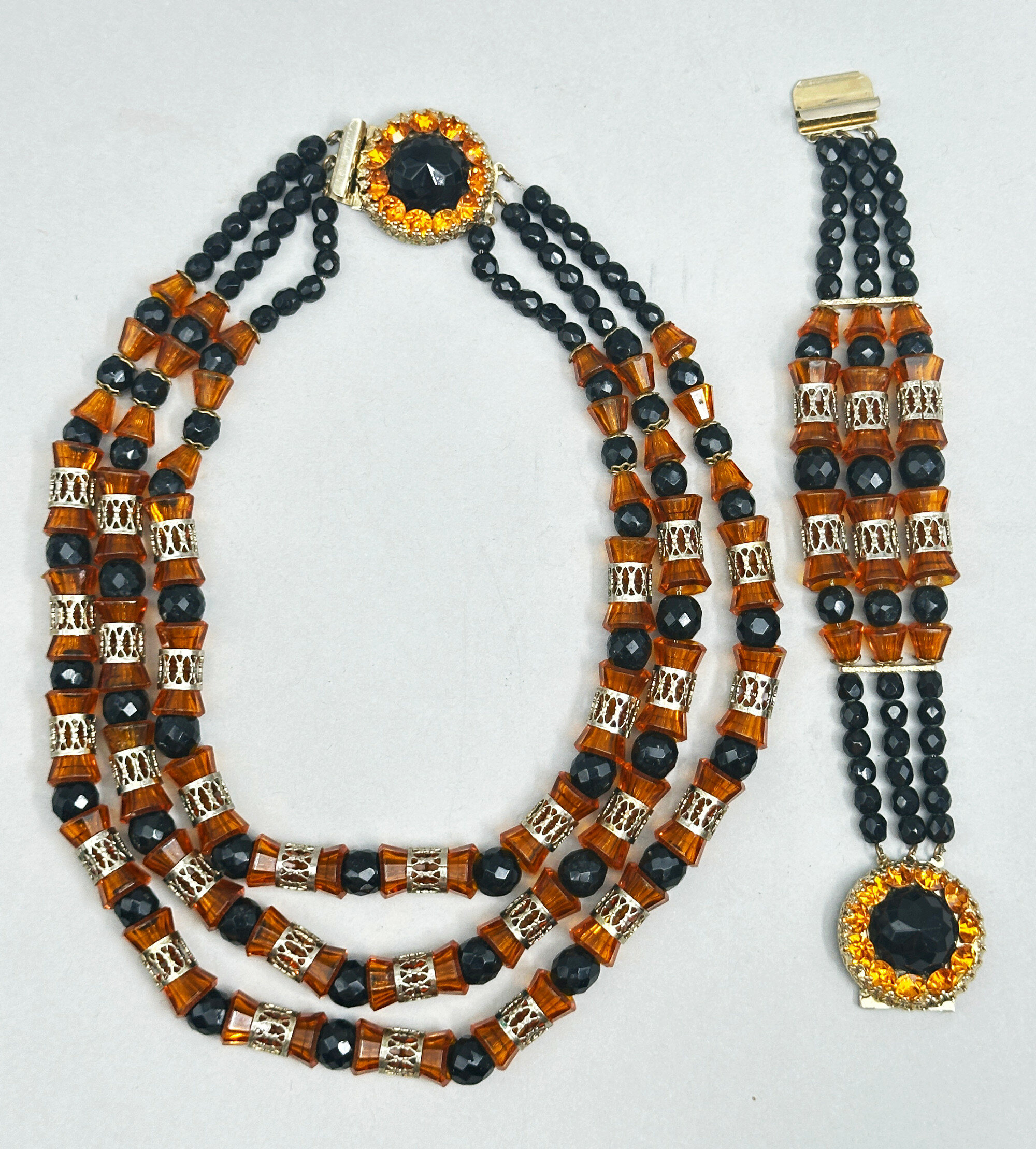
Stunning suite of necklace and bracelet by Hobe 1950s,
Price: £350Hobe was founded in 1887 by the French goldsmith Jacques Hobe as makers of fine jewellery. The costume jewellery division, Hobe Cie, was added 40 years later by his son, William Hobe, who brought the firm to America in 1927 and was commissioned by Flo Ziegfeld to design and manufacture jewellery for his Ziegfeld Follies costumes. By repute this is the origin of the expression costume jewellery. Production continued from the 1930s to the 1990s and the form of mark here suggests a more later dating within their range.

Victorian Silver Buckle set with Paste Stones, German circa 1900
Price: £85The sparkling stones and high quality mounting (there is a considerable weight of silver in this piece) would have made this buckle a notable addition to the Victorian ladies' wardrobe and it could equally well catch the eye today.

Ring Tail Lizard Skin Minaudiere with a strap handle marked JD, 1930s
Price: £95This example opens out on one side (the clasp is rather stiff) to reveal a mirror and two lidded powder compacts (complete with the guaze liners) and a holder for a comb (now missing) and on the other where there is a cigarette holder and a compartment presumably for matches. On the lid of this is a pouch doubtless intended as a purse. At the end is a pull out lipstick holder with a small strap and the piece hangs from a strap handle marked with the initials JD.
The piece is in remarkable condition for its age and recalls an era of elegance which a contemporary user might emulate on some special occasion.
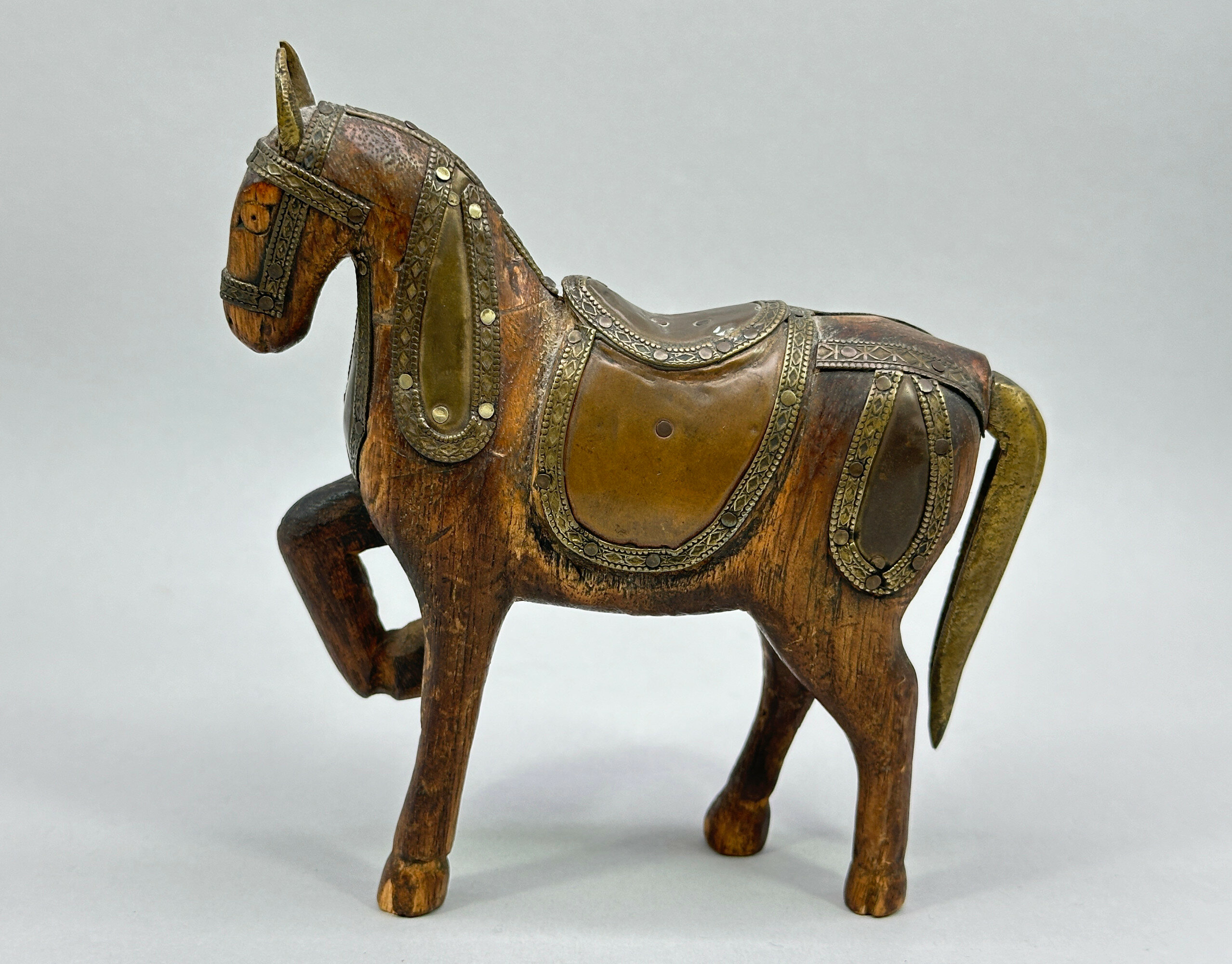
Indian wooden toy model of a Horse with metal fitments, early C20th
Price: £25
Classic black crocodile handbag 1940s
Price: £75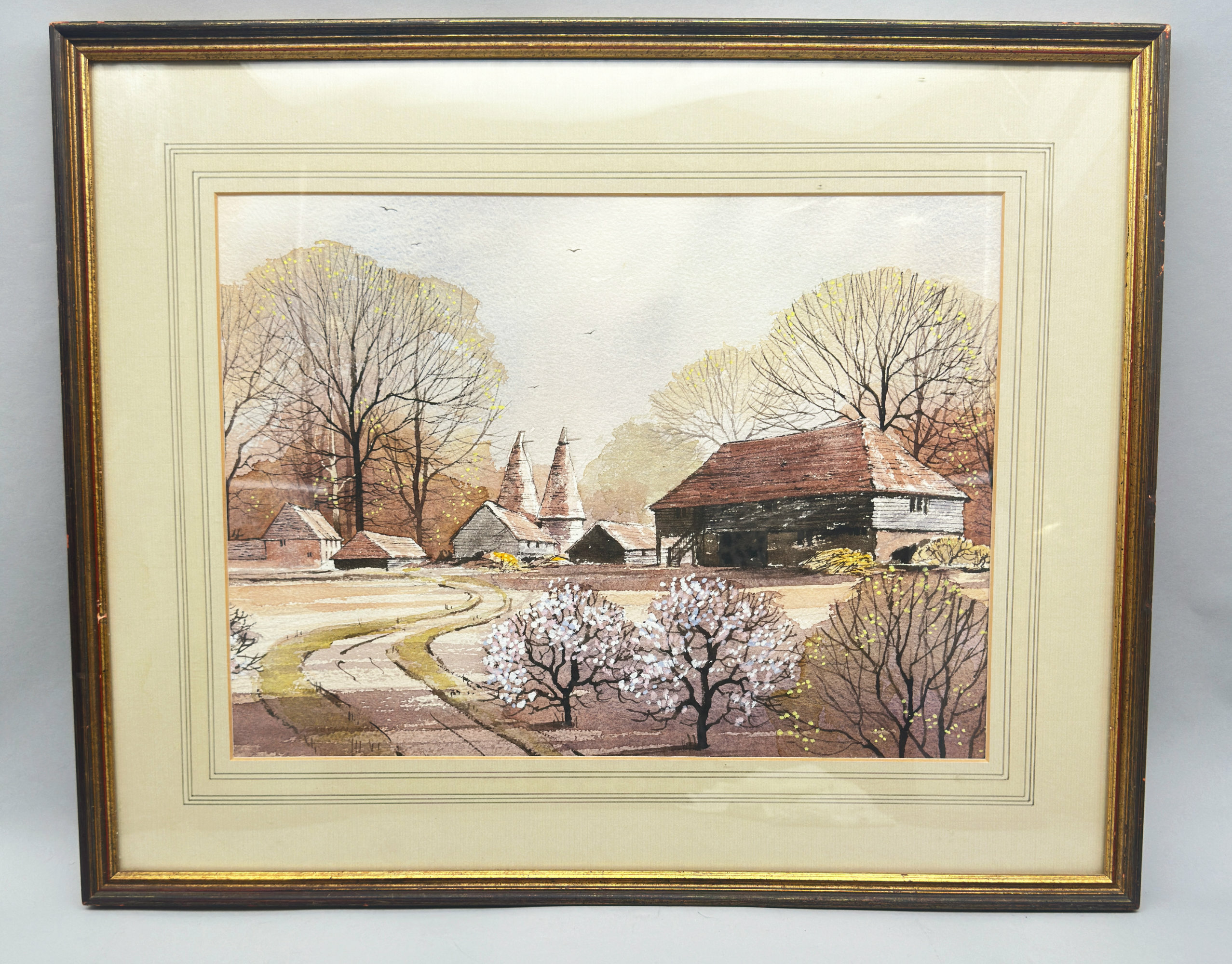
Watercolour by Elisabeth Castle, Kent Landscape Scene, framed, late C20th
Price: £45
Striking continental silver modernist bracelet c1960
Price: £55
Constructed necklace with jade, egg yolk amber and cherry amber
Price: £250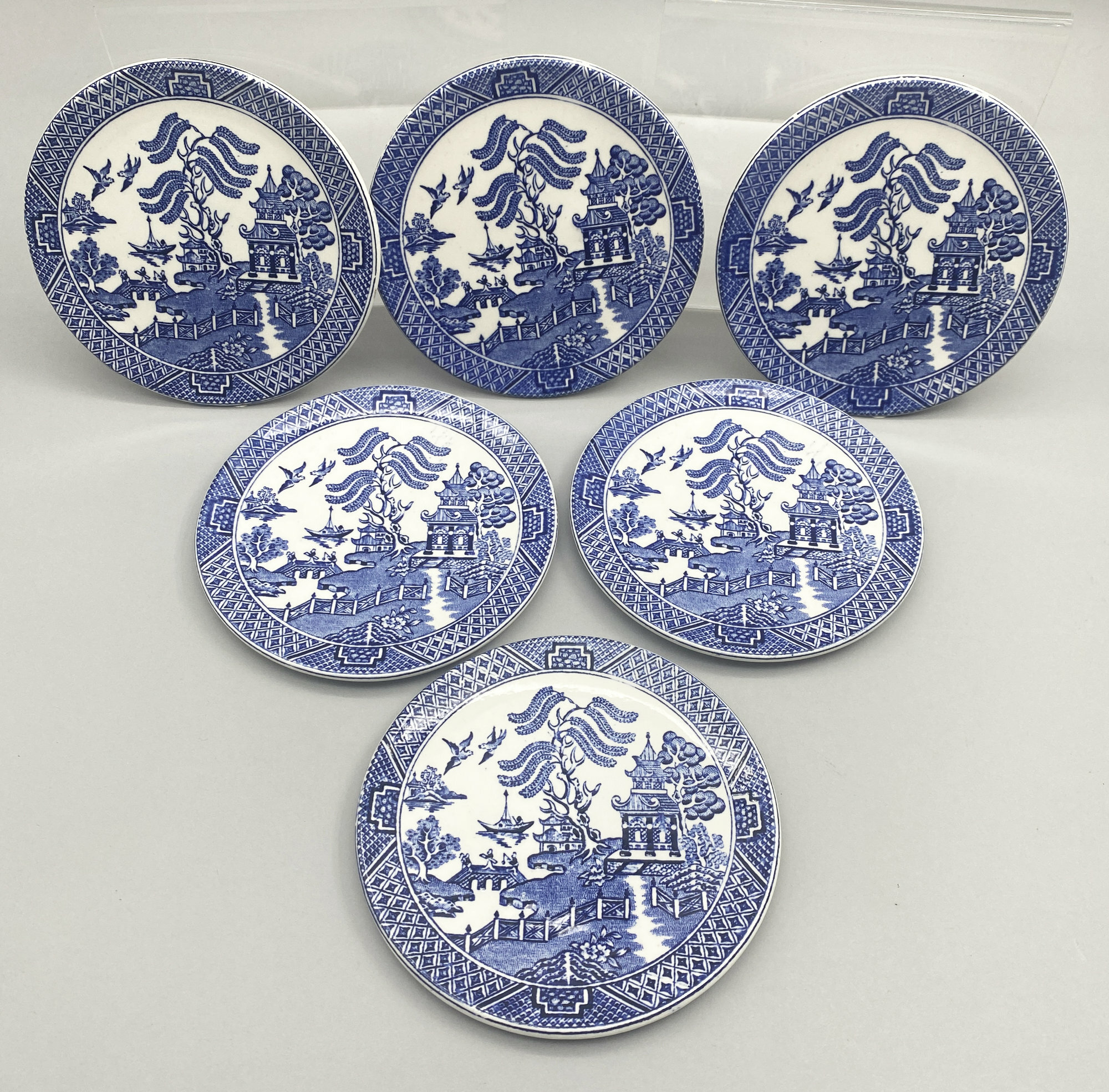
A Set of Six Blue and White Willow Pattern Coasters English Ironstone 1980s
Price: £25These coasters formed part of their range. The decoration employs the transfer pattern technique developed in England in the mid eighteenth century and a staple of nineteenth century productions. Printed designs were 'transferred' to the ceramic surface allowing the production of extensive services in a matching pattern. The Chinese derived 'Willow Pattern' design seems to have been first used around 1790 and was probably designed by Thomas Minton for Spode. All the versions contain similar elements besides the pagodas and landscape scenes most notably the three figures on a bridge and a pair of flying swallows. In order to promote sales, various stories were invented based on elements of the design. These coasters are an amusing recollection of times past and highly practical in addition.

Chinese Reverse Painted Glass Globe depicting deities and attendants, Modern
Price: £45
Chinese Reverse Painted Glass Globe depicting tigers, Modern
Price: £45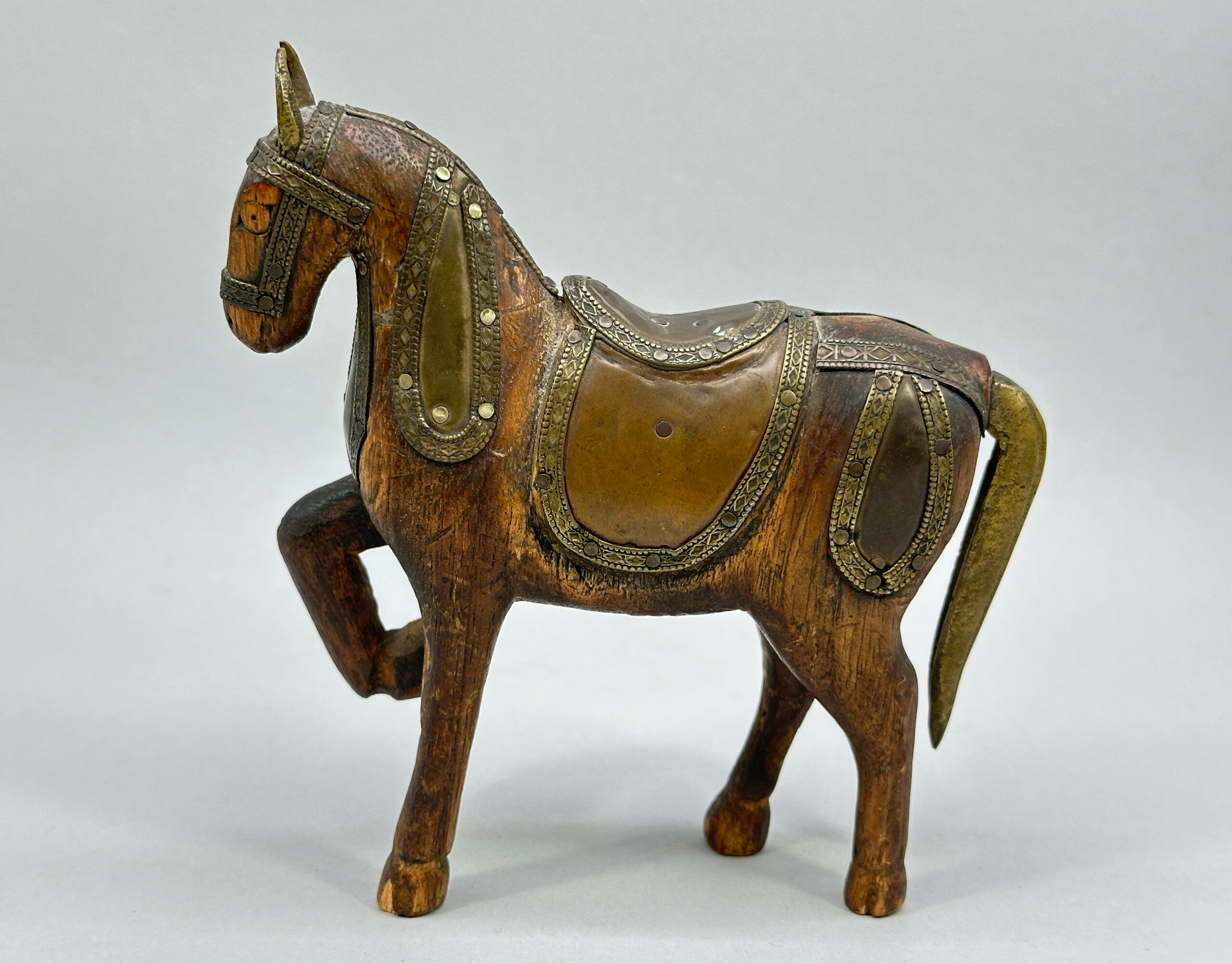
Indian wooden toy model of a Horse with metal fitments, early C20th
Price: £25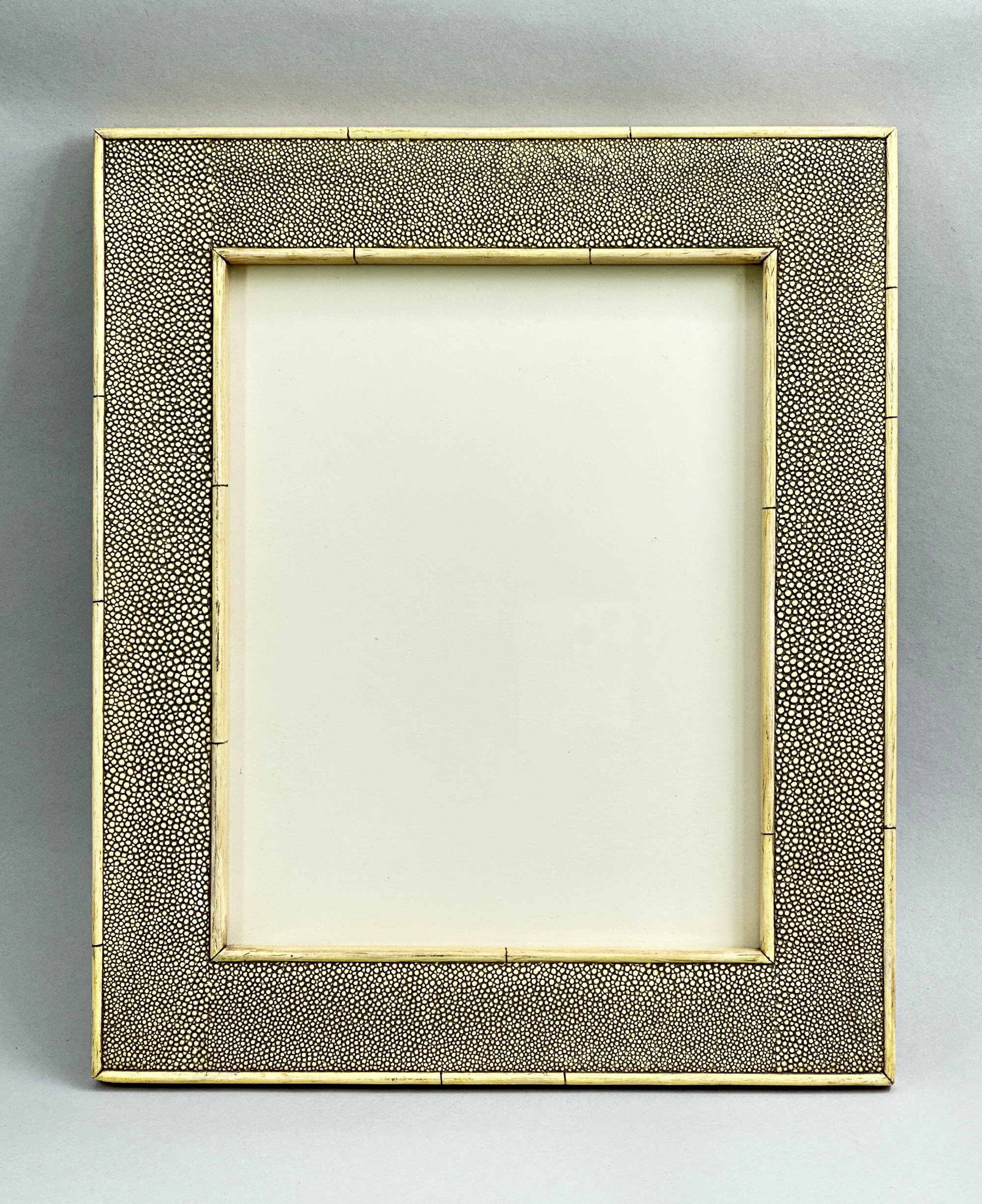
Art Deco Shagreen Picture Frame, 1930s
Price: £110Shagreen is a natural hide, typically from shark, stingray or dogfish, worked through special processes to produce a granular surface effect. Known in China and Japan from the earliest times and popular in Europe in the eighteenth century Shagreen enjoyed its greatest popularity in the Art Deco period where it was used as a covering for writing desks and well-dressed cabinetry and smaller items such as the picture frame we have here. The clean lines of this piece and the palette of colours employed fit exactly with the ethos of the Art Deco period and a dating to the 1930s is extremely likely. A luxury item at the time it could be used now to provide enhanced presentation of a favourite image adding to it a hint of true elegance.
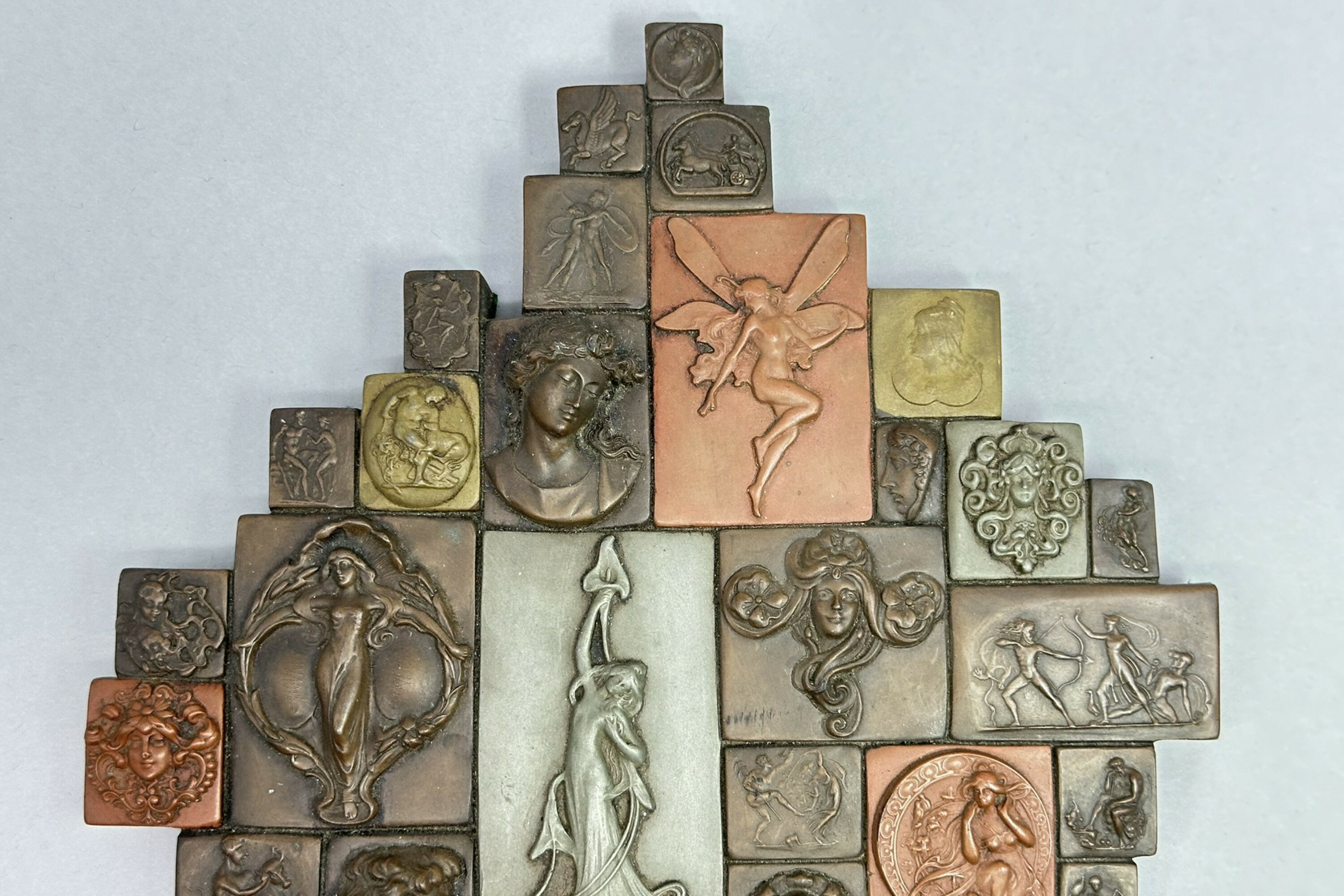
Wall plaque by Giovanni Schoeman depicting classical style figures, 1970s
Price: £75While Art Nouveau in style, Schoeman only perfected these techniques in the late 1960s, producing pieces in the style from a studio in Kentish Town which sold well in the London outdoor art markets. In the late 1970s, Schoeman moved to America with the intention of producing large scale art but the venture foundered and he died in 1981. This plaque, of which other examples are known, must have been one of his most popular designs in those London years and is a striking example of the techniques he developed and mastered.
